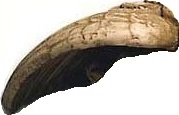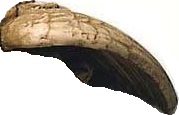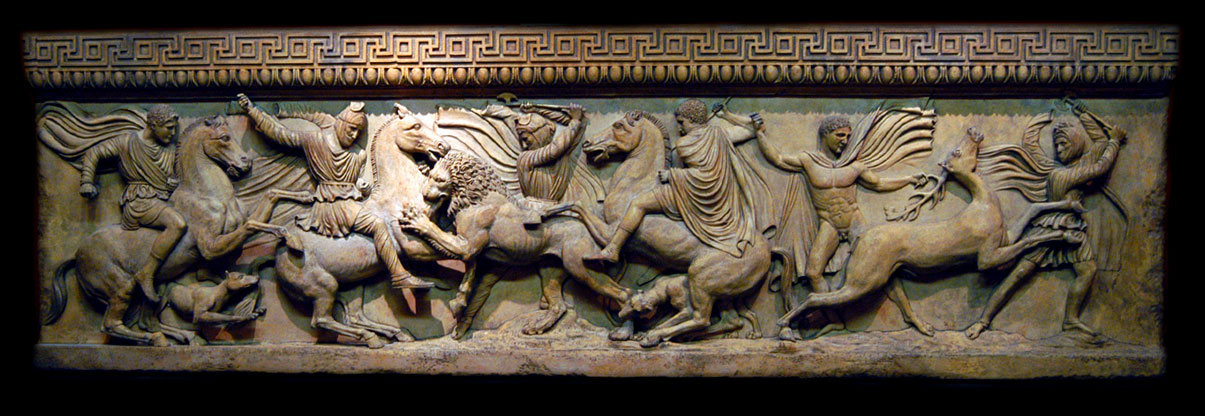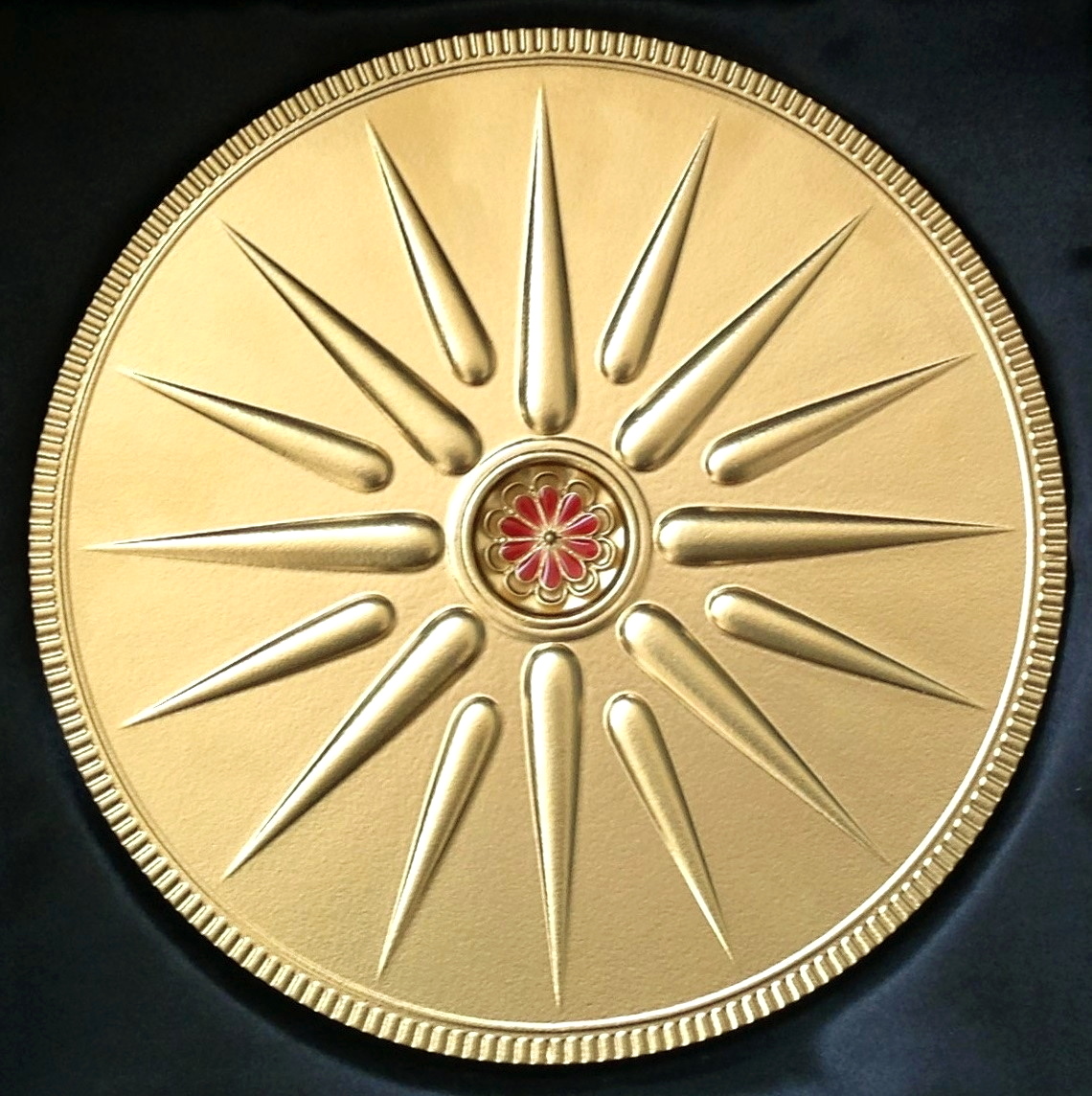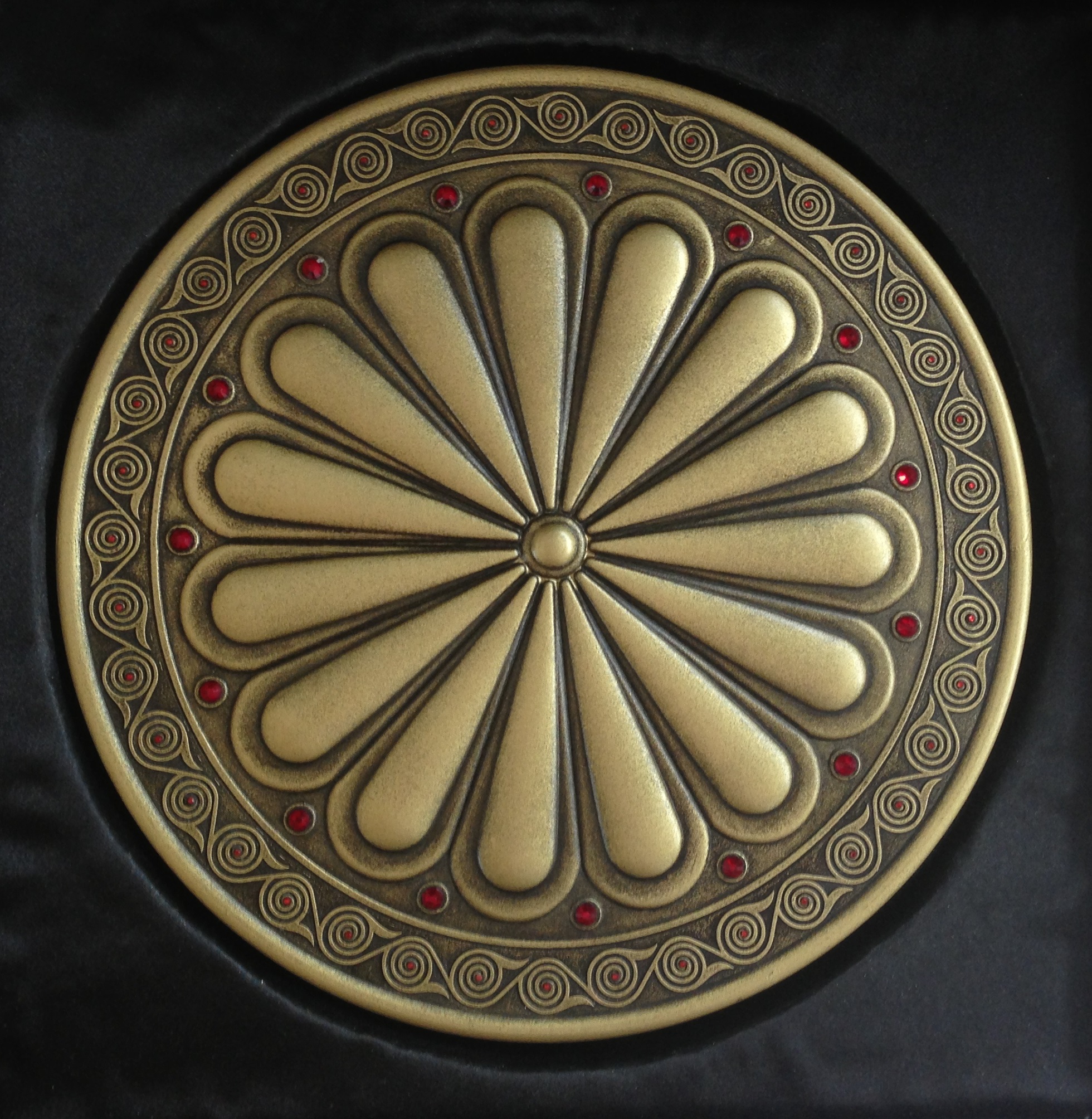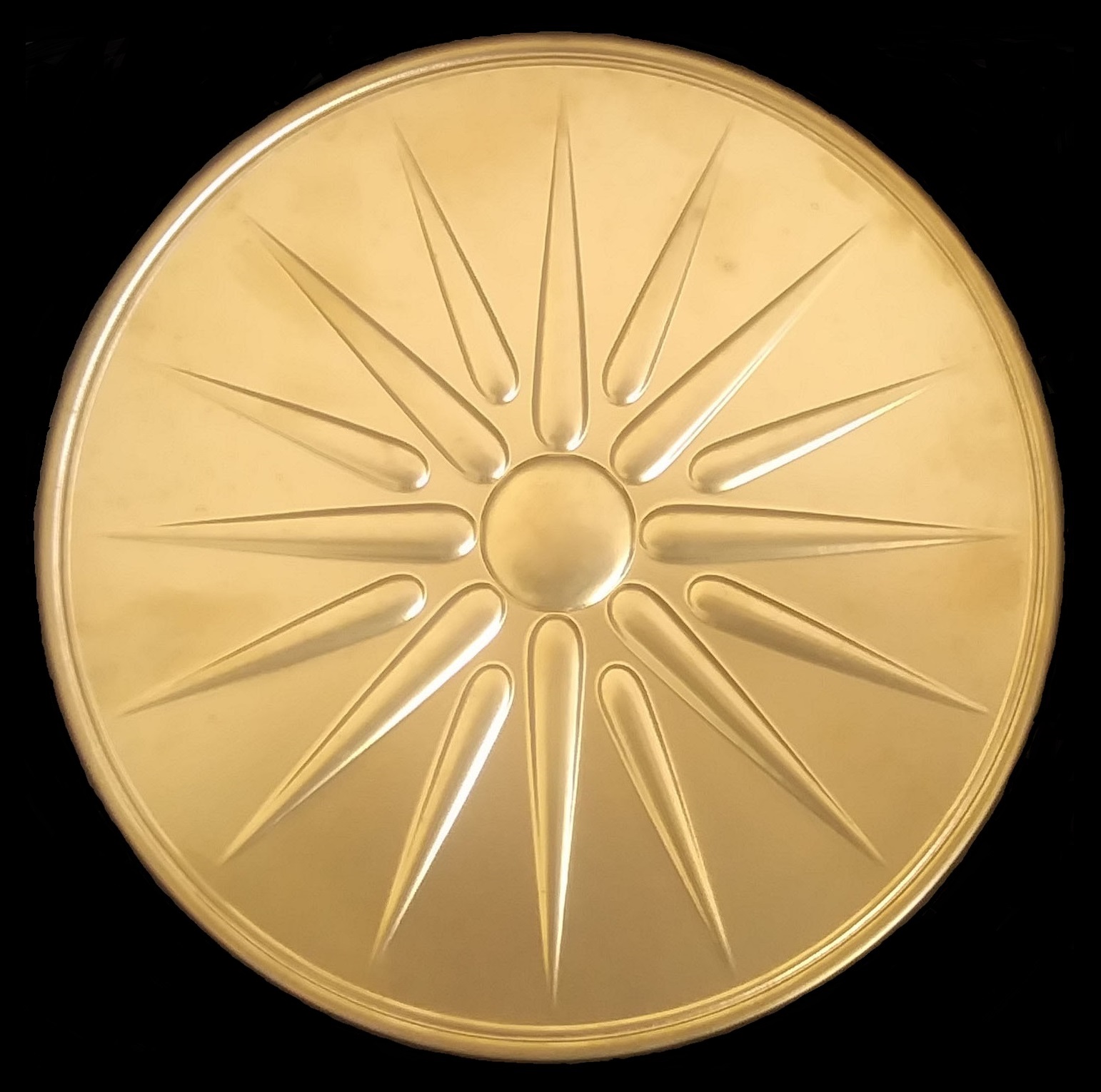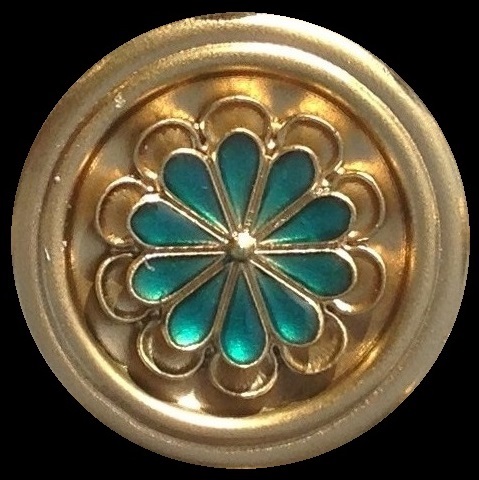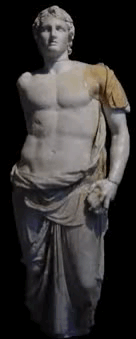|
|
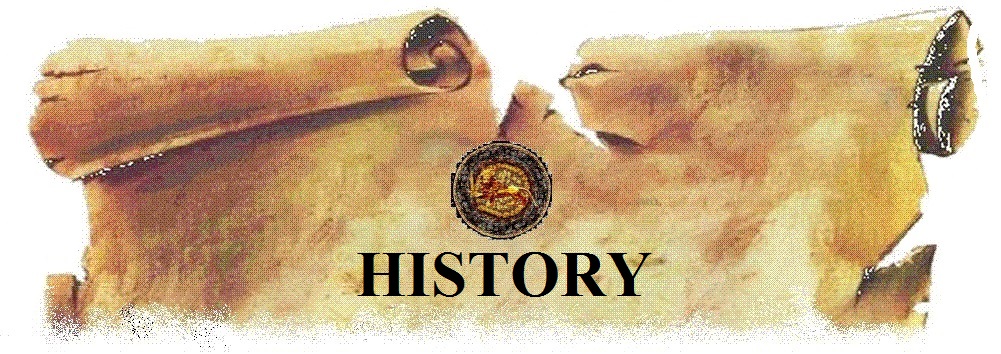
29 / Ma / 2019 Маkedonia
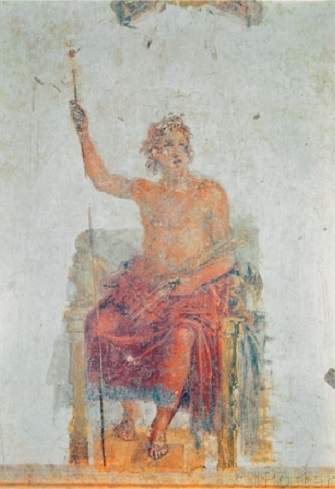
THE MAKEDONIAN VASILEON
(King of Kings) ALEXANDROY MAKEDONON
"Greeks ", "Hellens", "Greece" or "Ellas", "Hellas", such a thing does not exist in antiquity.
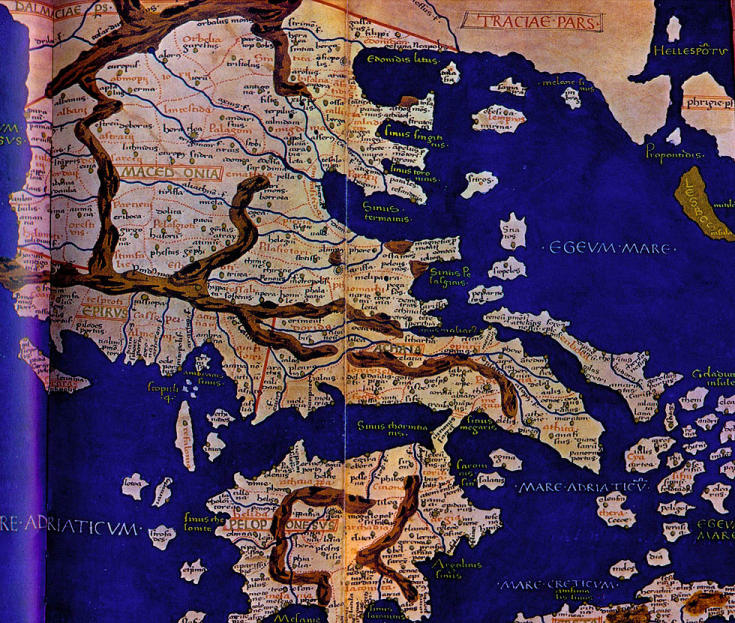
In antiquity do not exist: "ancient Greeks", "hellens", "ellens", "ancient Greece" or "Ellas", "Hellas", such a thing does not exist, nor did it exist before 1827 on paper, and in practice only after 1835.
If you don't believe it, find them on this ancient map.
The "hellens" or "ellens" are Latin invention and refers to religion, ''people who believe in the sun god'' and it's are not refers the nation.
The members of the Achaean League were "Greeks" for the Romans. Of those "Greeks" only the Adzaians (Danai's) were Africans, the others were Bellasti (Pellasgians) - whites.
The Achaean military alliance was not a state, when they fell under Roman slavery, the Achaean League was dissolved and the territories became a Roman province. The Romans also added the territory of Sparta which was not a member of the Achaean League in the province.
Before the Romans came to the Peloponnese (Dze Peninsula), there were no Greeks.
VASILEON
MAKEDONON ALEXANDROY it cannot be considered and named
as a ''Greek'', and
Greece as a state appeared for the first time in history after
1830. Nubians of Nubia are the relatives of the Adzaians (Danai's)
from Adzena, Adzenika - the Peninsula of Dze (Peloponnese), have nothing to do with the
Makedonians, but not all of them were "relatives of the Danai's",
there
were also "ilots", indigenous, not assimilated
Pelasgians - the whites of the the Peninsula of Dze (Peloponnese).
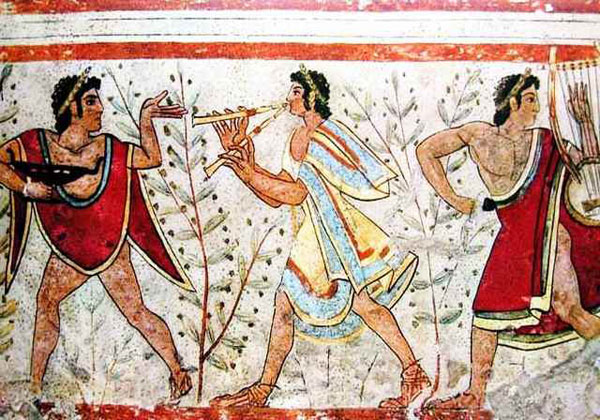
Wall painting - The Pelasgians -
the whites
Today's
Greeks have no linguistic, cultural, religious or
anthropological connection with the ancient Danai's, and Danai's do not exist anymore, they are the extinct race, linguistically and culturally. The Greeks are a new race that has no connection with the ancients
Today's
Greeks have no linguistic, cultural, religious or
anthropological connection with the ancient Danai's and ancient peoples.
Who thinks that is not the case, let him make a comparison with Danais language and Greek which are two different languages, even the letters are not all the same:
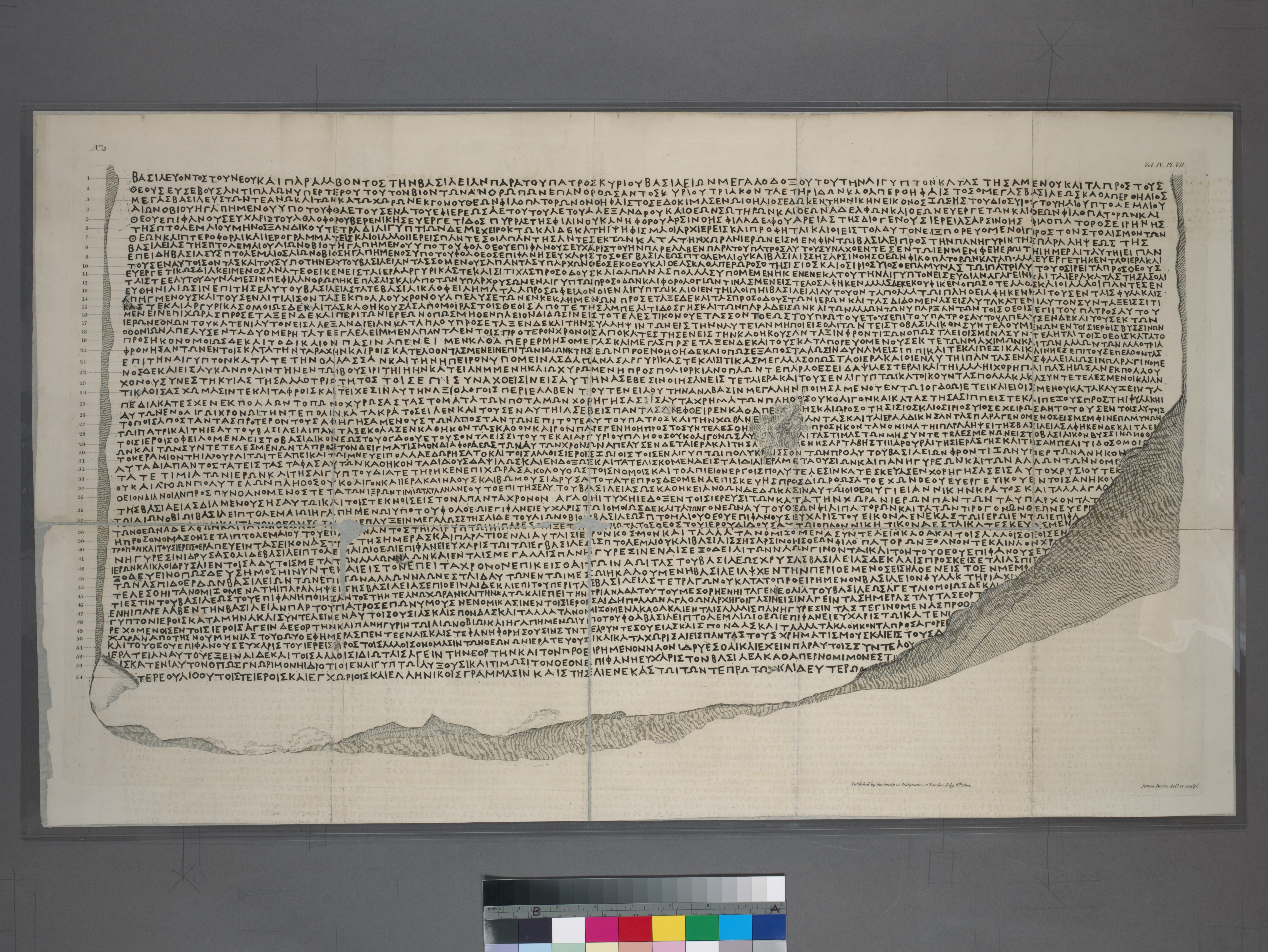 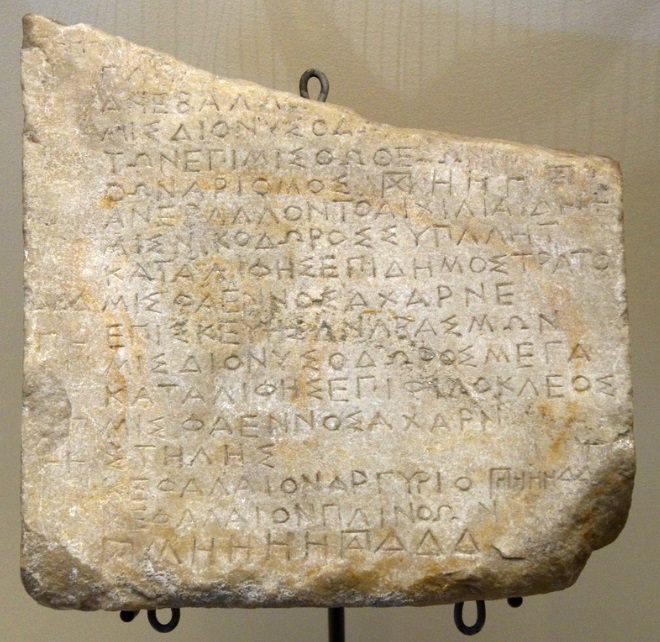 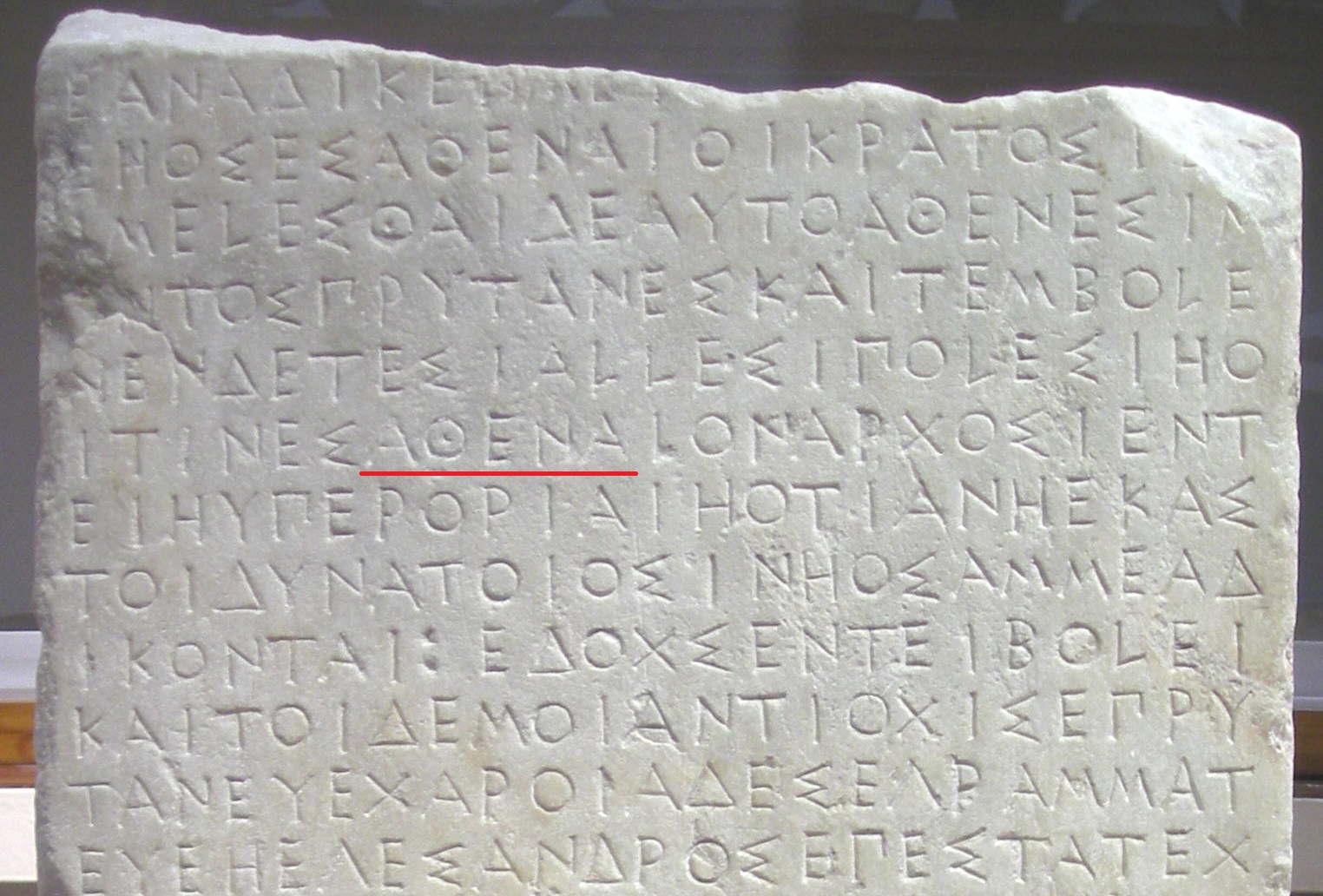 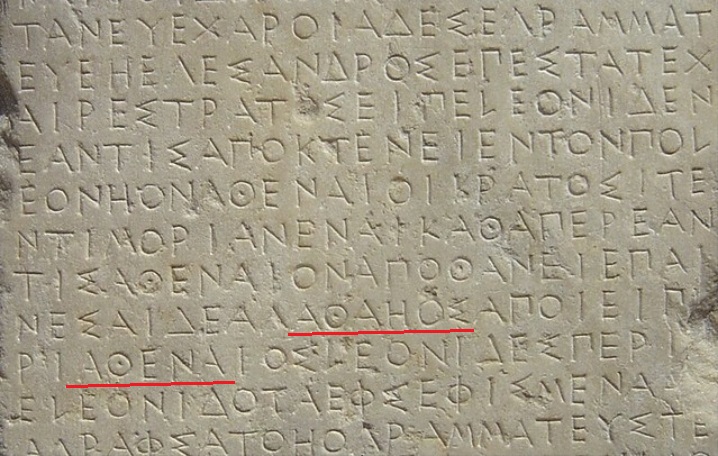
The ancient Danais language is TOTALLY DIFFERENT from the modern Greek language that was formed later in 1976 from the two dialects Katharevousa and Dimotiki, dialects spoken on some Aegean islands in present Greece. The priests from the islands spread the "Greek" language everywhere after the then population of the new state of Greece, because they did not speak the "Greek" language in 1829, normally, they were neither Greeks nor Danai's.
MODERN GREEKS TO UNDERSTAND THE LANGUAGE OF DANAI'S FROM THE TIRANS TIME OF ADZENA (IN THAT DANAI'S TIME) MUST STUDY THIS THE DANAI'S LANGUAGE IN SPECIAL UNIVERSITY. WHILE THE ALPHABET IS THE OLD MAKEDONIAN ''KOINON MAKEDONON'', they borrowed it from the church, which had previously modified it for their purpose from the Makedonian alphabet.
.
When Makedonians engaged in astronomy, from prehistoric times.
 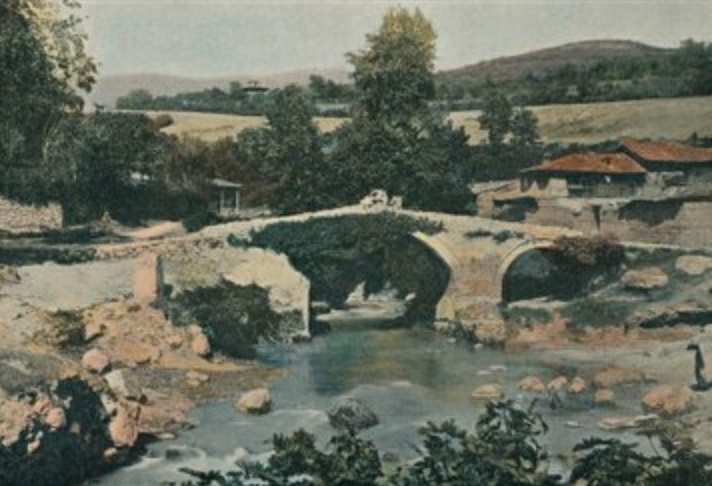
"Cosmos" is a Makedonian word, more precisely exactly 2 words:
"kos mos" - oblique bridge.
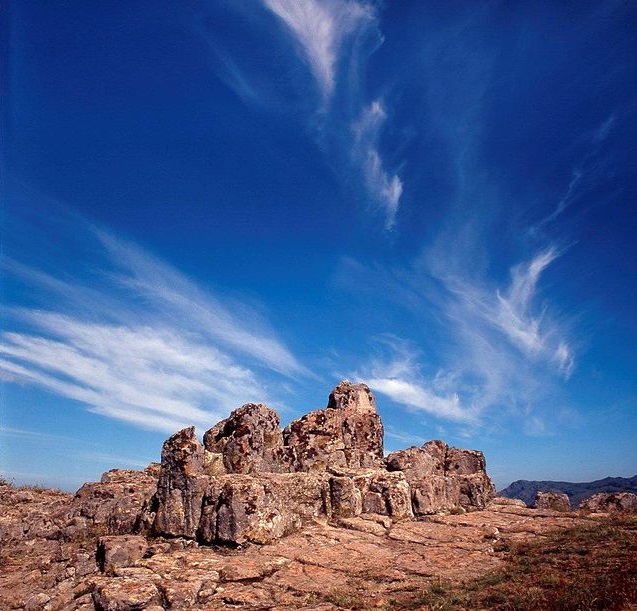
Proof is the Megalithic Observatory - Kokino - Republic of Makedonia, also recognized by NASA 2005.
The Kokino - the megalithic observatory, the early European Bronze Age. It shows signs of occupation for the period from the 19th to the 7th centuries BC. Finds from the Middle Bronze Age (c. 16th to 14th centuries BC) are the most numerous (mainly ceramic vessels, stone-mills, a few molds, and a pendant)
Kokino was briefly mentioned in a poster made by NASA's "Sun-Earth Connection Education Forum" in 2005.
NASA ranked Kokino in fourth place in the list of 15 such observatories in the world. The first four observatories according to NASA are:
1. Abu Simbel - Egypt
2. Stonehenge - Great Britain
3. Angkor Wat - Cambodia
4. Kokino - Republic of Macedonia
.
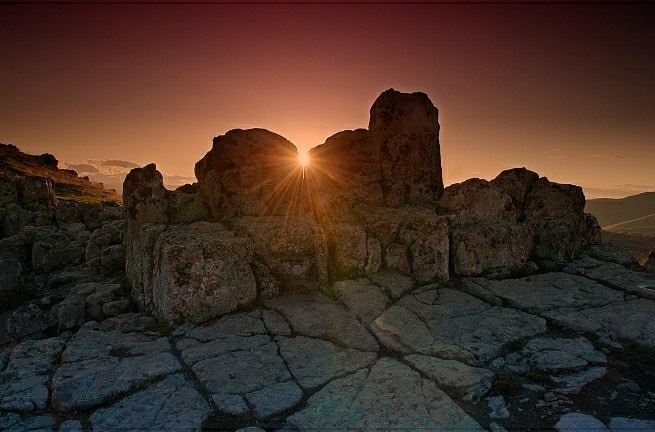
Magnificent - Kokino - the megalithic observatory in action
Kokino - the megalithic observatory, the early European Bronze Age. It shows signs of occupation for the period from the 19th to the 7th centuries BC. - Republic of Macedonia.
If you count, 4 millennia ago, you will come as you were, and then there was the Great Mother - Ma ke don i a.
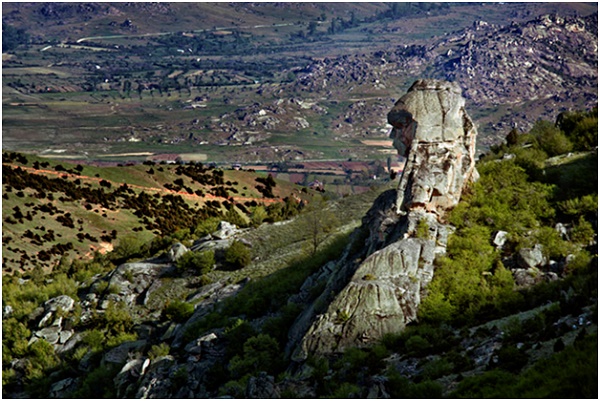
The Great Mother, a megalith from the vicinity of Prilep -
Republic of Macedonia, 4000 years of the Makedonian era. The monumental sculpture of the Great Mother with three faces 67 m high. is located on Selecka Mountain in Republic of Macedonia, in the direction east of the city of Prilep, three kilometers east of the village Selce.
Today's poor Greeks do not even know or have heard of the Great Mother, and they want to be bigger
"Makedonians" than the Makedonians themselves, this is a
tragic-comedy, real.
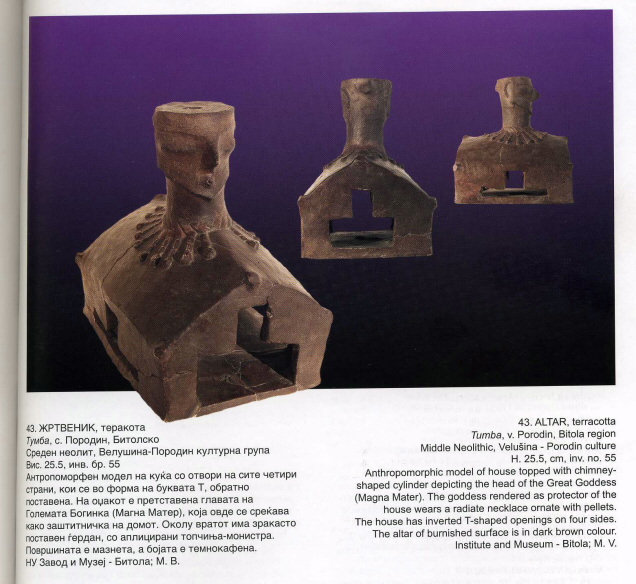
GOD'S MOTHER (GREAT MOTHER) Prehistoric testimonies from Osincani, Govrlevo - Republic of Macedonia
The Great Mother, who is also mentioned on the Rosetta Stone, and
the today's poor Greeks want to say they know everything about: ''Ma ke don i a''. The cult of the Mother of God in
Makedonia dates back to the Neolithic period in Makedonia. So now count how long the tradition of the Name of
Makedonia is long.
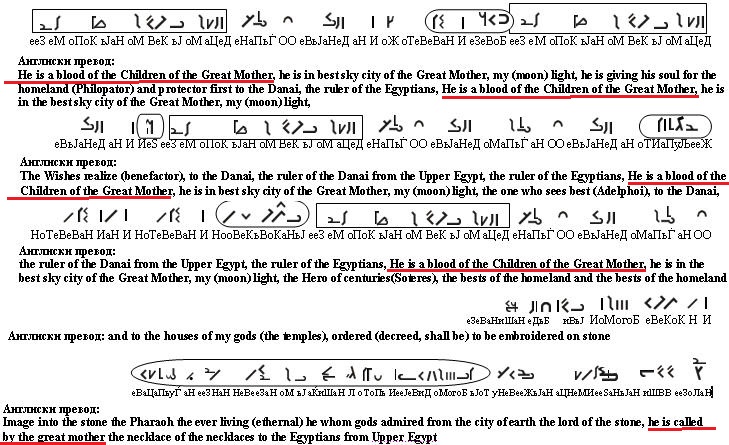
The name of the Makedonians: ''The Childrens of the Great Mother'' - written in the Rosetta Stone. The writing on the stone it refers that ''he (the pharaoh) is a blood of The Children (name of the children is Makedon) of the
Great Mother''.
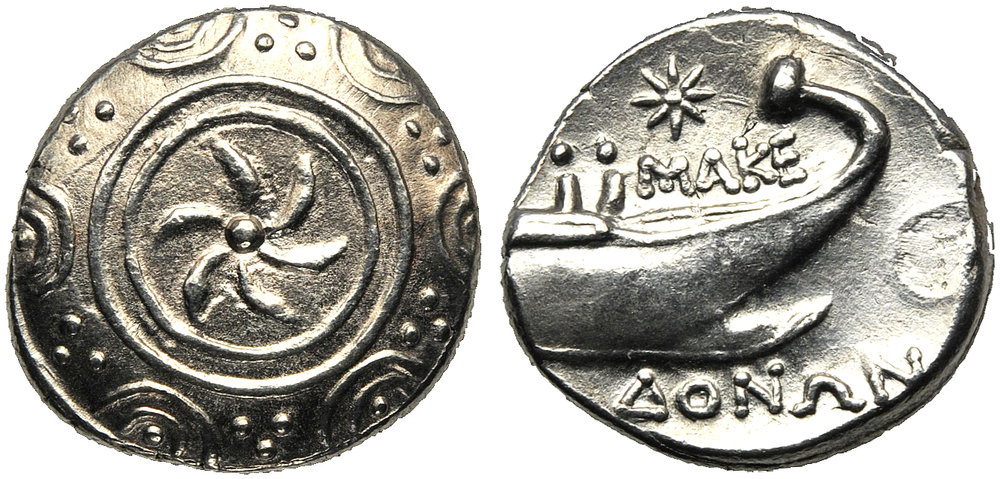
Makedonian coin ''MAKEDONON''
.
MAKEDONON - MAKEDON ON - MKEDONON he is Makedon, The Children (Makedon) of the Greaat Mother.
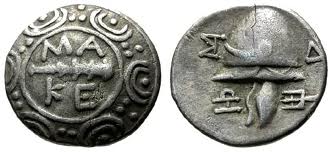
Makedonian coin ''MA KE''
MAKEDONIA
MA KE DON I A
MAKEDON - Makedonian epic hero,
MAKE - Mother,
D ON - God he,
I - and
A - MY.
MAKEDON and MY - and i am children of the Mother of God, Ma - Makedonia.

On the Rosetta Stone is inscribed not only the name of the Makedonians but the Danai are also noted. They are the so-called
"ancient Greeks'' they base is the Nubians of Nubia.
Where the pharaoh of Makedonian roots settled them on Upper Egypt from the Peninsula of Adzenika (Attica).
Because the Makedonians were waging a civil war among themselves, Ptolemy 5-th (the pharaoh
- ''naidzeito nashe'', in Makedonian) is a blood of The Children (Makedon) of the Greaat
Mother) had mercenaries in his army - Danai's from Adzena, Adzenika (Attica).
.
We have very bad news for counterfeiters from Europe.
It is not true that the ancient name of the continent is "Europe", but that name was imposed only in the 8th and 9th centuries of our era by ''the Romeis" - freak Makedonians from the Eastern Roman Empire, of course. "the secrets of knowledge and progress" they possessed at that time. ''The Romeis"all those who did not want to become "the Romeis" from the Makedonian (the Balkans - is Turkish word ) Peninsula, rather subjugated them as long as they coulded, and called them "sclavi" - slaves, and their territories - "sclavinii" - land of slaves, even centuries old ethnic Makedonia for them was the "land of the slaves" - Sclavinia, then the "land of the vulgars" - Vulgaria, but it is evident that on the maps outside Romeia, they were all called slaves - "sclavi" or "vulgars", means that during that period the name "Europe" started to be used and unfortunately it does not mean a good thing.
The ignorants "cartographers" and historians have accepted a very negative name for the continent "Europe", the name is Makedonian, that's why they don't understand it.
Interpretation of the name "Europe", which is a set of words:
- EVROPA - E V ROP A - is in slavery i am - I am in slavery, in Makedonian.
- '' EUROPA - E U ROP A'' - it's slave i am, ''I am in slavery", in the Makedonian folk dialect, which is the true ancient Makedonian language.
We leave the other versions of the name "Europe" up to you to interpret.
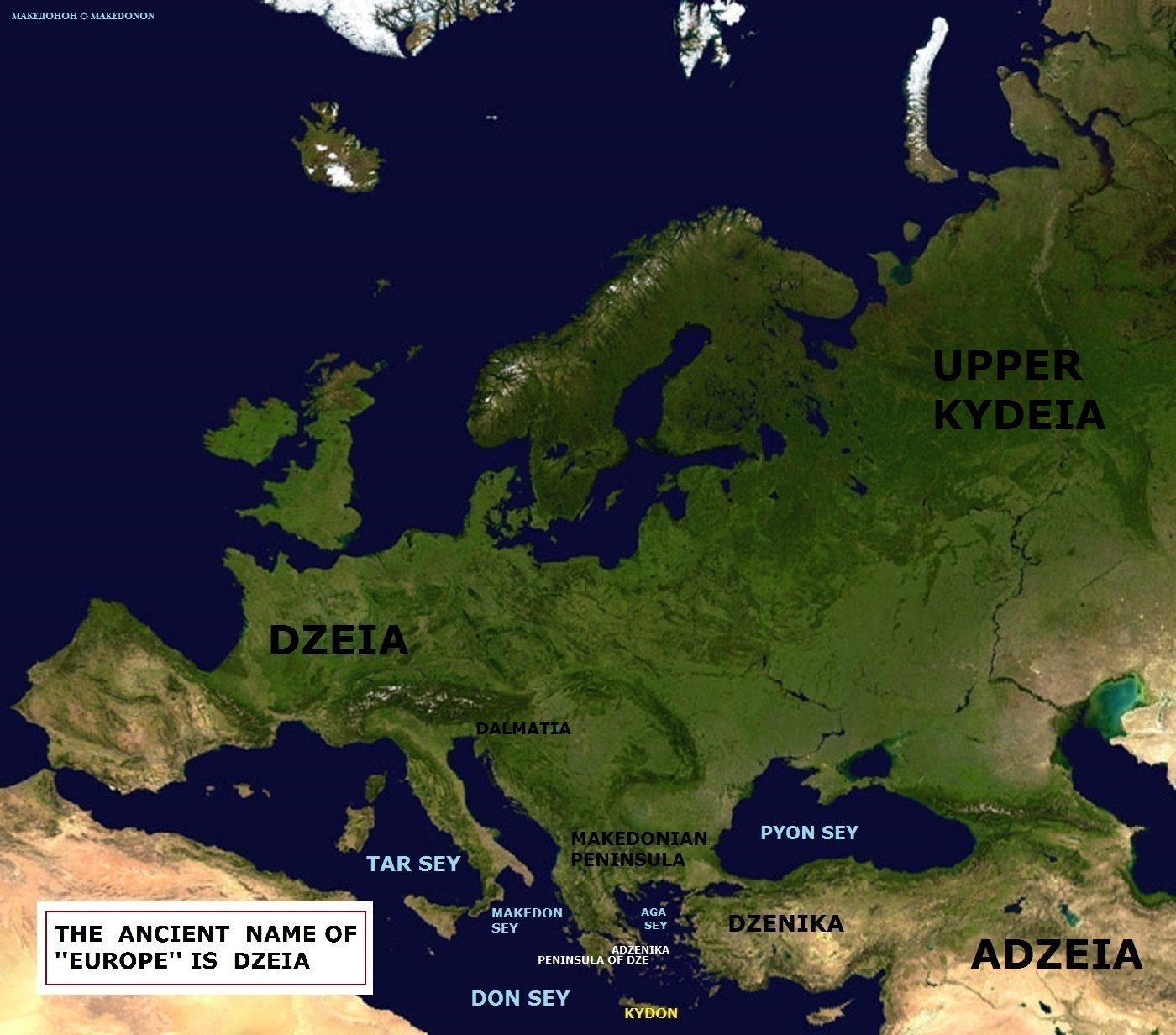
The ancient name of "Europe" is DZEIA or Dzeiya, it dates back to at least the 9th century BC, it comes from the name of Dze - the ancient god of light, while the "Balkans" were called Macedonia until 1800, Dalmatia means: close to mother and I - at mother's (Goddess Mother Ma ke don i ya) and I, "Asia Minor" was named - Dzenika - victory of Dze, white people lived, "Asia" - Adzeia (not "bright") the name "Asia" has remained almost unchanged until today, "Attica" - Adzenika - the Danaisthey emigrated from Nubia and settled in Adzenika (not "bright"), while the Peloponnese - rather it was called the Peninsula of Dze, then it became - Peloponnese - pelo po ne Dze - their skin is no longer bright - Peloponnese.
THE WORLD OF THE VENETS
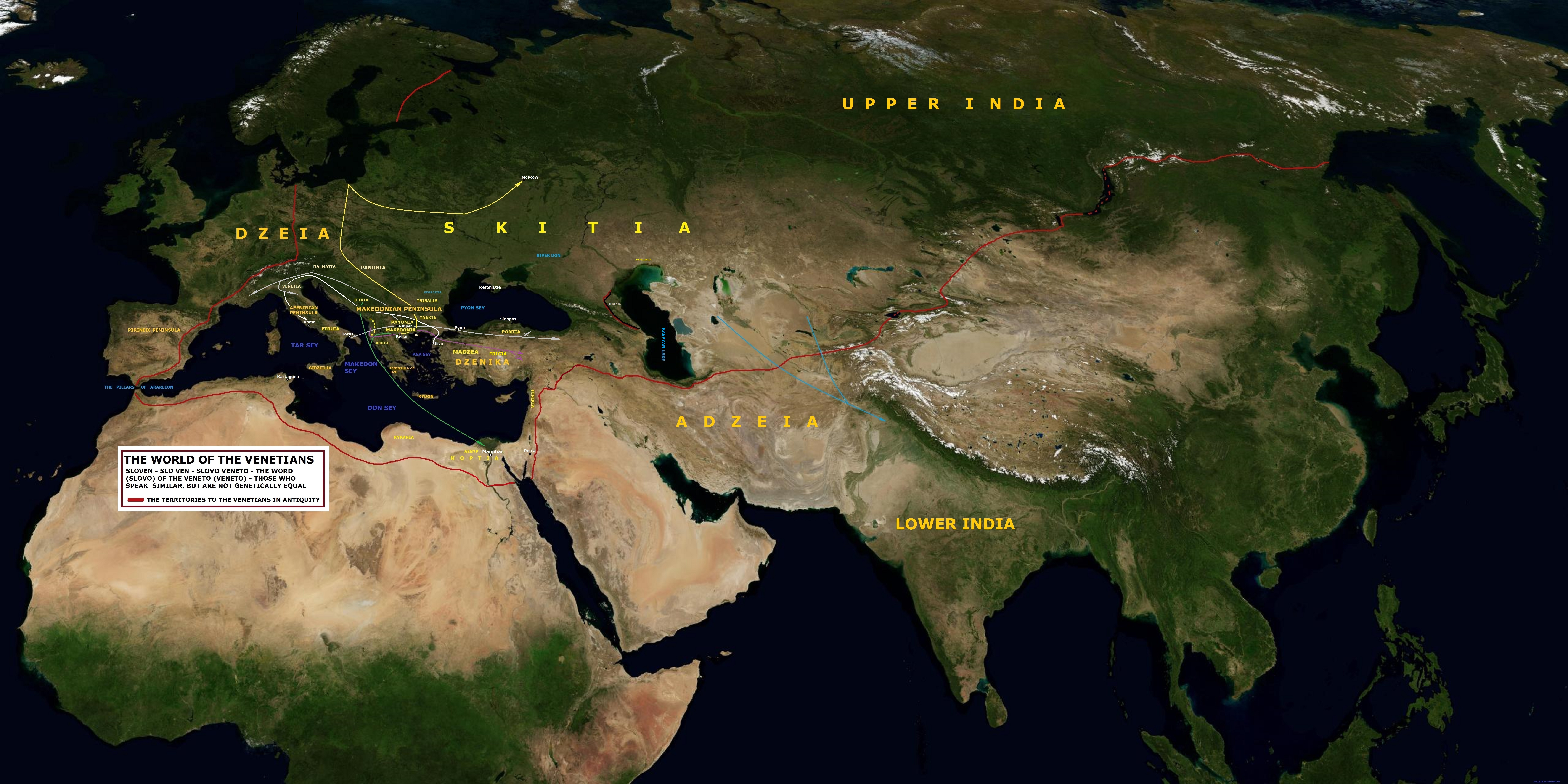
THE WORLD OF THE VENETS IN ANTIQUITY
SLOVEN (not slav) - SLO VEN - SLOVO VENETO, the word of the Venetians, those who speak the Venetian language.
CONTINENTS KNOWN IN ANTIQUITY:
- DZEIA, Dze i а - I'm like Dze (Zeus) and
- ADZEIA, Adze i а - I'm like Аdze (dark Zeus).
IMPORTANT REGIONS:
- DALMATIA - DAL MAT I A - and I am with Ma - the Great Mother, the Goddess - MA,
- VENETIA - VENET I A - I'm also a Venetian, it's interesting that today the Venets from northern Italy have lost their language, but their name has remained, while the Slovenian from Slovenia they have not lost their name and their language, we can conclude that they are very close there.
PANONIA - PAN ON I A - and I am Panon, Pan can also be interpreted as lord.
IMPORTANT STATES:
 Skitian (Scythian) migrations Skitian (Scythian) migrations
- Skitia, not ''Scythia'' I wander, was one of the largest countries in the world in antiquity. They were of the race of the Veneti and spoke the Veneti language. That country is insufficiently explored, but it existed, the Makedonians rulers vasileos Makedonon Philippoy and vasileos Makedonon Alexandroy fought with the Skitians (the Scythians).
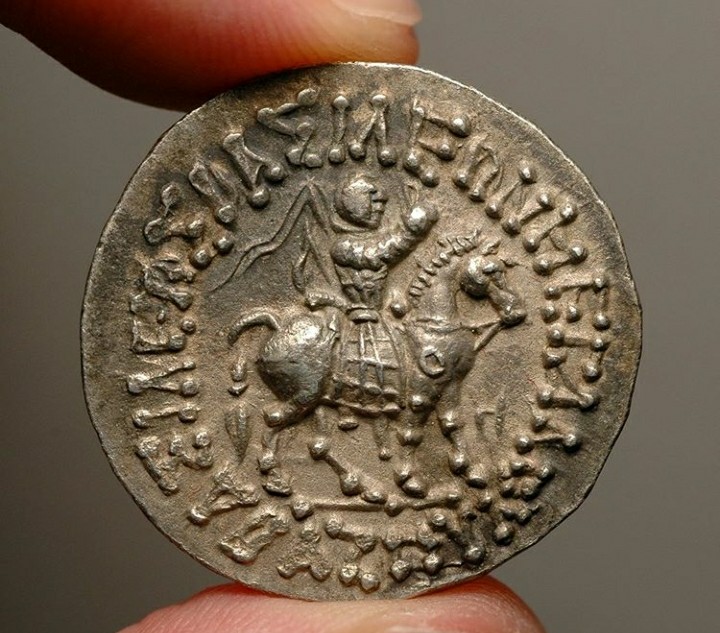
A Skitian coin with the Koinon Makedonon script
Coin from an Indo-Skitian /Scythian) state in the region of Pakistan, ADZEY SECOND - from the period 58-12 BC.
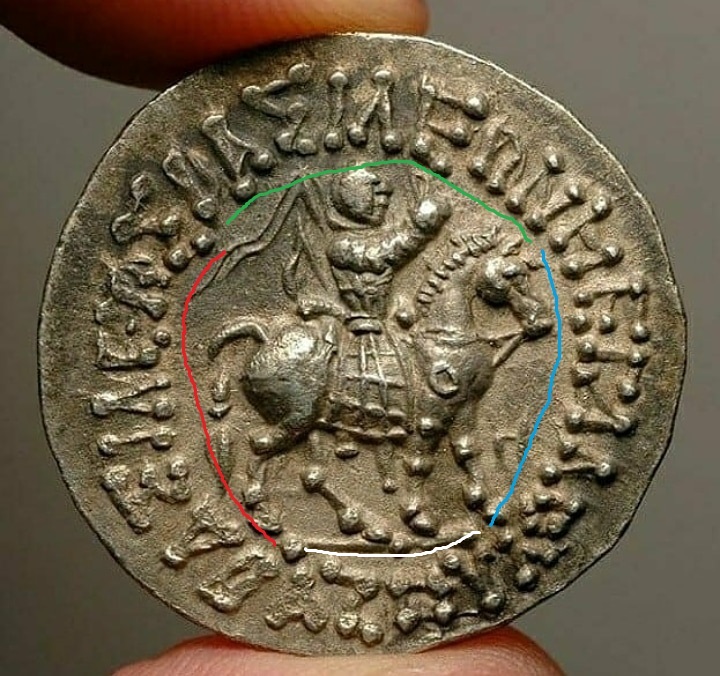
A Skitian coin with the Koinon Makedonon script
Vasileos, Vasileon, Megaloy,
Adzey (king of kings Adzey)
That underlined in white is Adzey the ruler.
''Vasileos, Vasileon, Vasileuon, Vasileondon'', now we know the saying of the flag of the ''Romeia'' - Roman Empire of East.
The Makedonian ruler Vasileos Makedonon Alexandroy - Vasileon (lord of lords), his state - Vasileondon Makedonia (state of the states - state of lord).
The Scythians made invasions in different periods in Dzeia (Europe), probably the Dorians are of Scythian origin, and the Scythians (Goths) also destroyed the Western Roman Empire.
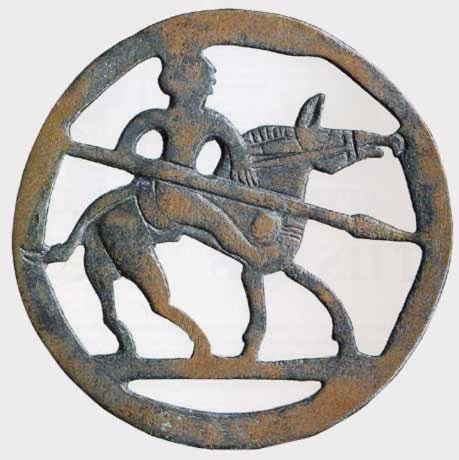
Scythian work art
 Пајонски миграции Пајонски миграции
- PAYONIA - ''not Peonia'', Pay on i a - I'm Pay too,they spoke a Venetian dialect there, it was also one of the largest states in Dzeia (Europe), it stretched in the central part of the Makedonian Peninsula, to the west from Makedonian Sey (sea), to the east to Py Sey (sea), to the north to the Pannonian plain, a question mark is whether that is the border in the north, while in the south it bordered with Makedonia, with colonies in the Pyrenees, the Apennines in the west, in the east they had colonies in Pontia. The Payonians did not waste time with borders, they simply "wandered" across the vast terrain like the Scythians in Scythia.
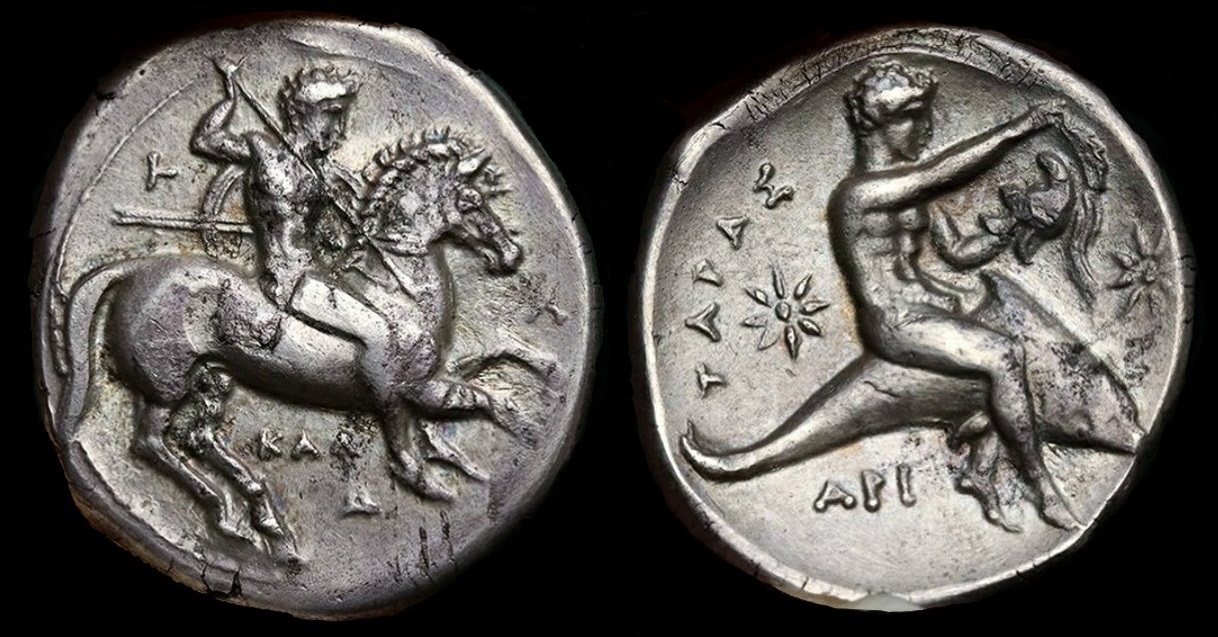 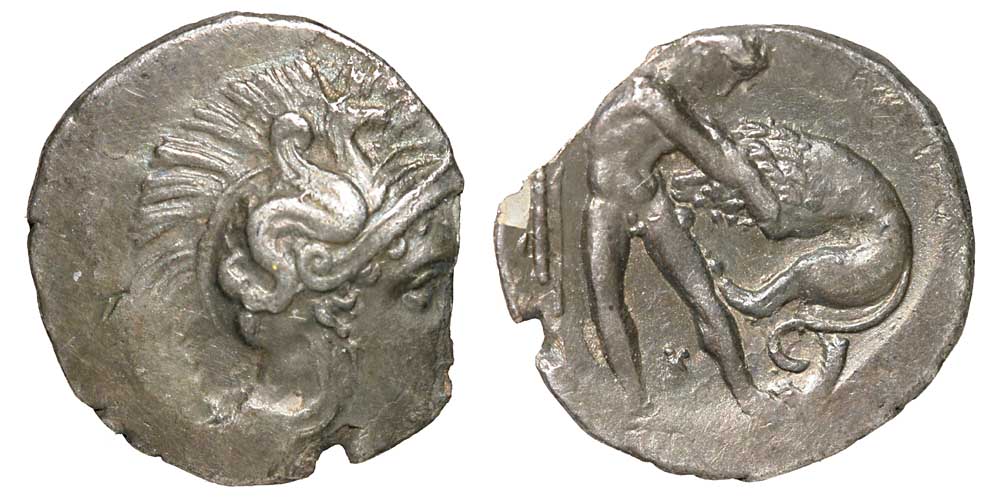 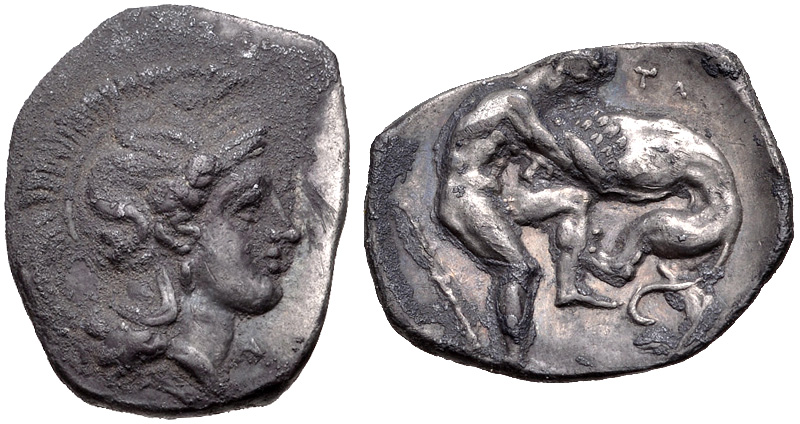
Etruian (Etruscan) coins from Taras (Taranto - Italy)
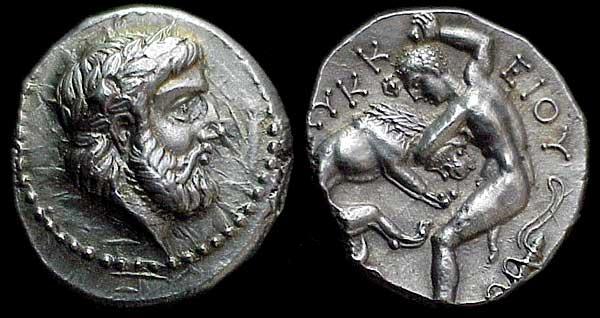 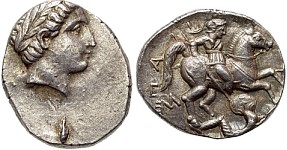 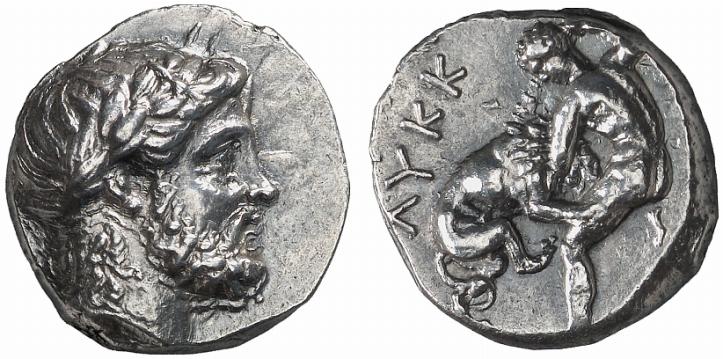
Payonic coins - Makedonia
The coins of Payonia and Taras in Calabria are very similar.
It is evident that many do not know that the name of the city with the two banks, that the original name is not "Istanbul" or "Byzantion", but Py.
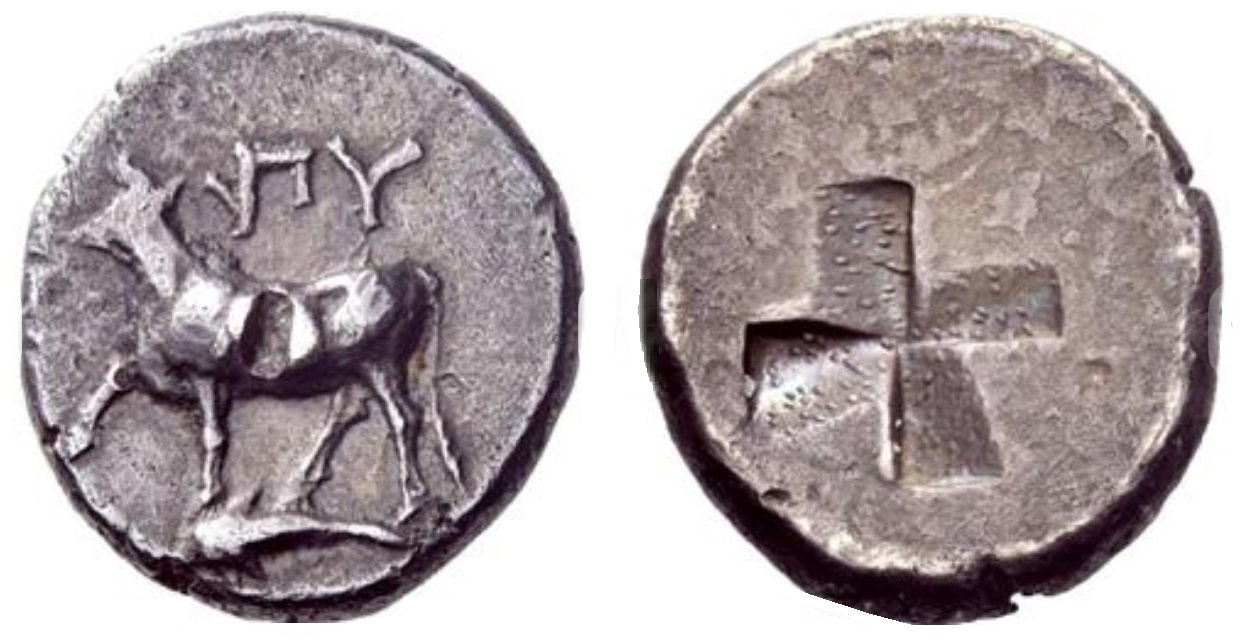
Coinage from In 340 - 320 BC. from Py
The ancient name of the city was Pj, not "Vizantion", the Romans gave it that name, so the lies don't pass here.

VIZANTION, Roman coin 60 BC.. The Romans committed a Vistian genocide there.
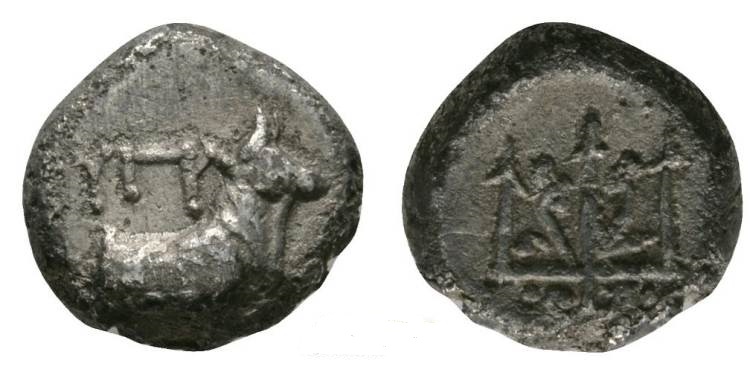 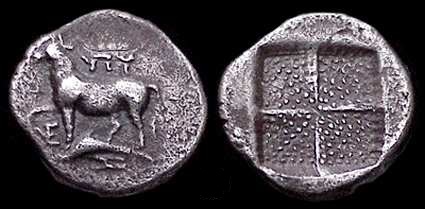
A small part of coins from the city of Py
As we can see, the bull was a protective symbol of the city. Bulls were everywhere on coinages: examples:
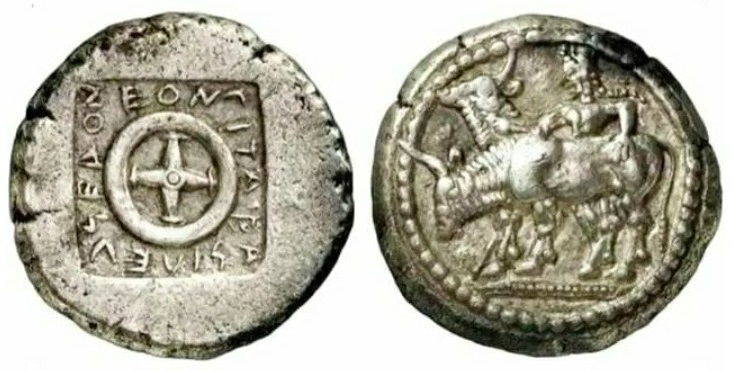
Payonian coin, from the local ruler along the river Strumion, "GITA".
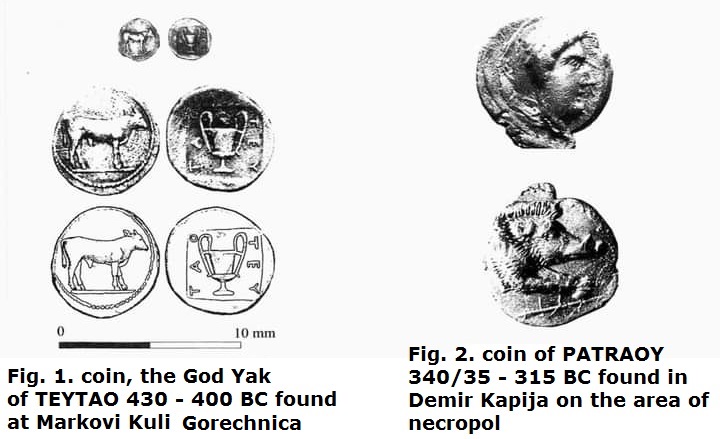
^The oldest Payonic coins with the alphabet "KOINON MAKEDONON''^
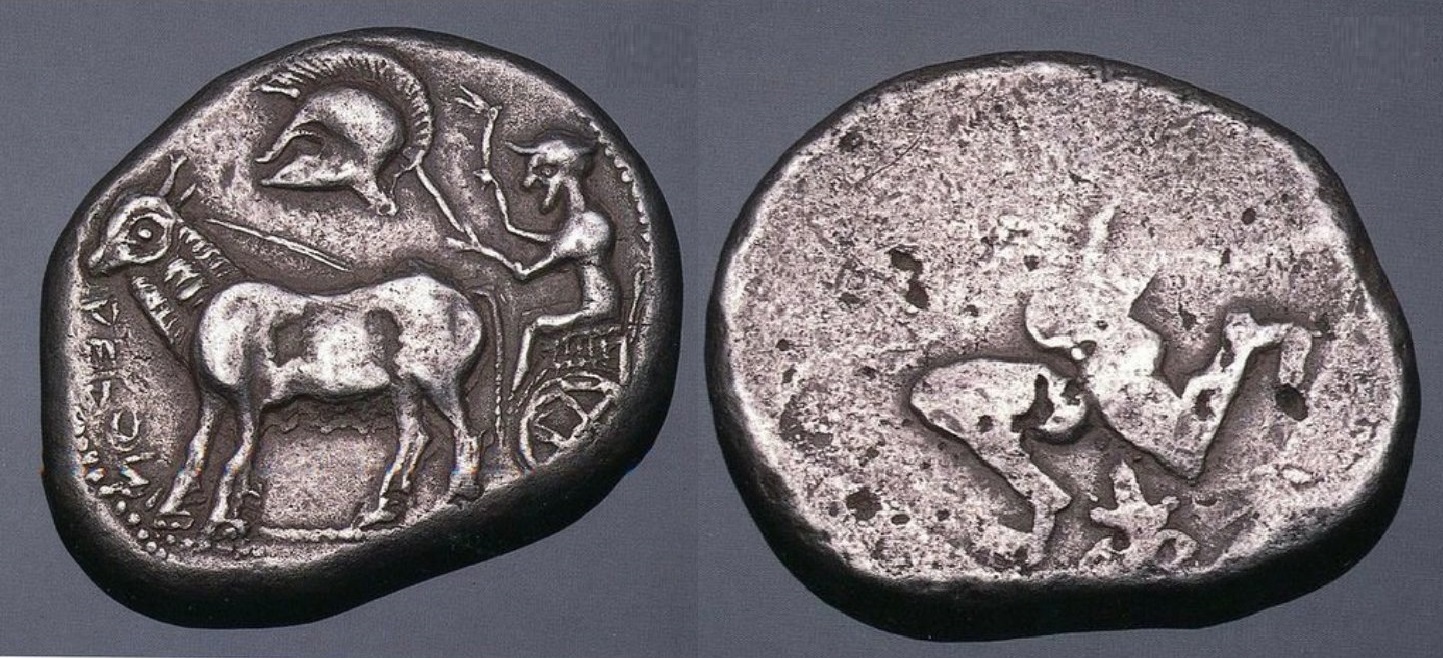
YEKON or REKON, the text is very difficult to read, a coin found in the ancient city today archaeological site Astipon (Shtip) - Macedonia, dated 460 BC.
Most likely because Payonia )not Paeonia( was very large they had local rulers, this is proof that it was the first confederation in Dzeia (Europe).
It is possible that Payonia and Skitia )not Scythia( were one and the same, but that needs a lot of additional evidence.
Taras - Tar as - I am Tar. T, something similar to D, the god.
 Payonian migrations to Etruia (Etruria) Payonian migrations to Etruia (Etruria)
- ETRUIA - Etruscan, ETRU I A - е Т R u - in Ra аnd Таr is and I, so it signifies.
In antiquity, everyone from Dzenika (Asia Minor) spoke a Venetian dialect, until the arrival of the Ottomans, where they made a strong assimilation.
 Payonic migrations to кон Pontia Payonic migrations to кон Pontia
- PONTIA - P ON TI A- Pay HE Tar and I. Sinopas not ''sinope'', a city of Pontia, Sino P as - the son of P me, from here it is concluded that they were a Payonian colony.
- MAKEDONIA - MAKEDON I A - and I'm MAKEDON, the name Makedonia can also be spelled for example - Ma ke Don i a.
 Migration of a Makedonian one tribe who did not want to be under Roman rule, after 168 BC they emigrated to Moscow, so the city of Moscow was founded by Makedonians, the Russians confirm that. The name Moscow in Russia is pronounced Maskva,... means: MA s' КВА - Ma (Ma - Great Mother the Goddess - MA,) with KVA, which is "kva" currently remains ''?''. Migration of a Makedonian one tribe who did not want to be under Roman rule, after 168 BC they emigrated to Moscow, so the city of Moscow was founded by Makedonians, the Russians confirm that. The name Moscow in Russia is pronounced Maskva,... means: MA s' КВА - Ma (Ma - Great Mother the Goddess - MA,) with KVA, which is "kva" currently remains ''?''.
 Brigian migration to Frigia (Phrygia)- Dzenika (The victory of Dze) Brigian migration to Frigia (Phrygia)- Dzenika (The victory of Dze)
- BRIGIA - Brigians - BRIG I A -Breg and I, those next to the coast, were neighbors of the Macedonians, when they moved to Dzenika (Asia Minor), they changed their name to Phrygia, then fell under Roman influence and changed their name again to "ER men and I", it is possible the Brigs also emigrated to the north, in the south of Switzerland there is a town named Brig, but this theory needs further research. Tha Makedonian ruler Vasileos Makedonin Alexandroy sent the wounded soldiers to the Phrygians so that they would recover faster, and why they spoke the same language.
- TRAKIA - Таr RА ки a - I'm like Ra and Tar, if we twist the name into "thrace" we can't explain it the name, the invented god "Thracians" is the nonsense of ignorant "otraki".
As further evidence we add this Payonian coinage, proof that the god RA was worshiped along the course of the river Strumion (Struma):
 Payonic coin, from the ruler "GITA and RA (thunderbolt sign) ILE V(thunderbolt sign) E (is) D (Д - Don - the creator after Aaron) Dz (thunderbolt sign) E HE", as we can see he worshiped the god Yes. Ile and Ra refers to light, the ruler Gita was identified with "the light". Payonic coin, from the ruler "GITA and RA (thunderbolt sign) ILE V(thunderbolt sign) E (is) D (Д - Don - the creator after Aaron) Dz (thunderbolt sign) E HE", as we can see he worshiped the god Yes. Ile and Ra refers to light, the ruler Gita was identified with "the light".
- TRIBALIA or TRIBALION - TRI BALI ON - Таr Rа Il bali on - The three gods together, not only that, from here we can conclude that this is how the Venetian number 3 - three came about.
T or Tar in the north grows into Tor (Thor - with the Vikings), in the center is D on, but in the south another god is found, and that is the god "F", about whom we know very little.
- FENIKIA, FENIK I A, I as Fenik, but "FENIK" can be share further into "FE NIK" - we are FE NIKa - ''victory of FE or we spring from FE'' and it is very easy to interpret the name for the Fenikians (Phoenicians) after the phoenix bird. The Phoenicians were mostly seafarers, the best in antiquity.
 Koptian (Coptic) migrations Koptian (Coptic) migrations
- We also meet the god "F" among the Copts, more precisely with their ruler FA RA ON - FAR it meant the strongest ray, but here in the name there is "the strongest sun", why RA means sun, "on - he" signifies is unique, but also has AR (the first creator of the earth) and ARA (his daughter), a very sophisticated title.
- Manphar - Man PH ar - the Coptic name of their capital means FAR means "strongest ray", hence AR originally symbolized the Sun, and because he was a woman's man - MA is a symbol of the Earth - the STRONGEST RAY on Earth. AR was the lord of the Earth, hence it got mixed with the flow of time. MA is the symbol of the Earth, ARON is the lord (male) symbol of the Sun.
COPTIJA (Copti) - KOP TI A - those who dig,it is evident that a great injustice was done to the Copts, they changed the name of the country, the Copts are the true heirs of the pharaohs, proven. The proof that they emigrated from the Macedonian Peninsula is the following:
The Pyramid of the Sun in Bosnia and Hercegovina
 
30000 years old, 220 meters high in Visiko, Bosnia and Hercegovina
The heart of Illyria
ILIRIA - IL I R I A - IL and Ra and I, land of the two suns
Few people know that there is a pyramid in Makedonia as well:
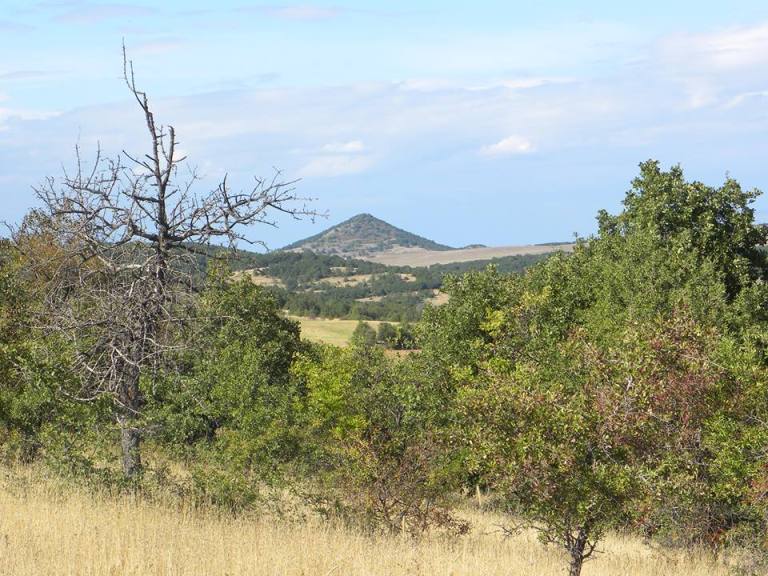
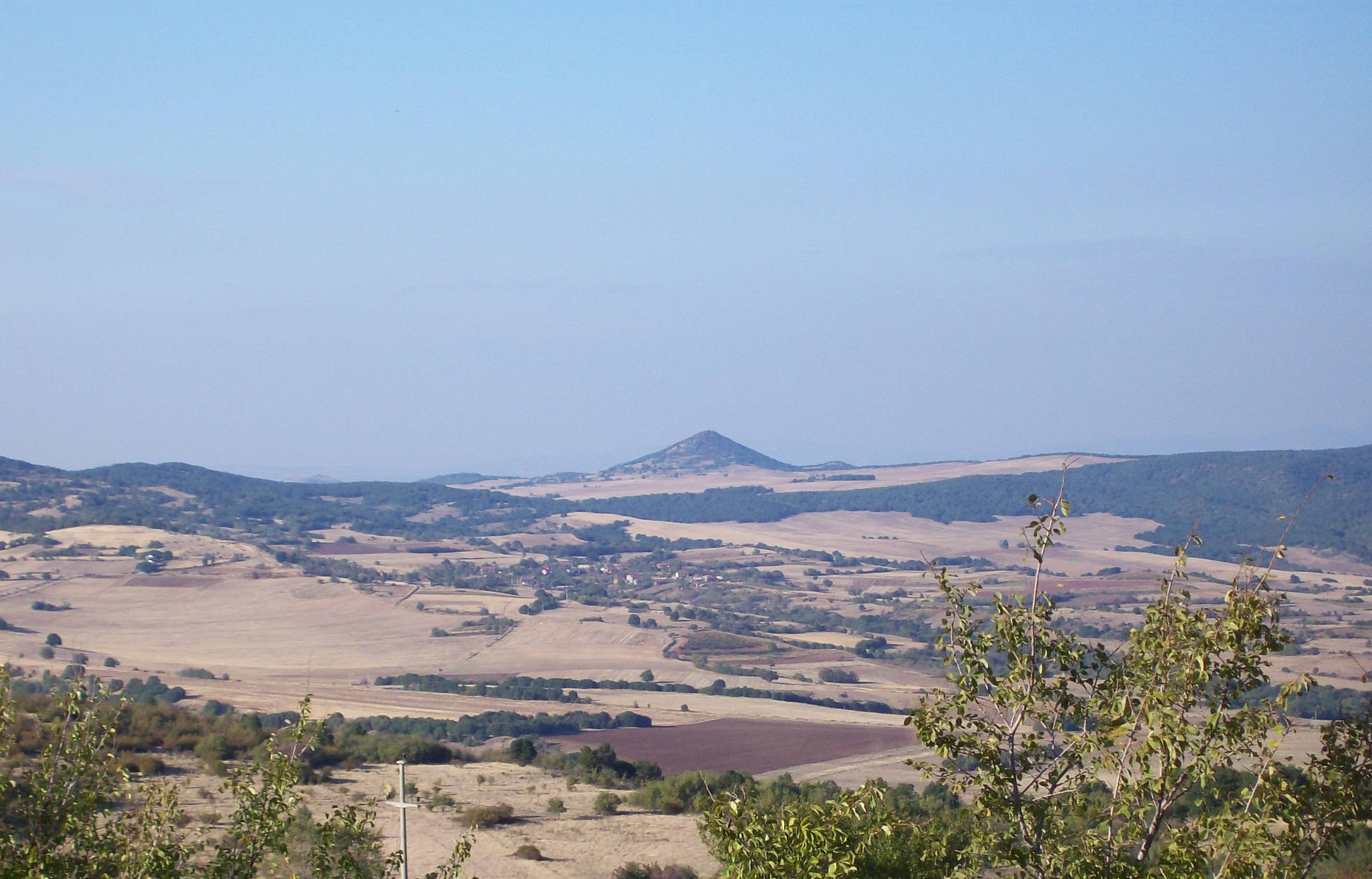
The Ovchepol pyramid, Ostrovica, Grabesh village
Not enough explored localities of very important historical and cultural significance for us Makedonians and in general.
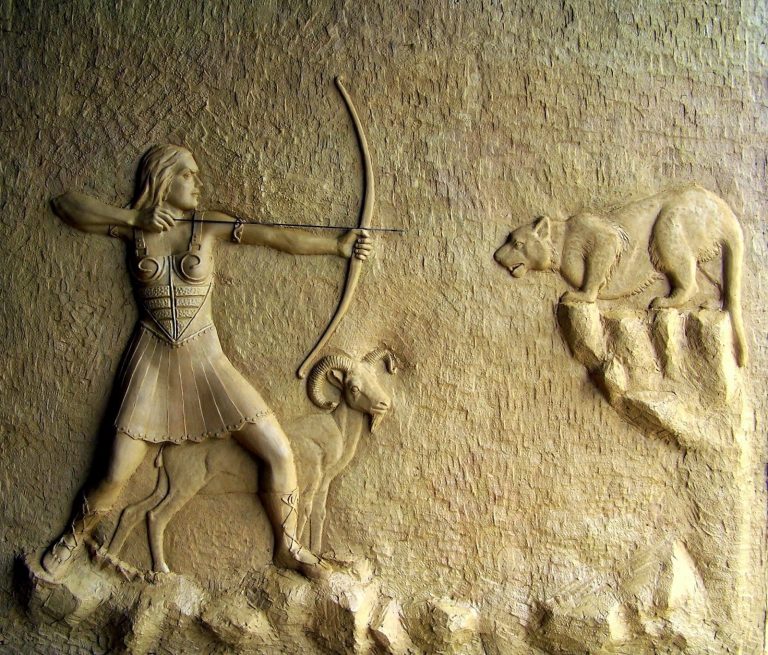
A MA DZE ON KA
- AMADZENIA - A MA DZE NIA - we come from Dze and Ma, the "Amazons" really existed and were of Payonik - Skitian (Scythian) origin, they lived in a society where women were the main ones. They lived to the north of the Kaspyan lake, the Girkian (Kaspyan - Caspian) lake.
- The Makedonians headed towards one bay of the Kaspyan lake that had the appearance of the horns of the new moon (Kara-Bogaz-Gol), they remembered the position of the tribes that lay between their way:
''On the left was the land of the Kerkets, the Mosins, the Xalives, and on the other side - the Levoxires and the Amadzeonians (Amazons); the former live towards the west and the latter towards the north''.
THE MIOTIAN CIVILIZATION OF AGA SEY (Aegean Sea)
The Miotian civilization was an advanced civilization, until it was destroyed by an earthquake and a volcano, so not much is known fot them, but in the archaeological findings covered by the ash from the volcanoes, for example on the island of Kydon - to Don (Crete), houses were found where there were bathrooms and on 2 floor , it was very evolutionary for the time, while on the "mainland", the masters lived on the ground floor, to escape rather in case of fire, because the fires were very frequent and destructive in the bigger cities, while the slaves lived on the high floors.
If an anthropological comparison is made even with the language, it will be established that they were from Venetians origion:
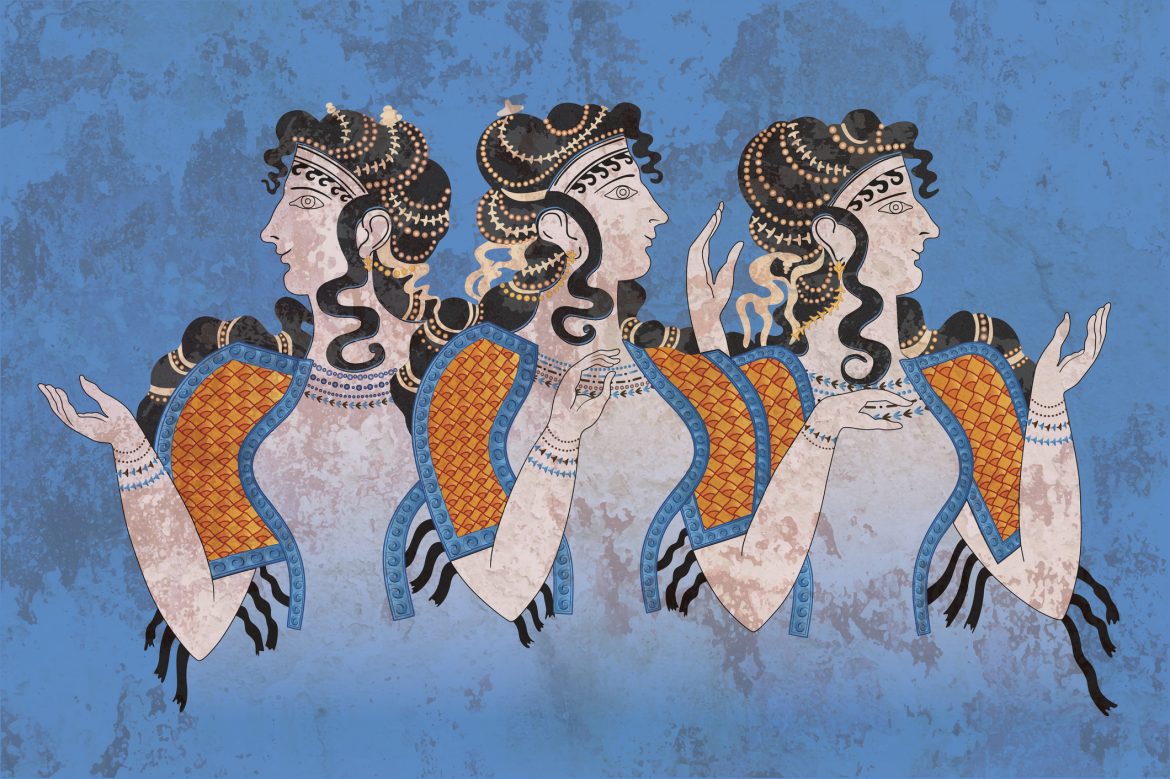
But they were also exposed to invasions from Adzea (Asia) after the earthquake:
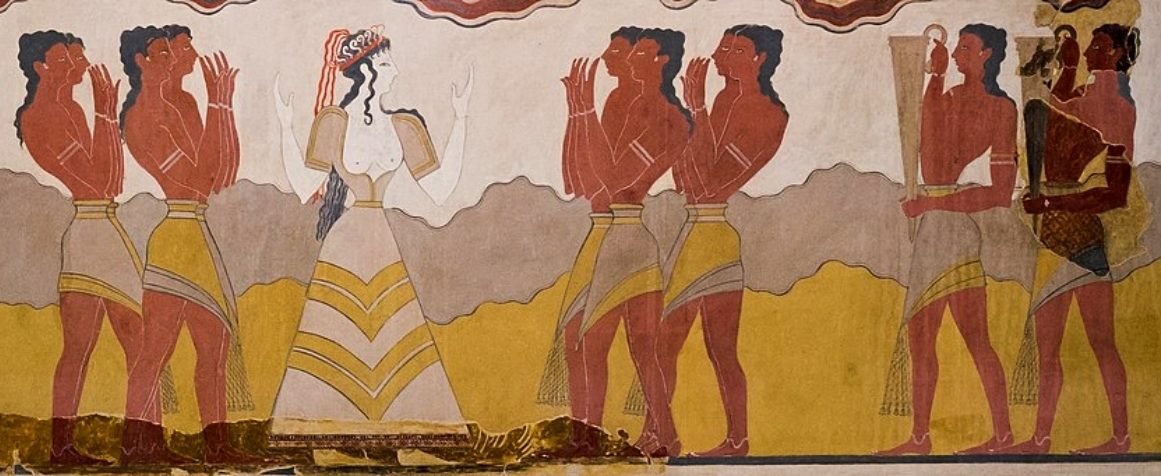
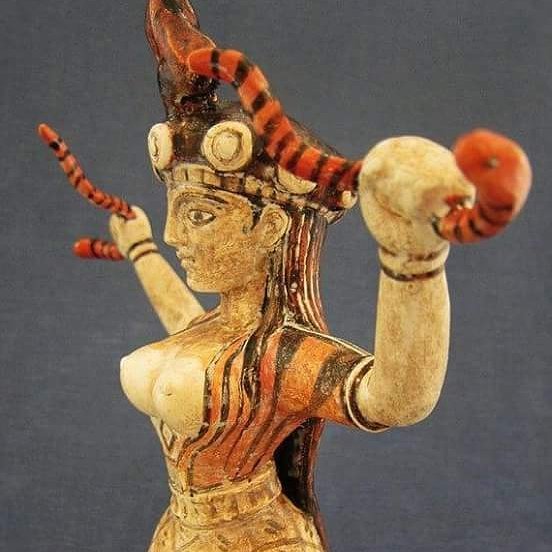 
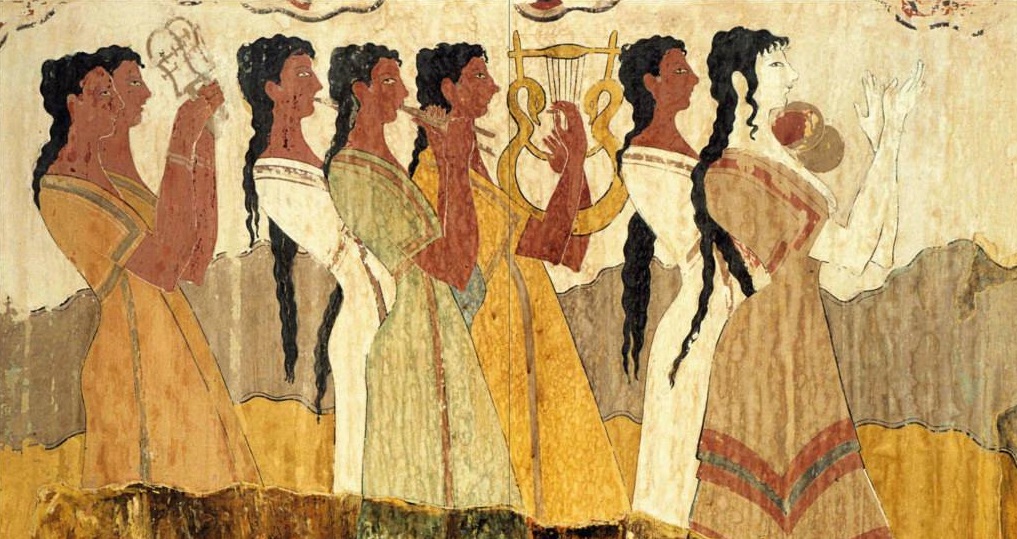
Over time, they fell under Persian domination and vassalage, so that the first commander of the Persians that faced the Makedonian ruler in the campaign against Persia, Vasileos Makedonon Alexandroy, was from Rhodi, but then, those from Rhodi and from Kydon, became Makedonian allies, for reward Vasileos Makedonon Alexandroy left them free.
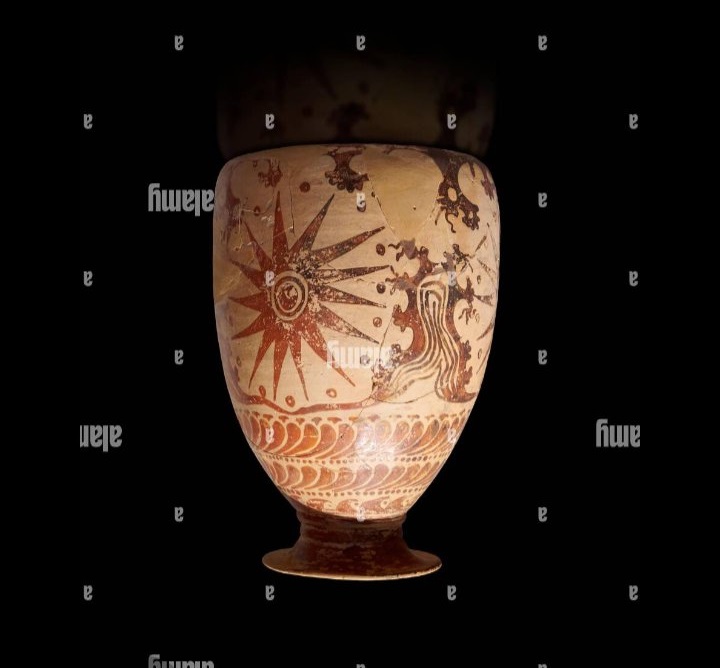 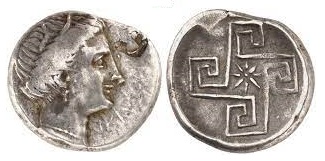
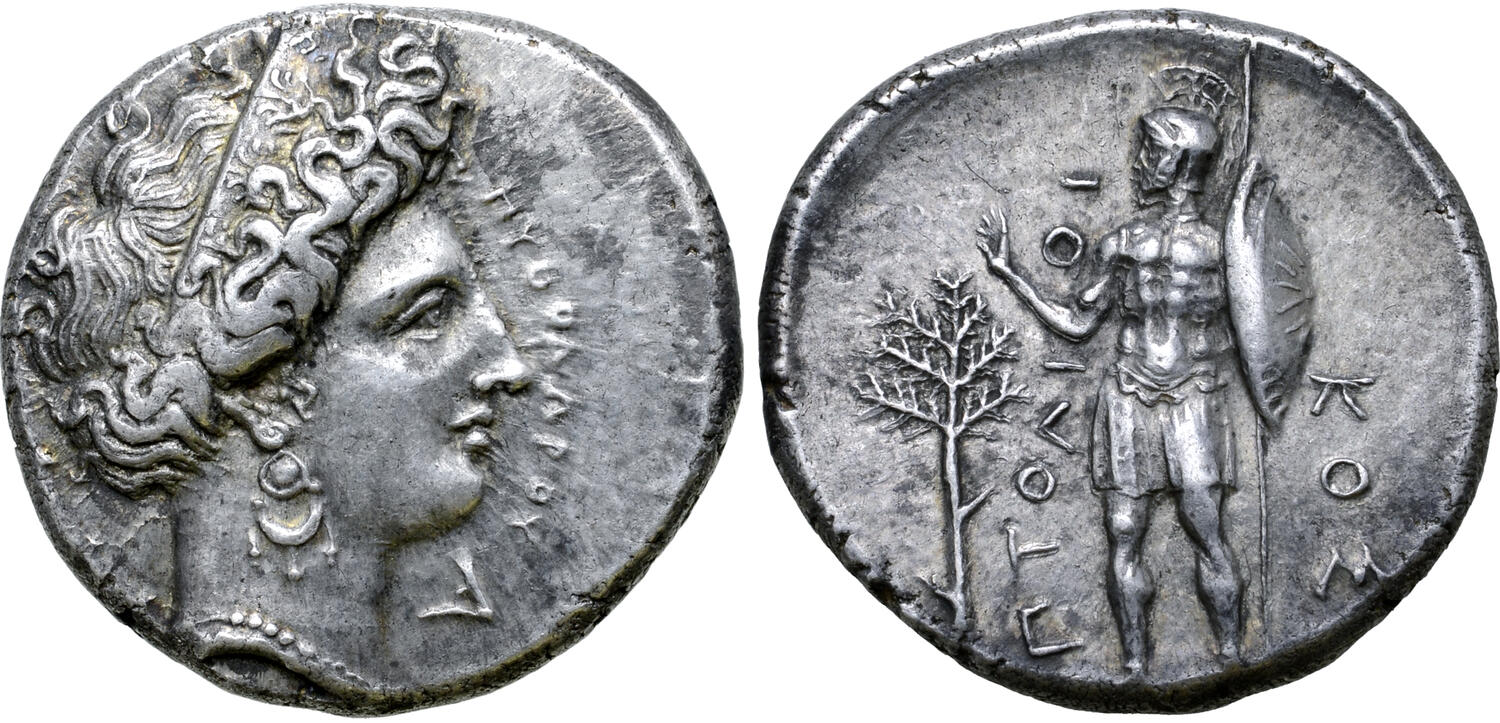
A coin from 240 BC from the island of Kydon, it is evident that they were good Macedonians
In the 9th century the Saracens of ''Crete'' now, (because the name of the island was renamed from Kydon to Crete by the Romans) and from Tripoli under the leadership of a one Danaians, devastated the city of Solun (Thessalonica) and took 20000 Makedonians into slavery from the city.
The Cretan mercenaries from 1912/13 behaved very badly towards the Makedonian population in Aegean part of Makedonia.
Slovenia today took over the name of the Slovenetians.
It is still not understood due to incorrect education, that Sloven, "Slav", "Slavic" and Venetian, that it is one and the same thing, Slovo - Venetian speak the same or similar.
.
IMPORTANT SEAS:
- PY SEY - the sea of Pay on - he Tar - ancient divinities, (changed to Black Sea)
- AGA SEY - Aegean Sea
- DON SEY- the largest sea, today the name has been changed to the "Mediterranean Sea'',
- TAR SEY - Tyrrhenian Sea today.
IMPORTANT LAKES:
- KASPYAN LAKE - KA S PY AN - How with PY lake.
IMPORTANT RIVERS:
- DON, D ON- he is D - the creator.
IMPORTANT SEA PASSAGES:
- ILEPONT (not "Hellespont", which is the Latin version) and
- Pillars of Arakleon (Gibraltar).
IMPORTANT PENINSULAS:
- The Macedonian Peninsula in honor of the Great Mother, Goddess - MA, today changed to "Balkan",
- Peninsula of Dze, today ''Peloponnese'',
- Apennine Peninsula - APEN NI - we are bitten, the peninsula was a refuge for the weaker of the Veiets, an example is the Ilions (the bittens) who took refuge after the defeat in Ilion, there they changed their name to Roma - ''Rome'' - Romans, after centuries they became the strongest, for a while. Since the Romans were the most powerful for a centuryes, some of the Veneti became "Romanized", for example the Frigs, who became eRmenians.
 Ilion-Roman migration from 1800 - 1500 BC Ilion-Roman migration from 1800 - 1500 BC
RОМА - RОМE
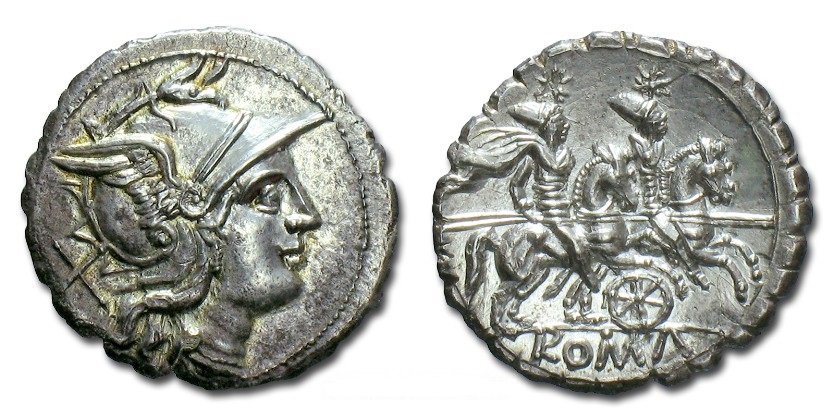
Coin of the Roman Republic
The Romans copied the advanced military techniques, not only from the Macedonians but from everyone, it is evident that on the coin they copy the Macedonian horsemen - "a company of heroes", with their long spears, while on the other side is the Makedonian ruler the Vasileos Makedonon Alexandroy, which is a bigger tragi-comedy, is that that coinage was in honor of the conquest of Makedonia.
ROMANI - RO MA NI - THE ROMANS, "the first Romans", apparently copied the Makedonians very well.
- RO - gen
- МА - the Great Mother, Goddess - MA
- NI - we
From right to left: NI МА RО - we are from gen of the Great Mother - MA.
Ancient records of the Romans confirm that they are descended from the city of Ilion (Troy), who moved to Rome after the war.
The Romans are villains for us, the Makedonians, who robbed Makedonia economically and culturally, cannot be considered our relatives.
Today the Romans do not exist, nor is their language spoken in today's Rome, the Pope of Rome uses Latin.
- PIRINEIAN - Iberian (is a Roman name) Peninsula - Pay and Ra and we - we are like Pay (ancient dignity) and Ra (ancient dignity). ''P'' can also be interpreted as PAN - the lord.
The name Aristotel (Aristotle) is a Venetian name and gives the boundaries of the "ancient Venetian world", AR IS TOT E.
As we can see, the real ancient world does not correspond at all to the lies of modern liars, "historians''.
.
Copyright © Makedonia is ALL ☼ MAKEDONIAeSE.com ☼ All rights reserved
10 / Don / 2022
Those who copy the text about the Venets should indicate the source from which they copied.
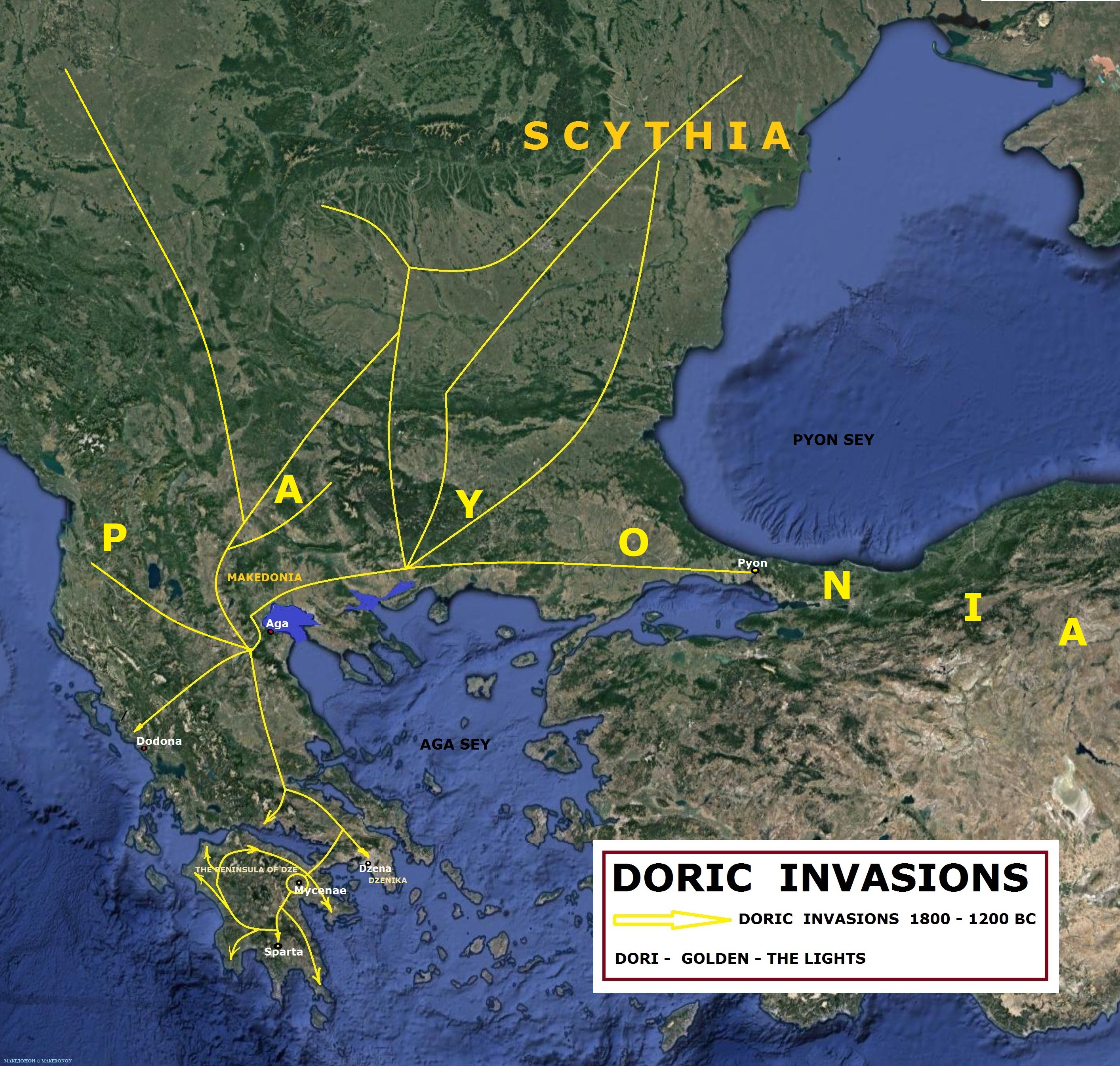
DORIC INVASIONS, Dori - golden - the lightes
According to the strength of the invasion from 1800 - 1200 BC, the date can be guessed, why the exact date of the invasion is not known, but it is after the war in Ilion, the Dorians must have been of Scythian origin, ''dori - dorati'' in Latin means gilded, so they were: white and fair-haired. "Thessalia" - Dzetalia, is not a state, but it was a military union, at that time that alliance and name did not exist, so the source from which it is claimed that the Dorians are "Thessalians" - Dzetsalians (the all of Dze), not is correct, there is another theory that they were from Makedonia.

Coinage from In 340 - 320 BC. from Py
The ancient name of the city was PY, not ''Vizantion'' the Romans gave it that name,
 VIZANTION, the Roman coin 60 BC. VIZANTION, the Roman coin 60 BC.
In the war of Ilion, soldiers from Payonia went to help defend the city as well as Makedonians.
Now the picture is crystal clear, when the ruler from the city of Py (not Vizantion-Byzantium), saw that the next possible target of the "Union of Arakleon" (Araklas, according to the latest discovered mosaic in Siria, which gives us more reliable information from antiquity). That's how he ruled, or most likely they had a military alliance with the Skitians (Scythians), and as a Payonian colony they were certainly in contact with all the Payonians. It is possible that Py or Pyon was also the capital of the Payonians, for that we certainly need a lot of evidence. So they made a campaign against the members of the Union of Arakleon, Mycenae was razed to the ground, it never rose again, there is a "historical hole" for 300 years, in the modern history for that period, maybe they are hiding detals from that part of the world.
According to our research, the Payonians and the Skitians (Scythians) are the same, the Makedonians and the Payonians are the same, there is no difference. The Payonians are part of Makedonia and have a ray in the Sun of the Makedonian ruler Philip of Makedonia, that's why the enemies of Makedonia they want the Makedonian Sun to not exist as an official state symbol of the Makedonian state, because it represents the unification of the Makedonian ancients tribes.
After the war in Elion (Troy), around 1400 BC, the "Dorians", conquered the "Dze Peninsula" and thereby weakened the military economy and made the chaos there,who lasted 300 years.
.
 Bellasti - Pelasgians -
the whites Bellasti - Pelasgians -
the whites
[6]
Gnaeus Pompeius Trogus one of the biger experts of ancient
Makedonian history AND hime selfe life in the time of
ancient Makedonians when Makedonians be inslaved by the
Romans IT WRITES : the ''Makedonians'' have PELAZGIAN ORIGIN
(Justin. VII, 1, 3)
DZENA is the real ancient name of the city of Adzena, not "Athens", the inscription "Athena" appeared with the arrival of the Romans in the Peloponnese, when Danai's conquered the city of Dzena they renamed the city in Adzena.
[7]
. Titus Livius, book XXX, р. 29
Still exists not assimilated Pelazgians AFTER coming to the
Romans to the Peloponnese and thise is the AKARANIANS and
AETIOLIANS and they speak spread like ''Macedonians'' - Makedonians.
Tit Livi, book
XXX, p. 29 the
Akaranians, Aetiolians and Makedonias THEY SPEAK SAME
language:
- ''Aetolos, Acarnanas,
Macedonas (Makedonians) eiusdem linguae hominess''
This here is heavily falsified, or all of everything is falsified, however, the contradiction must be known: Isocrates;
''Pelasgians -
the whites, a non Danai's population spoke a barbarian language that he dont understand. Only after learning the
Danai language did THEY BECOME Danai's. If they speak Danai's unquestinably be classed as
Danai/ Isocrates in the Letter 9 to Archidamus.
Isocrates , ''Panegyrikos'' ; qoute ...... has brought it about that
the name ''Hellenes'' suggest NO LONGER a rase
but an intelligence, and that the title ''Hellenes'' is APPLIED rather to those who shere our culture than to
those.
****This here is heavily falsified, or all of everything is falsified: **** In the original fake book is written:
'' Isocrates;
.. Pelasgians a non hellenic population spoke a barbarian language that he dont understand. Only after learning the greek language did THEY BECOME
greeks (the Danai's). If they speak greek unquestinably be classed as greek/ Isocrates in the Letter 9 to Archidamus.
Isocrates, Panegyrikos; qoute ...... has brought it about that
the name Hellenes suggest NO LONGER a rase
but an intelligence , and that the title Hellenes (and over that it is a counterfeit, because ''the Hellens'' is the Latin word and it is a religion not of the people) is APPLIED rather to those who shere our culture than to those
.''
The Greeks of today who have no linguistic, cultural, religious or
anthropological connection with the ancient Danai's, are only one nation in the world who CELEBRATED
THE
MAKEDONIAN VASILEOS - KINGS who INSLAVE the Danai's from Adzena, the Peninsula of Adzenika (Attica) cousins of the Nubians of Nubia AND THEY CELEBRATED THEM.
The Greeks of today who have no linguistic, cultural, religious or
anthropological connection with the Makedonians. The Greeks just occupied a part of Makedonia in year 1912.
The alphabet ''KOINON
MAKEDONON'' is a
Makedonian.
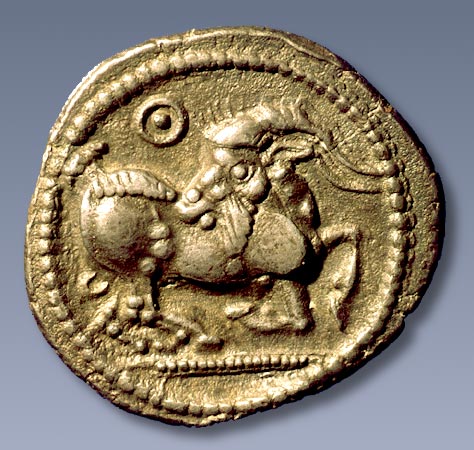 
Following the coins and the letter ''DZ'' - Dze, we came to a very significant discovery, and that is the Makedonian ruler Vasileos Amyntaoy (not Amyntas, why was it read wrongly) The FIRST, the father of Vasileos Alexandroy (Alexander) The FIRST, already used it the alphabet ''KOINON MAKEDONON'' before his son and successor of his coins, so the theory that the alphabet originates from the time of the Makedonian ruler Koinon (not Koinos), is more closer.
The Makedonian ruler Vasileos Amyntaoy The FIRST signed his coins with the name of the god of light DZE, the letter: ''  ''- 'DZ or Dze. ''- 'DZ or Dze.
''The Makedonians, proven on coins from the time of the Makedonian ruler Vasileos Amintaoy The FIRST, the father of the Makedonian Vasileos Alexandroy (Alexander) The FIRST, the Makedonian rulers officially for the needs of the Makedonian court used the alphabet ''KOINON MAKEDONON'', at least 100 years before the Adzeians (Danai's, according to Rosetta Stone, so - called ''ancient Athenians'' but after 40 BC'').
Adzena ( the Danai city - state, so - called ''Athens'' after 40 BC), which even in 403 BC during the reign of the Adzeian tyrant Euclidas introduced the alphabet "KOINON MAKEDONON".
Many want to know how the Makedonians had spoken, 2500 years ago, there is no difference between the so-called ancient Makedonian language and today's one they are the same.
Here we will give you some example:

AGA DZE TYH IS - AGA DZE HERE IS
AGA - the ancient Makedonian capital (Aga not Aegea or ''vergina''),
DZE - the ancient god of the Sun - light.
THE BOOK OF MAKEDONON OF THE MAKEDONIAN ALPHABET IN ACTION
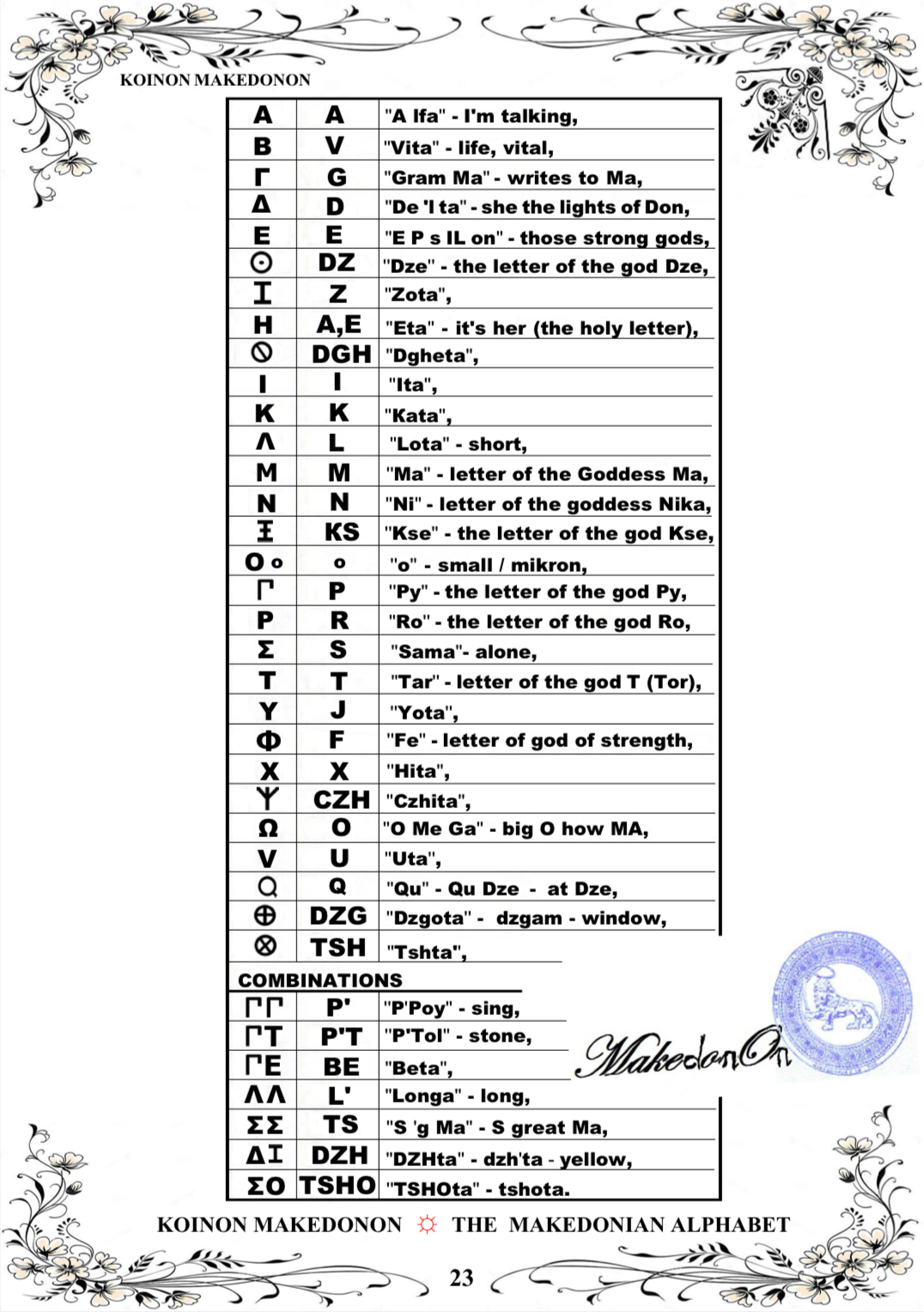  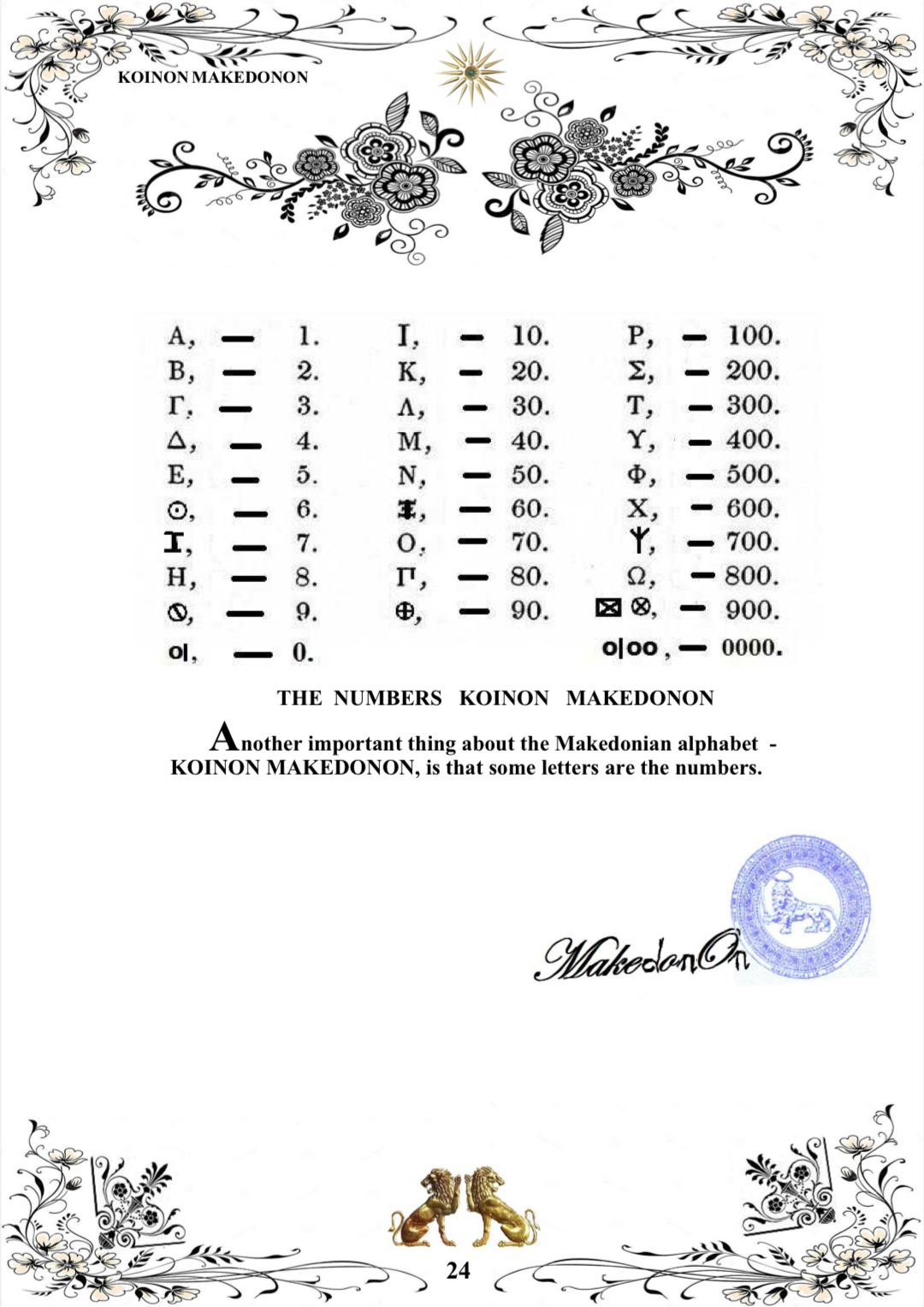
The book of MAKEDONON in action, there is no text of the alphabet KOINON MAKEDONON in the Makedonian or foreign language, which cannot be translated with the help of the book.
As the other an example we will take '' The Bellas - Illuminated (not Pella) board ''
and is in Makedonian llanguage, proves that there is no difference between the so-called ancient Macedonian language and today's one they are the same.
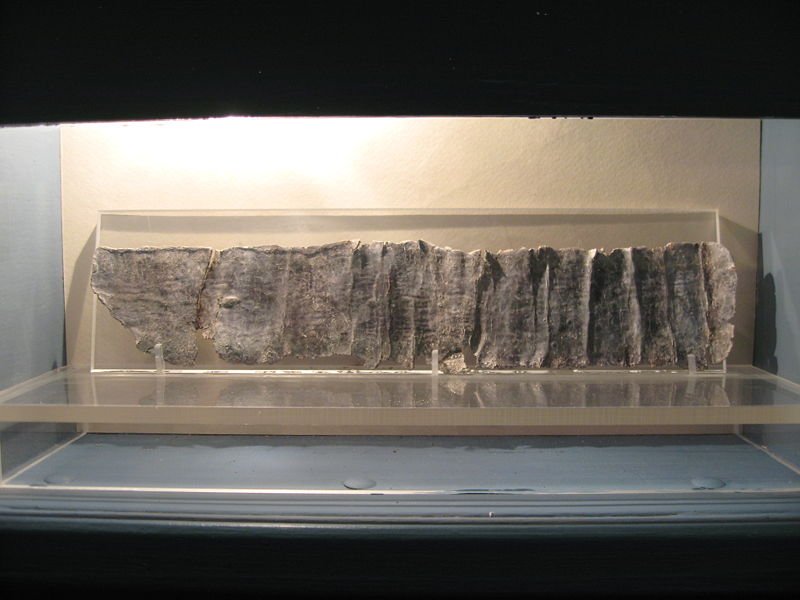


1: [ Ε]ΜΑΣ ΚΑ Ι ΔΙΟΝΥΣΟΦΩΝ ΤΟ ΣΤΟΤΕΛΟ ΣΚ ΑΙ ΤΟ ΝΓΑ ΜΟΝΚΑΤΑ ΓΡΑΦΩΚΑ ΙΤΑ ΝΑ ΛΛΑΝ Ε]ΜΑΣ ΚΑ Ι ΔΙΟΝΥΣΟΦΩΝ ΤΟ ΣΤΟΤΕΛΟ ΣΚ ΑΙ ΤΟ ΝΓΑ ΜΟΝΚΑΤΑ ΓΡΑΦΩΚΑ ΙΤΑ ΝΑ ΛΛΑΝ ΑΣΑΝ ΓΥ; ΑΣΑΝ ΓΥ;
- [DZE M]AS KA I DIONISOFON TO
STO TELO SKA
I TO
NGA MONKATA GRAFOKA
ITA NA
LLAANPA SA
NGY;
''Dze, Ma, I
and Dionosifon, this body want and that is him Monkata Grafoka,
go to burn with him''
Very romantic inscription
The first line of '' The Bellas board ''
the lead roll:
-
1. [ EΜ]ΑΣ
ΚΑ Ι
ΔΙΟΝΥΣΟΦΩΝ ΤΟ Σ ΤΟ ΤΕΛΟ
ΣΚΑ Ι ΤΟ ΝΓΑ
ΜΟΝΚΑΤΑ
ΓΡΑΦΩΚΑ ΙΤΑ
ΝΑ ΛΛΑAΝ EΜ]ΑΣ
ΚΑ Ι
ΔΙΟΝΥΣΟΦΩΝ ΤΟ Σ ΤΟ ΤΕΛΟ
ΣΚΑ Ι ΤΟ ΝΓΑ
ΜΟΝΚΑΤΑ
ΓΡΑΦΩΚΑ ΙΤΑ
ΝΑ ΛΛΑAΝ Α
ΣΑ ΝΓΥ: - Makedonian "Koinon Makedonon alphabet", which the Makedonians used 100 years before the Adzeo/Danais, the base of them is the Nubians of Nubia - Africa. Α
ΣΑ ΝΓΥ: - Makedonian "Koinon Makedonon alphabet", which the Makedonians used 100 years before the Adzeo/Danais, the base of them is the Nubians of Nubia - Africa.
[DZE M]AS KA I DIONISOFON TO
STO TELO SKA
I TO
NGA MONKATA GRAFOKA
ITA NA
LLAANPA SA
NGY - the alphabet of the Blossom (in so-called Latin alphabet)
- - [
 EΜ]ΑΣ (Dze, Ma, Dze not ''Zeus'' is the god of the
Sun, thunder - lightning, Ma is the goddess Great Mother) ΚΑ Ι
ΔΙΟΝΥΣΟΦΩΝ (I how and Dionosifon),
ΤΟ Σ ΤΟ ΤΕΛΟ
ΣΚΑ (this body want)
I TO
NGA (and that is him) ΜΟΝΚΑΤΑ
ΓΡΑΦΩΚΑ (Monkata Grafoka,
so that's the name of the girl), ΙΤΑ
ΝΑ ΛΛΑAΝ EΜ]ΑΣ (Dze, Ma, Dze not ''Zeus'' is the god of the
Sun, thunder - lightning, Ma is the goddess Great Mother) ΚΑ Ι
ΔΙΟΝΥΣΟΦΩΝ (I how and Dionosifon),
ΤΟ Σ ΤΟ ΤΕΛΟ
ΣΚΑ (this body want)
I TO
NGA (and that is him) ΜΟΝΚΑΤΑ
ΓΡΑΦΩΚΑ (Monkata Grafoka,
so that's the name of the girl), ΙΤΑ
ΝΑ ΛΛΑAΝ Α (go - is rushing) NA LLAAMPA (to shimmering
- to burn) ΣΑ ΝΓΥ (with him). Α (go - is rushing) NA LLAAMPA (to shimmering
- to burn) ΣΑ ΝΓΥ (with him).
- The 1. line: ''Dze, Ma, I
and Dionosifon, this body want and that is him
Monkata Grafoka, go to burn with him''.
1. [ EΜ]ΑΣ
ΚΑ Ι
ΔΙΟΝΥΣΟΦΩΝ ΤΟ Σ ΤΟ ΤΕΛΟ
ΣΚΑ Ι ΤΟ ΝΓΑ
ΜΟΝΚΑΤΑ
ΓΡΑΦΩΚΑ ΙΤΑ
ΝΑ ΛΛΑAΝ EΜ]ΑΣ
ΚΑ Ι
ΔΙΟΝΥΣΟΦΩΝ ΤΟ Σ ΤΟ ΤΕΛΟ
ΣΚΑ Ι ΤΟ ΝΓΑ
ΜΟΝΚΑΤΑ
ΓΡΑΦΩΚΑ ΙΤΑ
ΝΑ ΛΛΑAΝ Α
ΣΑ ΝΓΥ: Α
ΣΑ ΝΓΥ:
-
1. '' For weddings of
Tetima and Donisofontis i bring forth a magic for everyone else
'' - today's Greek translation of the version, Absolutely not
correct, they don't understand the language
The name of the
"greeks" was given by the Romans, to the members of the Achean League.
Greece,
Ellas or Hellas for the first time in history is get into 1829 year with the assistance and protection of
France, Imperialist Great Britain and Imperialist Tsarist (Kingdom) Russia, of course, Garibaldi (the well-known testimonies from the newspapers of that time), the "unifier" of Italy, who was a mercenary at that time, also took part, under the leadership of King OTTO from Vitelsbah
the Prince of Bavaria born in Salzburg, June 1, 1815 and died in Bamberg July
26, 1867.
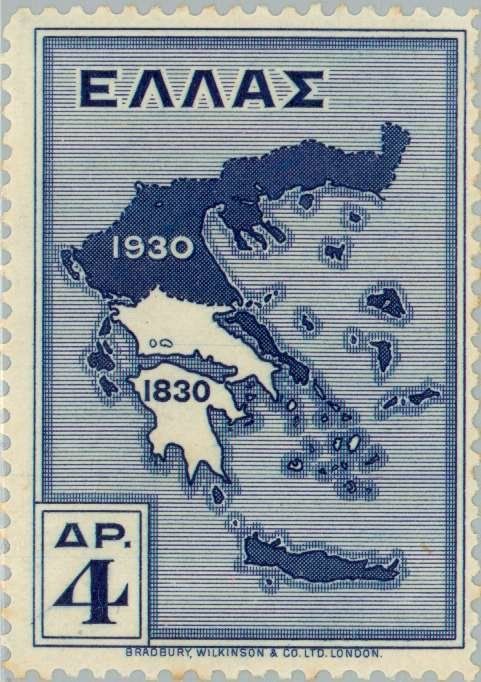 Expansion
of Greece 1830 - 1930, postage stamp, for
the memory of the Greek expansion Expansion
of Greece 1830 - 1930, postage stamp, for
the memory of the Greek expansion
Before 1830, none Makedonian from the Makedonian territories declared he selfe as "Greek", such a record has not been recorded anywhere in history, for the simple reason that Greeks and Greece never existed before 1830, and it is an artificial creation of the foreigners.
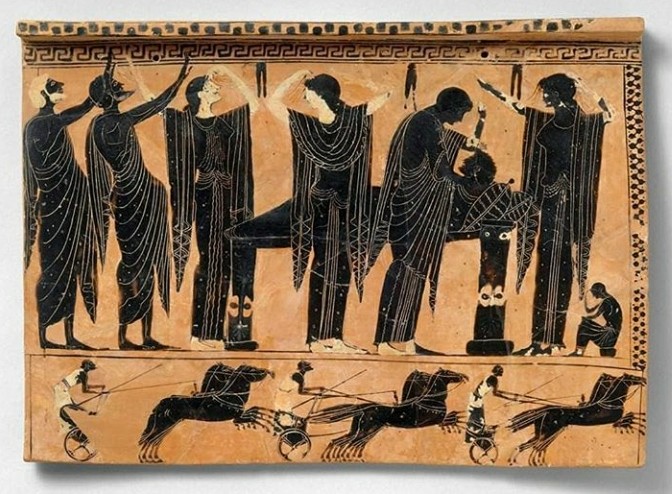
The Adzaians, the Peninsula of Adzenika (Attica), ''Metropolitan Museum of Art '' - Baked clay '' burial '' 520 - 510 BC.
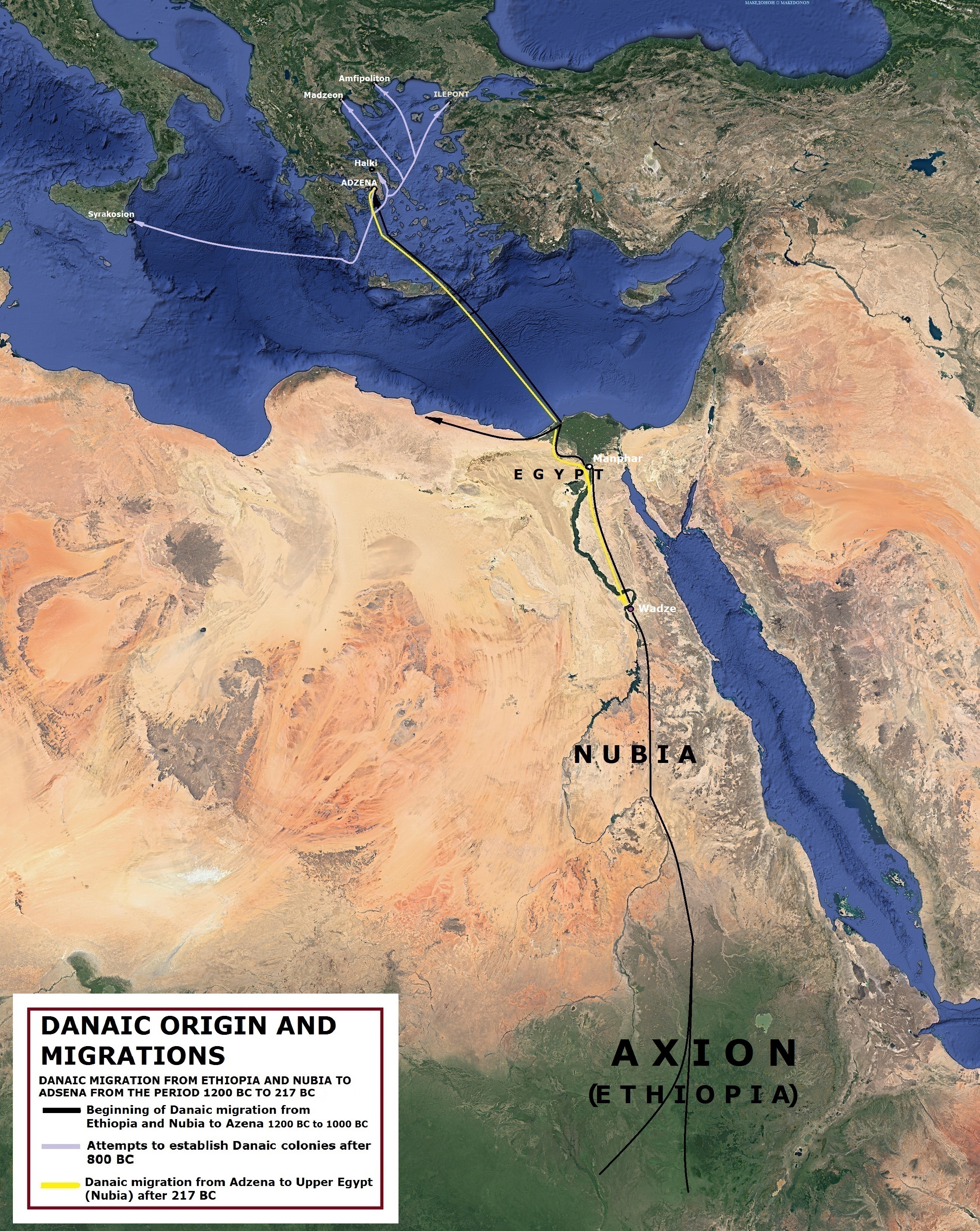
Danaic origin and migrations
.
The Danais of Adzena , the Peninsula of Adzenika (Attica) and the base of them is the Nubians of Nubia,
ARE NOT Pelasgians, like today, the odierne Greeks persistently lie.
[6]
Gnaeus Pompeius Trogus one of the biger experts of ancient
Makedonian history AND hime selfe life in the time of ancient
Macedonians when Makedonians be inslaved by the Romans IT WRITES:
The ''Makedonians'' have PELAZGIAN (the whites) ORIGIN (Justin.
VII, 1, 3)
''IIloti'' the whites not assimilated,
for the Spartans were slaves unworthy of their military-religious alliance ''the Amphitheonia'', who used them to work in the agricultural fields, like slaves.
The Amphictonia it's military-religious alliance its purpose was to defend itself from Persia.
The Adzeians (Danai's), were helping Ionians from Dzenica (Asia Minor), 499
– 493 BC in the unsuccessful uprising against the Persians. For revenge
in 480–479 BC Persians and their vassals, under the guidance of
Xerxes, made invasion to Adzena and burning it, leaving some of the army's 90,000 soldiers in Voioa (Boeotia) to spend
winter and the next summer to made invasion to occupy it permanently Adzena.
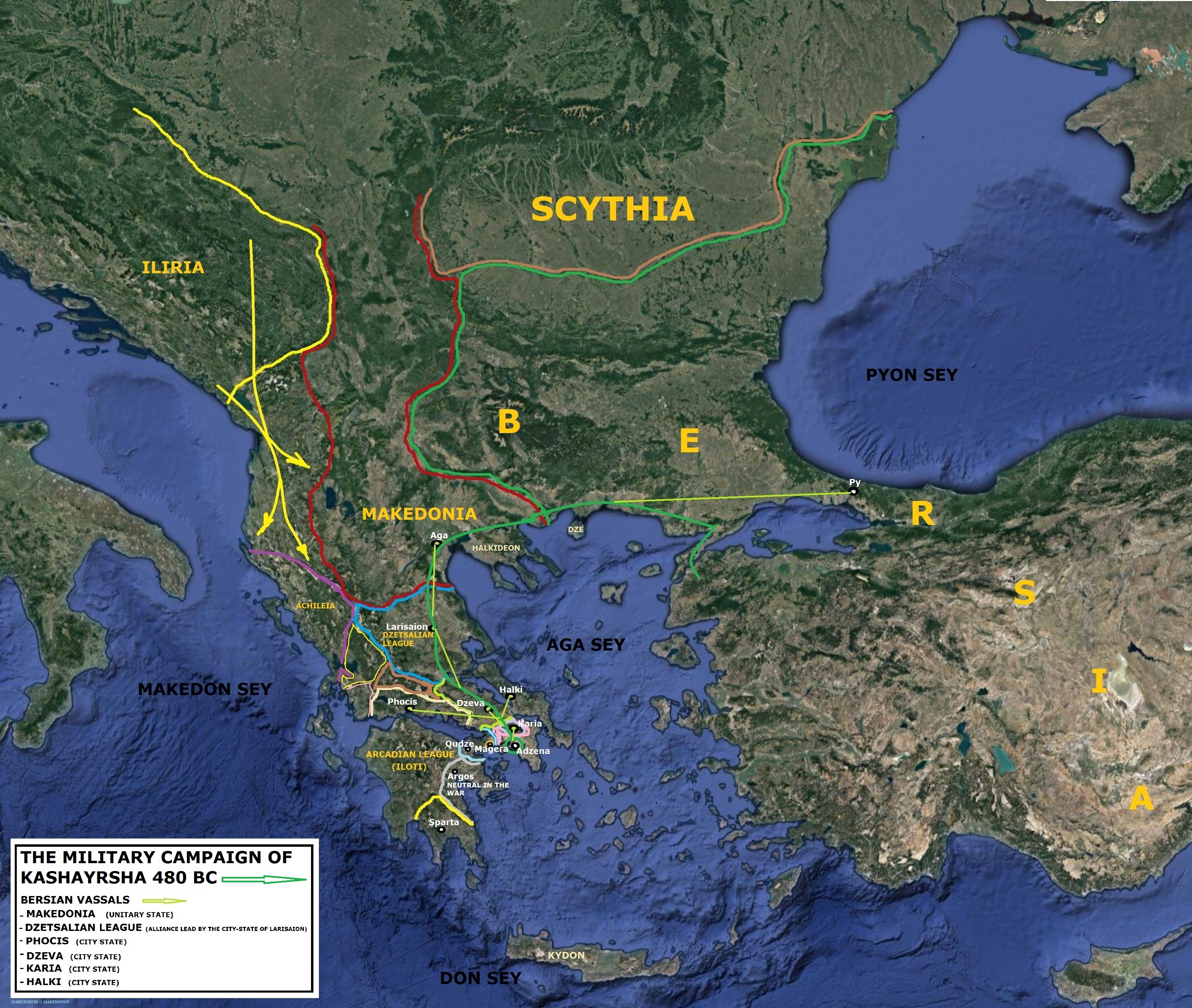
THE MILITARY CAMPAIGN OF OF XERXES 480 BC
.
Parts from Makedonia all the way to Voioa (Boeotia) were occupied and now they as vassals of the the
Persians take part in that war ilke the vassals.
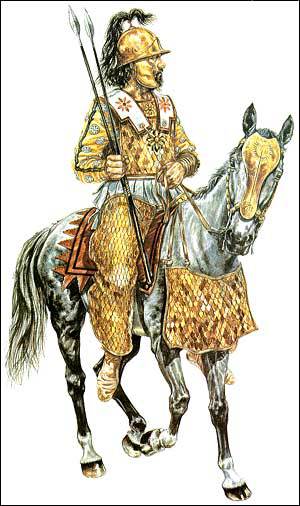
Makedonian vassal who worked as a mercenary for the Persians, from the time of the Persian ruler Karosh (not Cyrus9 the Great
From gratitude to Vasileos Alexander the First, the
Makedonian vasileos (ruler) who fought as a vassal on the side of Persia, and gave them military information, (meaning he was a spy) to the
United City States - of the Amphitheonia (it is not known if that military alliance existed at the time Delphi and Phocis were Persian vassals, at the time) and United City States
of the Ilioti - Arcadinan League, not assimilated
Pelasgians from the Peninsula of Dze (Peloponnese), Vasileos Alexander the First was later ally to the military-religious alliance the Amphictonia, but he was not a
"Danai", nor a cousins of the Danai's.
Vasileos Alexander the First, and was recognized the descendants of Arakleon (Hercules).
The Amphioctioniktic League is a religious alliance in which Makedonia was admitted only in 346 BC. means not in the time of the Makedonian ruler Vasileos Alexander the First.
We need to mention that Vasileos Alexander the First, with his soldiers participated as a vassal and struggled on the side of the Persians,
in that war, he assisted the United City States - the Amphictonia and United City States
of the Ilioti - Arcadinan League, not assimilated
Pelasgians from the Peninsula of Dze (Peloponnese), in the fight against the Persians, with military informations,
to convince him, for military interests reasons, because the Persians could still attack,
the military - religious alliance Amphictonia, Vasileos Alexander the
First, the Makedonian vasileos, was ally into their military religious alliance,
absolutely NOT because he was a cousins of the "Danai", nor a cousins of the Danai's, but of military interests, so he was recognized that he was a descendant of Arakleon (Hercules) And his Argos ancestry - Argos not assimilated
Pelasgians from the Peninsula of Dze (Peloponnese).
In the final battle with the Persians under the leadership of Persian General Mardonius in Voia (Boeotia) 479 BC, where the Persians to spend
winter, in the army of the United City States - the Amphictonia and United City States
of the Ilioti, not assimilated
Pelasgians from Peloponnese,
there were 35,000 solders ''iloti'', of the total number of 70,000 solders
(copliti) in the army of the United Cities states, the the Amphictonia and the Iloti.
Alexander was the son of the Makedonian vasileos Amyntas
First and Makedonian Vasilissas (Queen) Eurydice. He had a sister named Gygaea.
He gave his sister for marriage to the Persian general Bubares, in the late 6th century BC who was in
Makedon at the time, in order to stop him from searching for Persian soldiers who had been killed by Alexander's men following his
commands.
Alexander FIRST came to the throne during the era of the Makedonian kingdom's vassalage at the hand of Achaemenid of Persia, dating back to the time of his
father, Amynta FIRST, although Makedon retained a broad scope of
autonomy. In 492 BC it was made to a fully subordinate part of the Persian Kingdom by Mardonius'
campaign. At that time, Alexander was on the nominal Makedonian
throne. Alexander further acted as a representative of the Persian governor Mardonius during peace negotiations after the Persian defeat at the Battle of Salamis in 480 BC.
In later events, Herodotus several times mentions Alexander
FIRST of Makedon as a man who is on Xerxes' side and follows the assigned
tasks.
Aristides, commander of the Adzena (Danai's), informed by Alexander
FIRST of Makedon that delaying the encounter with the Persians would help further diminish their already low supplies. Battle of Plataea, 479 BC.
From the time of Mardonius' conquest of Makedon, Alexander FIRST
is referred to as hyparchos by Herodotus, meaning subordinate
governor. Despite his cooperation with Persia, Vasileos Alexander the First,
frequently gave supplies and advice to the United City States, and warned them of Mardonius' plans before the Battle of Plataea in 479 BC. For example, Alexander
Vasileos Alexander the First,
warned the United City States in Tempe to leave before the arrival of Xerxes' troops, as well as notified them of an alternate route into Dzetsalia (Thessaly) through upper
Makedonia. After their defeat in Plataea, the Persian army under the command of Artabazus tried to retreat all the way back to Dzenika (Asia Minor). Most of the 43,000 survivors were attacked and killed by the forces of
Vasileos Alexander the First
at the estuary of the Strymon river. Alexander eventually regained
Makedonian independence after the end of the Persian Wars.
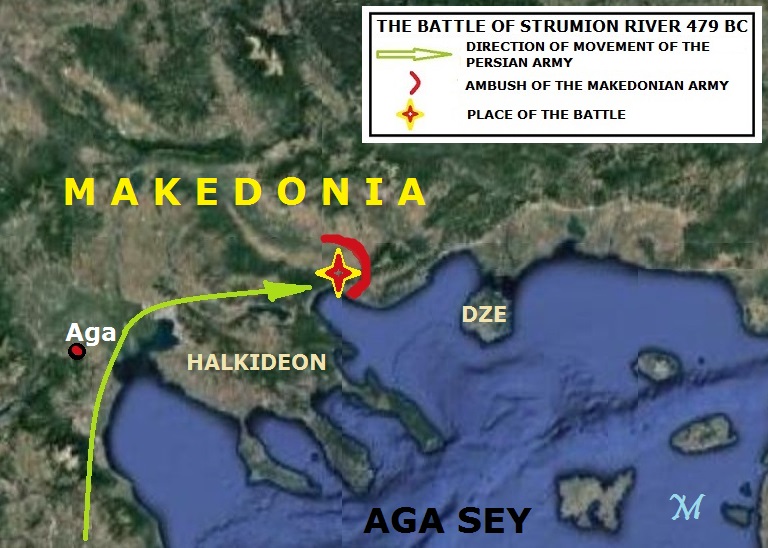
THE BATTLE OF STRUMION RIVER 479 BC, marks the end of Persian domination in Makedonia This battle is largely hidden from "historians" or the poor people have not heard of it
We need to mention that Vasileos Alexander the First, with his soldiers participated as a vassal and struggled on the side of the Persians,
in that war, he assisted the United City States - the Amphictonia and United City States
of the Ilioti - Arcadinan League, not assimilated
Pelasgians from the Peninsula of Dze (Peloponnese), in the fight against the Persians, with military informations,
to convince him, for military interests reasons, because the Persians could still attack,
the military - religious alliance Amphictonia, Vasileos Alexander the
First, the Makedonian vasileos, was ally into their military religious organization,
absolutely NOT because he was a cousins of the "Danai", nor a cousins of the Danai's, but of military interests, so he was recognized that he was a descendant of Arakleon (Hercules).
The Amphictonia were military-religious alliance, their main goal was to assimilate and subjugate, its purpose was to defend itself from Persia.
It should be clearly known that the Makedonians, Phochians and Voioans (Boeotians) were not "Danai's", they were first vassals of Persia, they burned Adzena (Danai's) together with Persia, then after rejecting of the Persian occupation, they became members of the Amphictonia.
In honor of the victory over
Persia, Makedonian ruler - vasileos (king) Alexander FIRST organize the Olympic
Games to the north side from the Makedonian Holy Mountain OLIMP.
At those Olympics Alexander FIRT invites all nations who took part
in the fight against Persia. WITH
THAT THESE GAMES HAVE BEEN Were
FIRST INTERNATIONAL GAMES Organized by the Makedonians.
Battle of Plataea
.
Xerxes
FIRST wanted to destroy the small Peninsula Adzenika (Attica), the Adzeians ( Danai's), and the reason was that they helped
the Ionic uprising
against Persia for 10 years in Ionia. And his father gave an order to his slave to remember him every day, that he must undertake a revenge on the Adzeians (Danai's).
The Battle of Plataea was the final land battle during the second Persian invasion of
Adzenika. It took place in 479 BC near the city of Plataea in Voioa (Boeotia), and was fought between an alliance of the the United City States - the Amphictonia (including Sparta, Adzena (Danai'ss), Qudze (Corinth) and Megara), in the final battle with the Persians under the leadership of Persian General
Mardonius in Voioa (Boeotia) 479 BC, where the Persians to spend
winter, in the army of the United City States of the Amphictonia and United City States
of the Ilioti- Arcadinan League, not assimilated
Pelasgians from the Peninsula of Dze (Peloponnese),
there were 35,000 solders ''iloti'', of the total number of 70,000 solders
(copliti) in the army of the United Cities States of the Peninsula of Dze (Peloponnese) and the Persian State of Xerxes
FIRST, allied with Makedonians, Phochians, Voians (Boeotians, Dzetsalians (Thessalians), Caria, a neighboring city-state of
Aadzena and Makedonians.
The previous year the Persian invasion force, led by the Persian king in person, had scored victories at the battles of Dzermopole (Thermopylae) and Artemisium and conquered Dzetsalia (Thessaly), Phocis, Voioa (Boeotia), Eyvoia (Euboea) and Adzenika (Attica). However, at the ensuing Battle of Salamis, the Allied United city states navy had won an unlikely but decisive victory, preventing the conquest of the the Peninsula of Dze (Peloponnese). Xerxes then retreated with much of his army, leaving his general Mardonius to finish off the Adzeians (Danai's) the following year.
In the summer of 479 BC the United City States
assembled a huge (by ancient standards) army and marched out of the Peninsula of Dze (Peloponnese). The Persians retreated to Voioa (Boeotia) and built a fortified camp near Plataea. The
United City States, however, refused to be drawn into the prime cavalry terrain around the Persian camp, resulting in a stalemate that lasted 11 days. While attempting a retreat after their supply lines were disrupted, the
United City States
battle line fragmented. Thinking the United City States in full retreat, Mardonius ordered his forces to pursue them, but the
United City States
(particularly the Spartans, Tegeans and Adzeians halted and gave battle, routing the lightly armed Persian infantry and killing Mardonias.
A large portion of the Persian army was trapped in its camp and slaughtered. The destruction of this army, and the remnants of the Persian navy allegedly on the same day at the Battle of Mycale, decisively ended the invasion. After Plataea and Mycale the United City States
allies would take the offensive against the Persians, marking a new phase of the
United City States-Persian Wars. Although Plataea was in every sense a resounding victory, it does not seem to have been attributed the same significance (even at the time) as, for example, the Adzeians victory at the Battle of Ma-ra-dze-on (not Marathon) or the Spartan defeat at Dzermopole (Thermopylae).
SO THE United City States under the crossing of Dzermopole (Thermopylae) in the Peninsula of Dze (Peloponnese),
they was not ALL assimilated Pelasgians Cities states from the Peninsula of Dze.
ILOTI WAS NOT assimilated Pelasgians from the Peninsula of Dze.
Voioa (Boeotia) and the Voians (Boeotians), with the City states
of Dzeva (Thebes), (The Sacred Band of Dzeva), were assimilated by the Phoenicians,
NOT BY
the Danai's, who the base is the Nubians of Nubia.
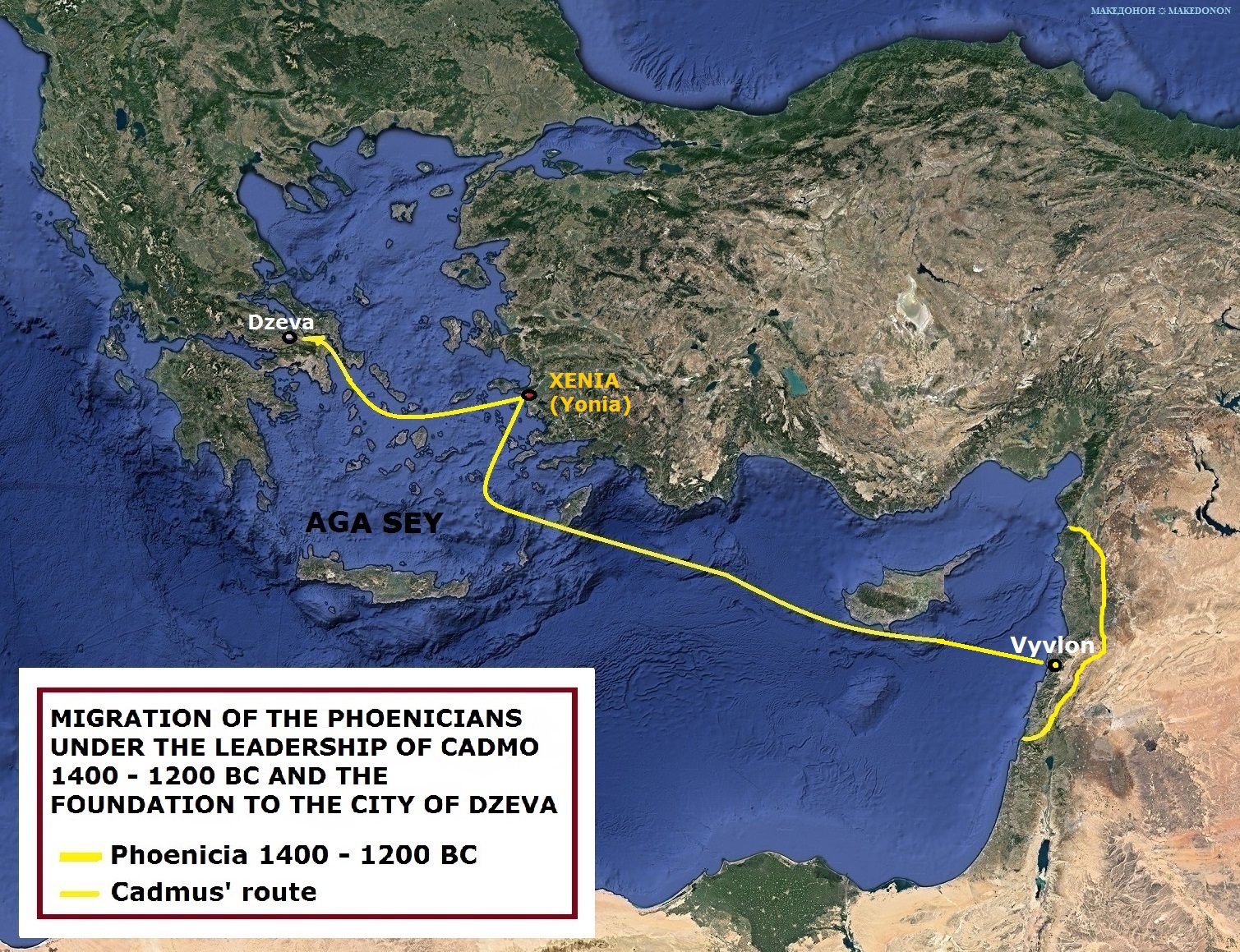
MIGRATION OF THE PHOENICIANS UNDER THE LEADERSHIP OF CADMO 1400 - 1200 BC AND THE FOUNDATION TO THE CITY OF DZEVA
The founder of Dzeva (Thebes) is the Phoenician,
Cadmo or Cadmus, who came with a large army to Voioa (Beotia), a former Pelasgian
(populated by whites) province, in search of his sister Dzeia (Europe). Diodorus (110 III
p. 305).
Pausanias; (9.5.2)
''When the phoenician army under CADMUS invaded the land these tribes were defeated; the Hyantes fled from the land .... when night came, but the Aones begged for
mercy''.
Cadmus, Phoenician founder of Dzeva (Thebes) and brother of Dzeia (Europa) taught
to the Ionians the alphabet, which he had brought from Phoenicia,
in the neighborhood were Ionians; they were taught these letters by the Phoenicians and adopted them, with a few
alterations.
The Greeks of today, think Cadmus is mythology and the letters give them ''Zeus'' the Greeks of today you have to learned youre TRUTH history.
The remains of the palace of Cadmus in Dzeva (Thebes) date from about
1400 - 1200 BC, according to the archaeologists.
Cadmus, in search of his abducted sister Dzeia (Europa), settled in Voioa (Boeotia), which some say he invaded with a Phoenician army, founding in this new land the city of Cadmea, later called Dzeva (Thebes). Cadmus is credited for having combined consonants with vowels, thus teaching the secrets of correct
speech.
The Adzeians (Danai's), which even
in 403 BC. during the reign of the tyrant Euclid (Papastavrou,
1972, 61) in Adzena "introduced" the alphabet "KOINE", 100 years after the Makedonia.
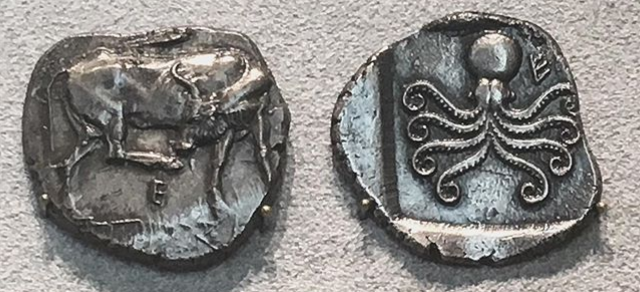 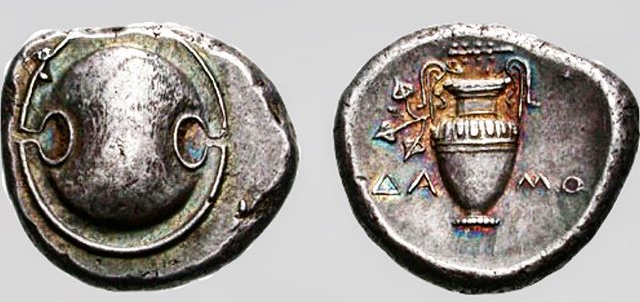
Dzevan (Theban) coins
Arodotus, an ancient Henian historian, (if it is true, the writing must be read like this) writes that earlier the whole of Adzenika (Attica) was inhabited by Pelasgians -
WHITE - the WHITE, but with the arrival of the Danai's in Adzenika, the Pelasgians were assimilated into that part of the the Peninsula of Dze (Peloponnese), but there were still living
Pelasgians. (Arodotus not ''Herodotus''
I, 57-58).
DZENA is the real ancient name of the city of Adzena, not "Athens", the inscription "Athena" appeared with the arrival of the Romans in the Peloponnese, when Danai's conquered the city of Dzena they renamed the city in Adzena.
- Arrodotus (if it is true, the writing must be read like this):
''Adzena (the Danai's city) is old Pelazgian city''.
''The defensive walls of (DZENA is the real ancient name of the city not "Adzena", the inscription "Athena" appeared with the arrival of the Romans in the Peninsula of Dze (Peloponnese).) Adzena were built by the Pelasgians''. -
(Arrodotus I). When conquered Danai's city of Dzena, has changed its name to Adzena.
It is believed that the Danai's of Nubia occupied the city of Dzena, which was inhabited by Pelasgians, from
1200 to 800 BC.
After the Doric invasion of the North, on Mycenae and the the Peninsula of Dze (Peloponnese) from the time of 1600 - 1200 BC, there is a so-called by modern historians: "dark Greek time" - nothing has been known for 300 or more
years.
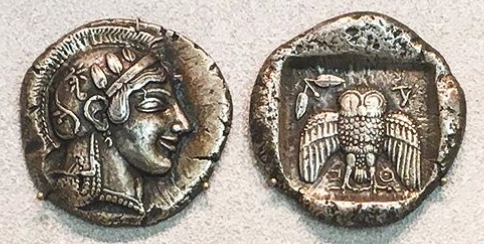  ADZE ADZE
Adzeians (Danai's) coins with the alphabet
"koine", minted after 403, before that they did not have a letter, for that purpose.
Origin of the Adzeians (Danai's) are Nubians of Nubia.
The Amphictonia were military-religious alliance, their main goal was to assimilate and subjugate, its purpose was to defend itself from Persia.
It should be clearly known that the Makedonians, Phochians and Voioians (Boeotians) were not "Danai's", they were first vassals of Persia, they burned Aadzena together with Persia, then after rejecting of the Persian occupation, they became members of the Amphictonia.
Amphictonia - Amphi cto nia (Assembly how us) - is a military religious alliance for defending of Persia, was a substitute for the The League of Dze (Corinthian League), which is a wider military alliance, but for to attack on Persia, organized by the Makedonian ruler, vasileos Philippoy Makedonon, who was elected lifelong leader of the union, and his successors were to lead the The League of Dze. Another important thing was, was that the war between the members of the The League of Dze alliance was forbidden, unlike the Amphictonia, in which the members fought between them.
 480 BC.JPG)
POLITICAL CONDITIONS UNDER AND AROUND THE PASS OF DZERMOPOLE (THERMOPOLEUS) 480 BC
Amphictonia - Amphi cto nia, was military religious alliance for defending of Persia and strong nations took part in it, in order to defend themselves from Persia, while they did not receive the weaker ones, but on the contrary sought to subdue them. It contained: Adzena (the Danai's) city state, Sparta - city state (the Spartans were the white - Pelasgians), Phoenicians - Dzeva (Thebes) city state, Makedonia a unitary monarchy, Phocia - the white - Pelasgians, on their territory was the holy city of Delphi with the spiritual-religious leader - '' oracle - o'rakle''. They practiced the ancient faith with the 12 gods led by the God of Light - DZE, for some DZE, for Adzeians ( Danai's) was Adze , Xe, etc.
272. "People create gods in their own image, not only in terms of their form but also in their way of life," said. Аristotele.
So every nation made gods like it, for example, Makedonian goddess Dzena (t'Atina - dad daughter), which was a universal goddess in antiquity.
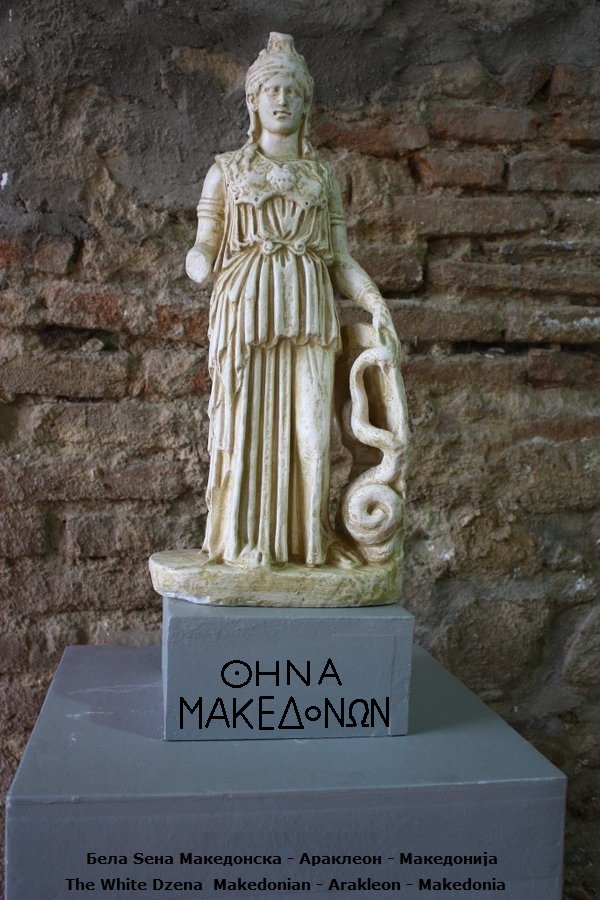
DZENA of Makedonia ( t'Atina - dad daughter) from Arakleon (v. Bukovo - Bitola) - Republic of Macedonia
While the Adzeians ( Danai's) the base is the Nubians of Nubia, made they own ''Danai's god of light ADZE'':
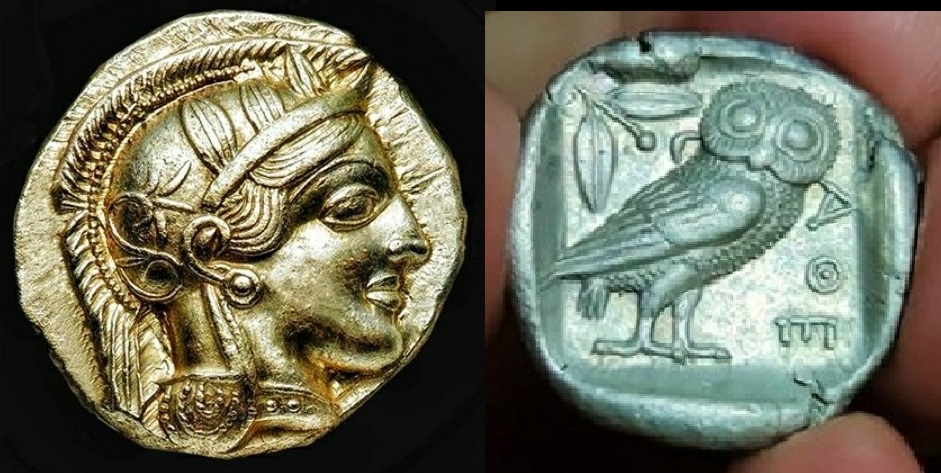
Adzaeos/Danai's god of light ADZE
At peace with Persia, the members of the Amphictonia fought among themselves, as is the case between Adzena and Sparta and Sparta against Dzeva (Thebes), in order to become dominators over the union. Sparta even managed to conquest Adzena (Danai's) and try to administer it, but it failed, the Spartans were not suitable for "administrator''. The Spartans put 12 tyrants (the tyrant was the Adzenian (Danai's) president elected by the Adzenian people) to the government in Adzena (Danai's), but the 12 tyrants were so bad with the people that the people rebelled and drove them out, hence the word "tyrant" became the epitome of malice. That is why today they are stealing our Makedonian word ''vasileos - your light'' today the Greeks. Ruler - ''avachto'' is for the Spartans, ''the tyrant'' for Adzena (Danai's). Today there are no more ''Danai '' and ''Spartans'', and the ''greeks'' are not ancient,but a creation of Otto of Bavaria.
The Romans gave the name "greeks" to the members of the Achaean League, meaning the names: "greeks" and "greece" were imposed by foreigners.
The terms: '' athens '', '' athenians '', '' greece '', greeks '', '' hellas '', '' ellas '' were not known to the Makedonians rulers vasileos Makedonon Philippoy and his son Vasileon Makedonon Alexandroy, from these forged names, we Makedonians can we evaluate forged ancients texts. As soon as we notice such fake names we should know that text, the inscription, etc. is a forgery.

Snippet from the "mistake" from the 3rd text of a ''Rosetta Stone''

On the 54nd line from the Rosetta Stone we find the words: ''HORIO IS KAI ELA A NIKO IS GRAMMA SIN'' - VILLAGE IS FROM COME FOR VICTORY IS LETTER OF SIGN'' - ''The place where they come from to win is a written sign''. From here the Greeks "draw" their identity, from a lie, there is no "ellas" in antiquity.
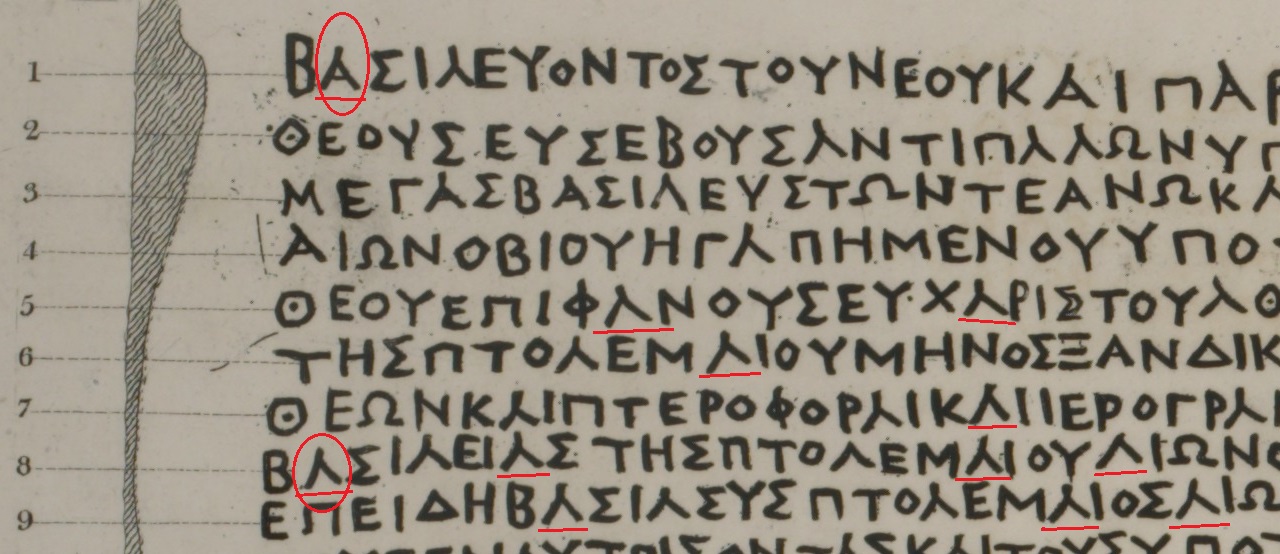
The Rosetta Stone 3rd text abounds with ''carved '' mistakes of which is the most represented ''L = A'', see for yourself.

S' МА RА DZEON AKROPOL A, they want to sell us, our ancient faith, our types of temples and architecture, as their invention and without shame. ''МА - ARА - DZEON'', the grandmother, mother and father of Dzena, the Greeks "sell" to the tourists as "athens", they are either illiterate or hiding, they are probably hiding the truth, but it is possible that they are illiterate, why it suits them so.
Before the arrival of the Romans in the Peninsula Adzenika (later renamed Athika), there were none ''athenians'', not only ''greeks'', ''hellens'' or ''ellas'' and so on, but there was: ''ADZI'', ''ADZEI'' or ''ADZAEOS'' - so called Danai's (Danai's according to the Rosetta Stone)..
The inscription on the Adzeo/Danaic coins - ''АDZE'',  , could mean and: ''А DZE'' - ''gift for DZE'', means the letter''А'' separately from ''DZE'', , could mean and: ''А DZE'' - ''gift for DZE'', means the letter''А'' separately from ''DZE'',  - ''DZE ON'' (from the Rosetta Stone, the third text for the Adzeo/Danai's), or only ''DZE'', there is for sure inscriptions, the name of the ''god of light'' to the adzaians (Danai's) was named as ''АDZE''. - ''DZE ON'' (from the Rosetta Stone, the third text for the Adzeo/Danai's), or only ''DZE'', there is for sure inscriptions, the name of the ''god of light'' to the adzaians (Danai's) was named as ''АDZE''.
So the Makedonians and others before the Romans came to Peninsula Adzenika and Peninsula of Dze (Peloponnese), were in contact with: ''ADZAI'',  - ''ADZAEOS'', not with: ''athenians'', and the name of the city-state, was: ''ADZA'', ''ADZEA'' or - ''ADZAEOS'', not with: ''athenians'', and the name of the city-state, was: ''ADZA'', ''ADZEA'' or  - ''ADZENA'', the Peninsula (later renamed to Attica) was named as: ''ADZEIKA'' or ''ADZENIKA'', forgers of historical counterfeiters facts are caught and warned that the whole forgery of counterfeit history has been discovered. - ''ADZENA'', the Peninsula (later renamed to Attica) was named as: ''ADZEIKA'' or ''ADZENIKA'', forgers of historical counterfeiters facts are caught and warned that the whole forgery of counterfeit history has been discovered.
But those poor people may not be to blame, they were simply illiterate.
The Makedonians in their inscriptions named the city of as: "DZENA", (the place of the city where today's Athens is located) the inhabitants of the city as: "DZEIANS", and the Peninsula was named as: DZEIKA (how and Dze) "DZENIKA" (victory of Dze), are probably those is the ancient names, until the city "DZANA" did not fall under "Danai's rule and assimilation" and they added the letter "A" to the name of the god of light Dze, from here: ADZE (the Danai 's god of light) and ''ADZENIKA'' (the name of the peninsula, "Adze Nika" - the victory of Adze), and city of Dzena rinamed in Adzena.
Danai's originated is Nubia - Upper Egypt - Africa.
The Makedonians knew about the continent "Europe ", which they named as: Dzeia, "Middle Asia" they named as:'' '' -- Dzeika (ka i Dze - how and Dze ), while the continent "Asia " was named as: Adzeia, not much different from today 's name . The ancient name of the continent "Asia" needs to be further determined. '' -- Dzeika (ka i Dze - how and Dze ), while the continent "Asia " was named as: Adzeia, not much different from today 's name . The ancient name of the continent "Asia" needs to be further determined.
The letter: ''  '' - DZ, w as dedicated to the god of the light DZE. Now the name of the city or the Akropole (Acropolis) is in question, whether they were dedicated to the god of light DZE, or to his daughter Dzena. In the ancient inscriptions, the god of light DZE is always named as: '' - DZ, w as dedicated to the god of the light DZE. Now the name of the city or the Akropole (Acropolis) is in question, whether they were dedicated to the god of light DZE, or to his daughter Dzena. In the ancient inscriptions, the god of light DZE is always named as:  - DZEON (excerpt from the Rosetta Stone, the third text who is intended for the Danai 's), - DZEON (excerpt from the Rosetta Stone, the third text who is intended for the Danai 's),  - DZEOY (excerpt from the Rosetta Stone , the third text who is intended for the Danai 's),, '' - DZEOY (excerpt from the Rosetta Stone , the third text who is intended for the Danai 's),, '' E'' - DZE, '' E'' - DZE, '' 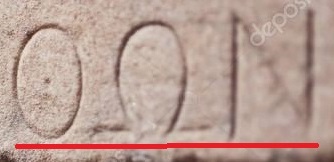 '' - DZEON or DZON, SE, DE, '' - DZEON or DZON, SE, DE,
 - ''ADZE'' (among the Adzaians),: - ''ADZE'' (among the Adzaians),:
'' '' - ZO ILOY, (excerpt from a coin from the Makedonian ruler Berseos, ''Ber Dze'' - White as Dze, not ''Perseos'', why is it misread), '' '' - ZO ILOY, (excerpt from a coin from the Makedonian ruler Berseos, ''Ber Dze'' - White as Dze, not ''Perseos'', why is it misread), ''  E'' - KSE, but never as a "zeus", so in this way you can recognize the forgeries. E'' - KSE, but never as a "zeus", so in this way you can recognize the forgeries.
There is no such inscription on the Akropole - ''acropolis'' in present-day in Athens: ''  '', and this inscription comes from a "decree" that they are hiding why the language of the board is different from the current Greek language '' '', and this inscription comes from a "decree" that they are hiding why the language of the board is different from the current Greek language '' '' , also this inscription on this board '' , also this inscription on this board
'' '' - ADZENA = '' '' - ADZENA = ''  ''- ATHENA = ATINA (Athens). ''- ATHENA = ATINA (Athens).
There is no ancient statue of Athena in the Akropole (Acropolis) either, some Roman (Byzantian) "records" claim (perhaps a forgery) that the statue of Adzena (Athena) was taken to Constantinople, but why did it bring misfortune to the city , they threw her into the sea.Apart from some records that can be falsified about the "ancient" statue, there is nothing else on the subject, except fantasies and fakes.
'' '' - ADZENA, if we interpret the noun: ADZENA - ADZE NA: '' - ADZENA, if we interpret the noun: ADZENA - ADZE NA:
- ADZE - Аdze,
- NA - to.
We conclude that the name of the city was named as the city ''to Аdze''.
We from Makedonia is ALL, we will name the residents as: ''ADZEI'' - Adzaeos - Adzeians - Adzeo-Danai's, the city state: ''ADZEA'' - Adzana - Adzena, The Peninsula: Adzeika or Аdzenika. After the arrival of the Romans, Аdzenika and The Peninsula of Dze (Peloponnese), can be Athens (the city), Attica and Peloponnese, but at least after 148 BC.
This means that in the time of the Makedonian ruler vasileon Makedonon Alexandroy there were none ,,Athenians'', ''hellens'' or ''hellas'', ''ellens'' or ''ellas'', ''greeks'' or ''greece'', if you find such a name, know that it is a forgery of counterfeit history.
I will give you an example like the city Adzena, (the Adzaeos read it in Roman time ''Adzina'', the letter ''H'' - еtа, they read it as ''I'' - Italy) and changed the name from ''  '' - ADZENA, the inscription I am showing you, it is speculated that it was from 378-376 BC, in my opinion this inscription is a forgery or from a much later period, but it does not matter: '' - ADZENA, the inscription I am showing you, it is speculated that it was from 378-376 BC, in my opinion this inscription is a forgery or from a much later period, but it does not matter:
'' '' - ADZENA I (and) ON (he ) OY, means how was changed the name of Adzena: '' - ADZENA I (and) ON (he ) OY, means how was changed the name of Adzena:
''  '' - ADZENA = '' '' - ADZENA = ''  '' - ATHINA = ATINA (Athens). '' - ATHINA = ATINA (Athens).
Hence we conclude that the name of the city was changed when the Romans modified it the alphabet "KOINON MAKEDONON" and they threw her out of the alphabet, the letter:''  '' - DZ, they replaced it with: '' '' - DZ, they replaced it with: ''  '' - TH, to abolish the god of light - ''DZE''. '' - TH, to abolish the god of light - ''DZE''.
With the arrival of the Romans in Makedonia and beyond, was replaced the letter:  - ''DZ'', with: - ''DZ'', with:  - ''TH'', to abolish the god of light - ''DZE'''. The letter: '' - ''TH'', to abolish the god of light - ''DZE'''. The letter: ''  '' - TH is the Roman ''product''. '' - TH is the Roman ''product''.
The Adzao/Danai's as a people they no longer exist, also their language is extinct, ordinary Greeks do not know the Adzao/Danai's language.
At peace with Bersia (Persia), the members of the Amphictyoniad fought among themselves, as for example between Adzena (Danaic), Sparta and Dzeva (not Thebes), in order to become leaders of the alliance. Sparta even managed to capture Adzena and tried to administer it, but it failed, the Spartans were not considered "administrators". The Spartans put 12 tyrants (the tyrant was the Adzaian - Danai's, president elected by the people of Adzena) in power in Adzena, but the 12 tyrants were so bad with the people that the people rebelled and drove them out, hence the word "tyrant" ' has become the embodiment of evil. That is why today the Greeks are stealing the Makedonian word for ruler - "vasileos" - your light, ruler - avahtos - it is for the Spartans. Today the ''Danai's'' and ''Spartans'' no longer exist, and the Greeks are not ancient, but creation of Otto of Bavaria.
The Makedonian ruler Vasileos Philippoy Makedonon he put himself in the service of the "oracle from Delphi (De lfi) - Phocia" and fought for religious purposes 3 times, three times he led Holy Wars, of the type of "crusading wars". Vasileos Makedonon Philippoy took advantage of the rivalry between the warring members of the Amphictyoniad and managed to bring them all under control militarily, except for Sparta, which refused to be a member of the League of Dze (League of Corinth). However, in the end, Sparta also became a member of the League of Dze 330 BC, before it was dissolved, a fact that is hidden.
While the Makedonian ruler Vasileon Makedonon Alexandroy he dissolved the "League of Dze" and the soldiers from that alliance were dismissed, but they were allowed to remain as mercenaries, because he was very disappointed with the attitude of the Adzaians (Danaai's) and the Spartans, why they constantly raised rebellions against Macedonia when he was in campaign against Persia.
The Amphictyoniad league is a religious union in which Makedonia was accepted only in 346 BC. as a full member, so not during the time of the Makedonian ruler Vasileos Alexander the First.
THIS IS HOW THEY WERE FROM the military-religious alliance Amphictonia
An inscription mentioned by Didymus reveals to us that at the end of 345 BC - the inhabitants of Metsanion and Megalopoliton were NOT ASSIMILATED PELLASGIANS, they asked to be accepted into the Amphictyoniad league - military - religious alliance in that way to protects himself against attacks of the Sparta, they met with refusal, The Makedonian ruler Vasileos Philippoy Makedonon was inclined to such a transformation that would enable him to exercise supremacy over the entire Peninsula of Dze (Peloponnese) starting from Delphi.
As the Spartans renewed attacks against their neighbors, Metsanion and Megalopoliton, in the spring of 344 BC, Vasileos Makedonon Philippoy, sent mercenaries to Metsanion aid, and word spread that he himself was preparing to come to undertake a campaign against Sparta.
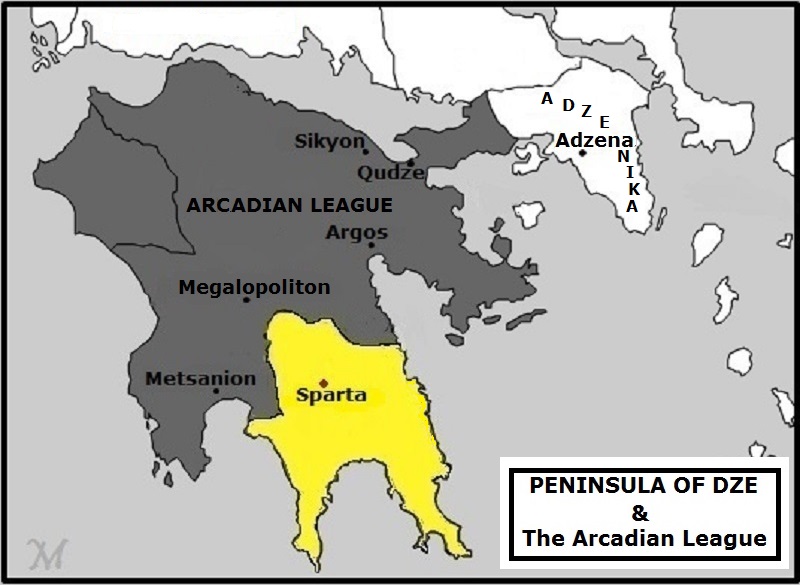
The Arcadian League, defense alliance from Sparta
.
Demosthenes succeeds in being sent by the people as an envoy to the Dze Peninsula (Peloponnese) and warns the inhabitants of Argos and Metsanion against the Makedonian alliance; because of their trust in the Vasileos Makedonon Philippoy, the inhabitants of Olindzeion saw their city destroyed, and the Dzetsalians (Thessalians) lost their freedom:
„The only protection of democracies against tyrants is mistrust".
Demosthenes fails to separate the inhabitants of Metsanion, Argos and Megalopoliton from the Makedonian alliance, but his action provokes a written objection from the Vasileos Makedonon Philippoy who is surprised by the hostile behavior of his Adzaian "allies". While the Adazaians (Dania's) agree for the answer they should give to this letter from the Vasileos Philippoy Makedonon.
.
Vasileos Phillippoy Makedonon (Philip of
Makedonia) and his son Vasileon (master of the masters)
ALEXANDROY MAKEDONON, have enslaved the cousins of the Ionians of the Peninsula of Dze (Peloponnese) and the Ionians of Asia Minor and sold them as slaves.
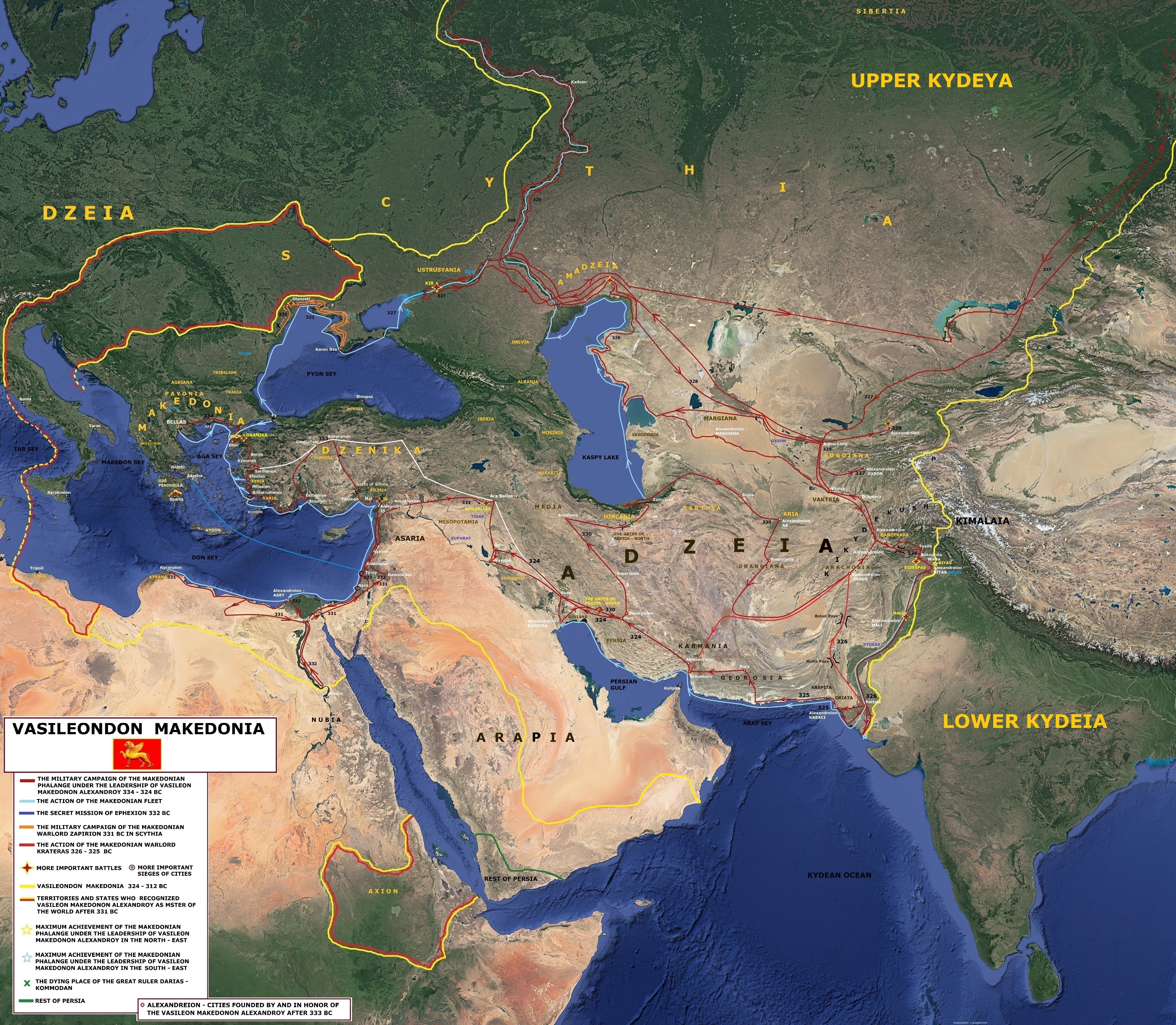
VASILEONDON MAKEDONIA - STATE OF LORD, STATE OF THE STATES
MAKEDONON VASILEONDON MAKEDONIA - STATE OF LORD, STATE OF THE STATES it existed for 12 years as a unit.
VASILEONDON Makedonon - Makedonia, (
STATE of LORD - MAKEDONIA ) of Vasileon ( king of kings ) Alexandroy Makedonon,
existed for 12 years, then as a result of a civil war it was divided.
Vasileon ( king of kings ) Alexandroy Makedonon,
has a nice declared:
''I CONQUER THE WORLD FOR THE MAKEDONIANS'',
front the Makedonian Phalanx, in the campaign against Persia.
Today's the "historians" hide,
and they do not pronounce the name correctly of the Makedonian king of
kings - Vasileon Alexandroy Makedonon.
When Vasileon Alexandroy Makedonon died in 323 BC,
Adzeians (Danai's),, with joy over the death, and Aristotle, who was at that time in Aadzena, was sued by the priest Eurimadon and sentenced to death, for this reason Aristotle he had to
go and not return to Aadzen anymore.
The
“Lamian War”, also referred to as the “War against
Makedonians ” , was fought by the Adzeians and their Aitolon (Aetolian) - which was an alliance,
Locrian, and Phocian allies against the Makedonians in Dzetsalia (Thesalia)
during the winter of (323–322 BC). The total anti-makedonian force at the outset of the war appears to have been 25,000 strong and was comprised of up to 10,000 Aadzeians, 12,000 Aetolians-which was an alliance and various contingents of mercenary
forces. Hypereides was condemned to death, fled, and was
probably captured and killed in Eyvoia (Euboea). Demosthenes was forced
to commit suicide.
If Demosthenes had the strength of your mind, you would never have had the possession of the Adzeians (Athenians - Danai), the belligerent
Makedonians - from the monument to the Adzeians (Danai's) of Demosthenes
.
'' The Adzeians (Danai's) and their allies ... at all times, cursed Philip - the Makedonian ruler, his family and his
kingdom, his forces on land and sea, and on the whole race and name of the
Makedonians." - Tito Livio
The word "ILOTI" can be interpreted very easily today in the modern Makedonian
language:
ILOTI - ILO TI, from the right to the left, as is usual, TI ILO, you are ILO, or, YOU are the one who believes in the God ILE - the god of the sun - ILOTI.
VAS ILE OS; VAS ILE ON,
МАКЕ DON ON;
МАКЕ DON I A, what words are that.
[7]
. Titus Livius, book XXX, р.
29
still exists not assimilated Pelazgians AFTER coming to the
Romans to the the Peninsula of Dze (Peloponnese) and thise is the AKARANIANS and
AETIOLIANS and they speak spread like ''Makedonians'' - Makedonians
Tit
Livi, book XXX, p. 29 the Akaranians, Aetiolians (Aetolia- was an alliance) and
Makedonias THEY SPEAK SAME language DIFFERENT and NOT IONIAN
language
- ''Aetolos, Acarnanas,
Macedonas ( Makedonians) eiusdem linguae hominess''
.
THE DARK TRUTH OF CARIATIDES
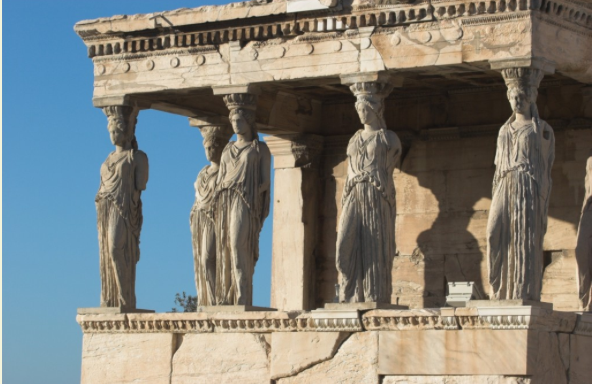 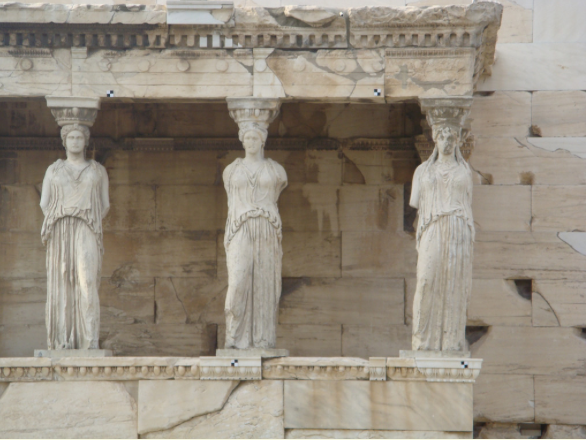 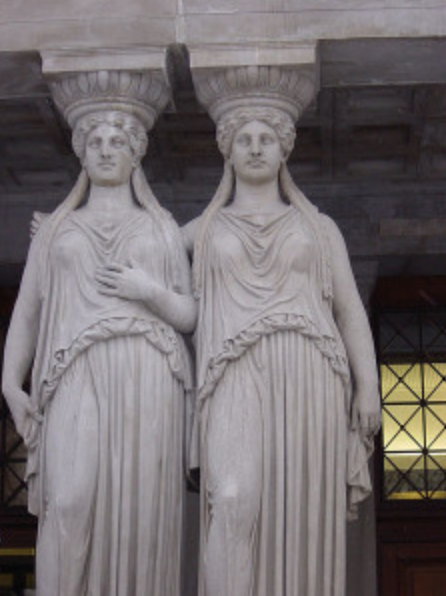 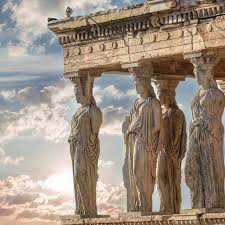
Caryatids - Korai statues at the Acropolis in Adzena (Danai's), the Ethereum Temple, male statues vs named Talamoni
''
After gloriously winning the conflict, the Danai's made the common decision to make war on the inhabitants of Caria. Having conquered the
fortress, they killed all the valid men, set the city on fire and enslaved the
women, without however making them stop the stoles or other matronial
ornaments. They wanted in fact to expiate for all their fellow
citizens, oppressed by the shame of a heavy exemplary slavery not only during the celebration of the
triumph, but forever ... The architects of the TIME then represented in the public buildings the images of the women of Caria in the act of bearing heavy
charged, wanting to remind posterity of their guilt and their
punishment.''
(De architectura, 1, 1, 5; Marco Vitruvio
Pollione)
.
Namely, it is about the residents of Caria, a neighboring city-state of Adzena, which has become an ally of the Persians. In retaliation, the
Danaia's destroyed the city, forcing the women to become sexual slaves.
It is believed that part of the Acropolis in Adzena (Athens), the Ethereum Temple was converted into a temple
(brothel) by the Adzeians (Athenians - Danai) tyrant Eretheus.
IT
'' Dopo aver gloriosamente vinto il conflitto, gli Danai (Greci) presero la comune decisione di far guerra agli abitanti di Caria. Espugnata la rocca, uccisero tutti gli uomini validi, incendiarono la città e ridussero in schiavitù le donne, senza però far loro smettere la stole o gli altri ornamenti matronali. Vollero infatti che espiassero per tutti i loro concittadini, oppresse dalla vergogna di una gravosa esemplare schiavitù non soltanto durante la celebrazione del trionfo, ma per sempre… Gli architetti del TEMPO rappresentarono allora nei pubblici edifici le immagini delle donne di Caria nell’atto di sopportare pesanti carichi, volendo ricordare ai posteri la loro colpa e il loro castigo.
''
L’Eretteo è un tempio molto particolare, in quanto costruito su più quote, diverso in ogni prospetto e non simmetrico. Si narra che sul luogo dove fu edificato il tempio avvenne la battaglia tra due divinità, Adzena (Atena) e Poseidone per il predominio della città, proprio per questo
l’Eretteo ospita due celle distinte per due diverse divinità; il culto di Posedione è inoltre identificato con quello del re
Eretteo, da qui il nome dell’insolito edificio.
Iniziato nel 421 a.C. fu terminato solo nel 409 a.C., l’edificio concluse il rinnovamento ad opera di Pericle, riproponendo un precedente tempio arcaico che ospitava i culti del tempio di Adzena (Atena). La sua irregolarità e la sua asimmetria sono dovute alla necessità di riunire in un unico luogo più edifici; si compone di un corpo centrale al quale si affiancano due minori autonomi, la parte forse più affascinante è costituita dalla loggetta delle Cariatidi, situata ad un’estremità del fianco meridionale del tempio.
(De architectura, 1, 1, 5; Marco Vitruvio
Pollione)
The statue of Adzana (Athens), paid (lies) for with the spoils of the battle of MA RA DZE ON (Marathon) and erected to commemorate its victory, was placed in its seat in 456 BC - is one version which is false, the temple dedicated to Adzana (the daughter of Adze), of Adzena, construction started in 421 BC it was finished only in 409 BC, about and constitutes one of the first works of Phidias, already known in those years to the point of becoming the official artist of Berikle (Pericles) Adzana; Phidias himself sculpted two other figures of the goddess in the Acropolis: the huge chryselephantine effigy of Adzana Parthenos in the Parthenon and the Athena Lemnia.
In 426 A.D. the statue was transferred by the emperor Theodosius 2-th to Constantinople where it seems to have remained until 1203, when it was destroyed after the siege of the Crusaders apparently by the surviving population. The news is reported by Niceta Coined although it is not certain that it is the Promachos.
.
.
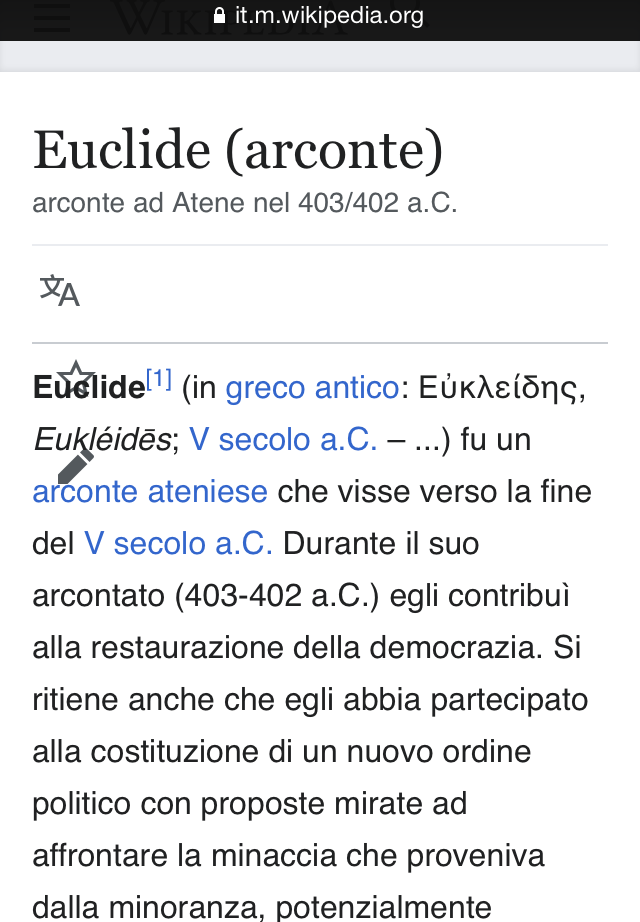 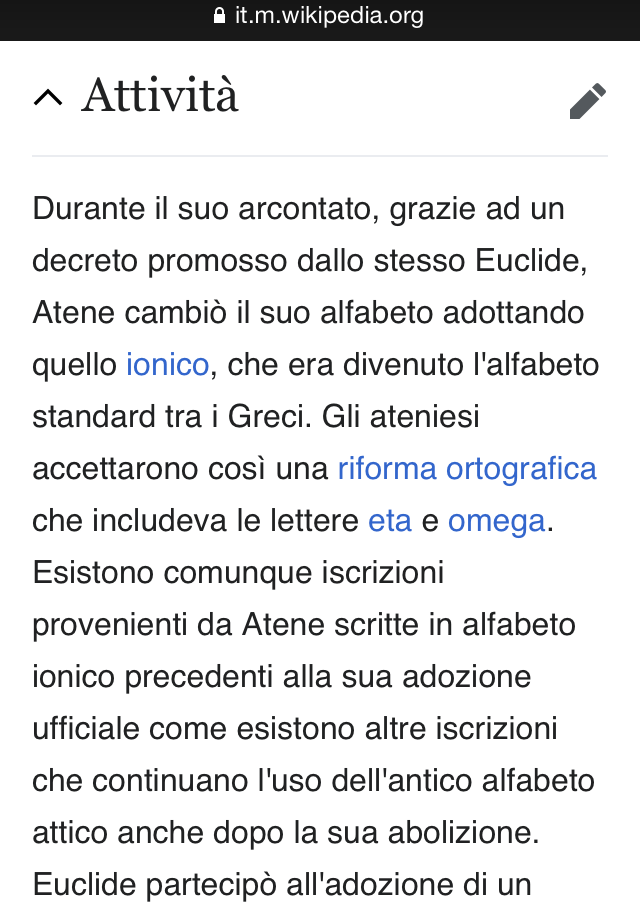 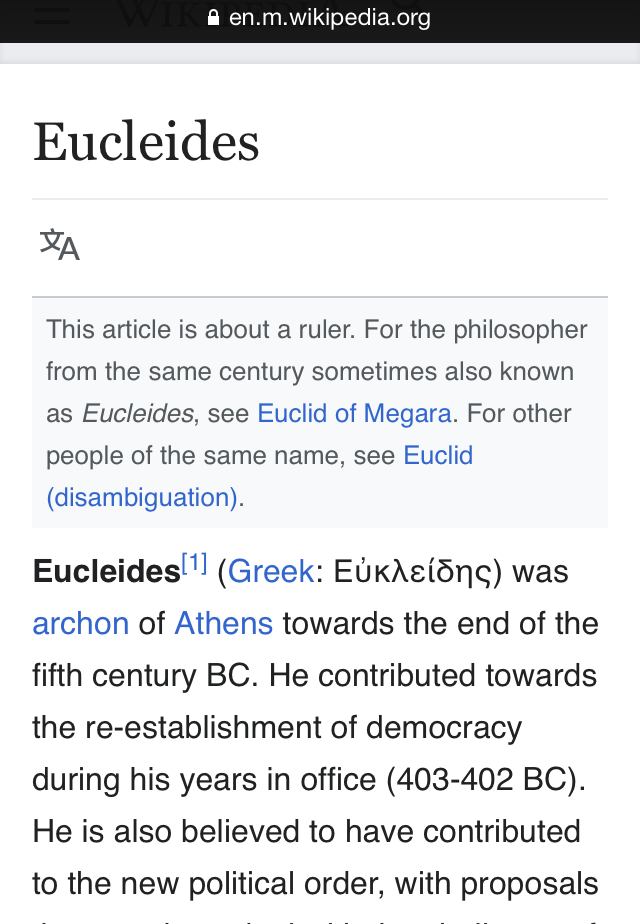 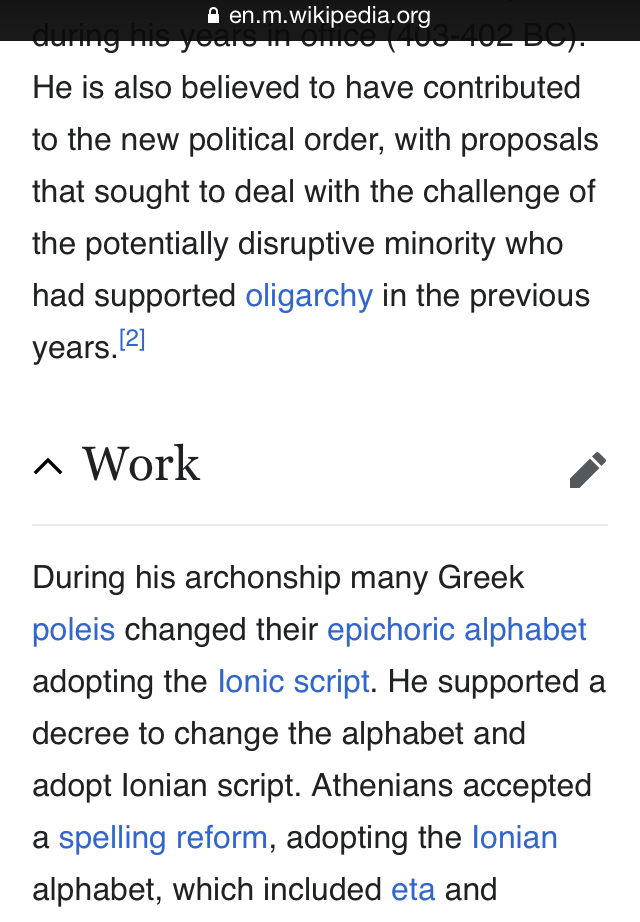
And Wikipedia, while that page may not be considered credible, 100% historically confirms that Euclid introduced the alphabet
"koine" in 403 BC, they there write: "Ionian alphabet", and even the Adzeians ( Danai's) additionally introduced 2 "their" letters: "eta" and "omega" - "o'' soft, it means in makedonian.
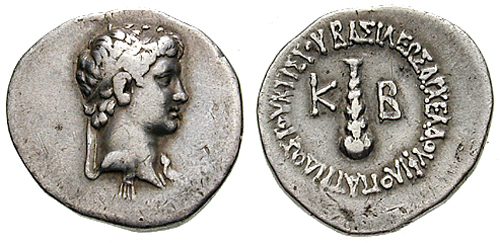 Makedonian coin of Vasileos Archelaoy FIRST Makedonian coin of Vasileos Archelaoy FIRST
Who will they lie, the Makedonian ruler Vasileos Archelao FIRST who was the ruler of
Makedonia from 413 to 399 BC on the coins rather uses "o'' soft - so called today
''omega''.
.
 
Danai's god of light ADZE
 ADZE ADZE
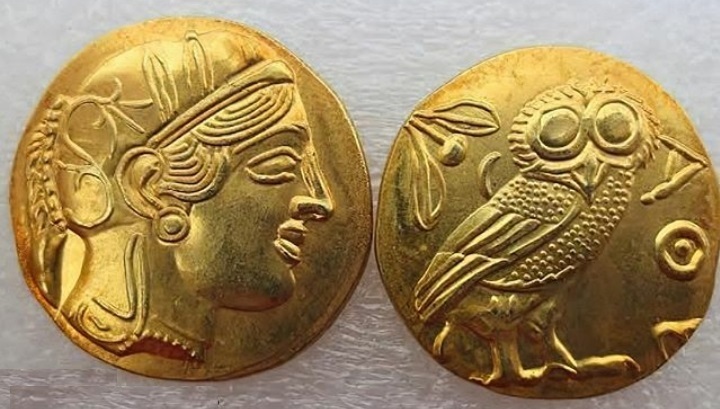 ADZE ADZE
Adzeians (Athenians - Danai) coins with the letter "koine", an astronomical difference with the Makedonian
coins.
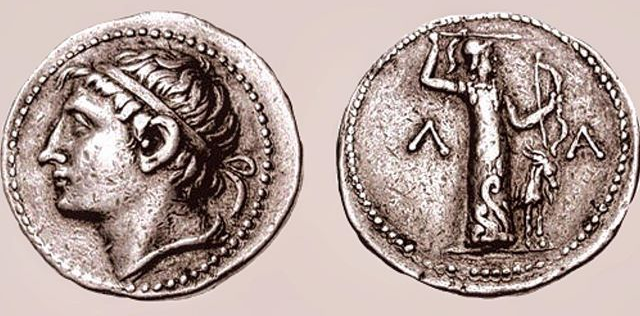 Coin of Spartan
avahto Kleomenes 3-th. Coin of Spartan
avahto Kleomenes 3-th.
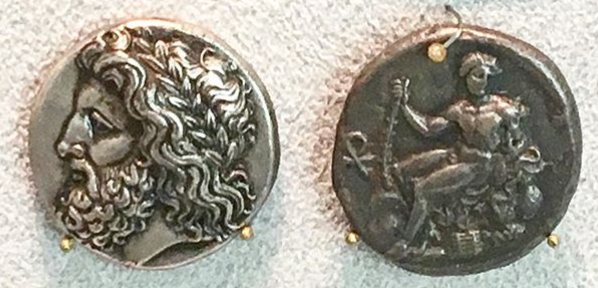 Coin
from the Arcadian League Coin
from the Arcadian League

The Arcadian League
The
not - assimilated pelasgians Metsanion, Argos and Megalopolition,
made the Arcadian League, to counter spartan expansion.
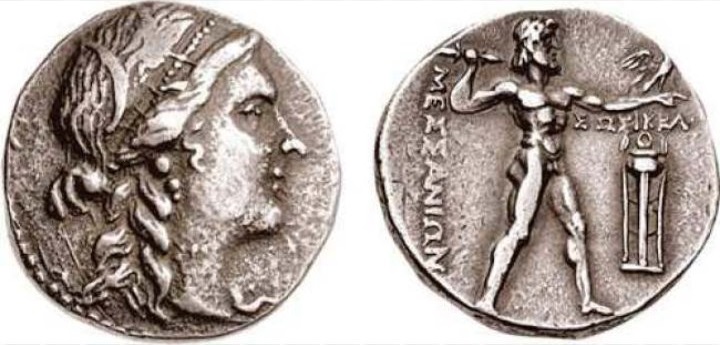 Coin from Metsanion (not Messenia) Coin from Metsanion (not Messenia)
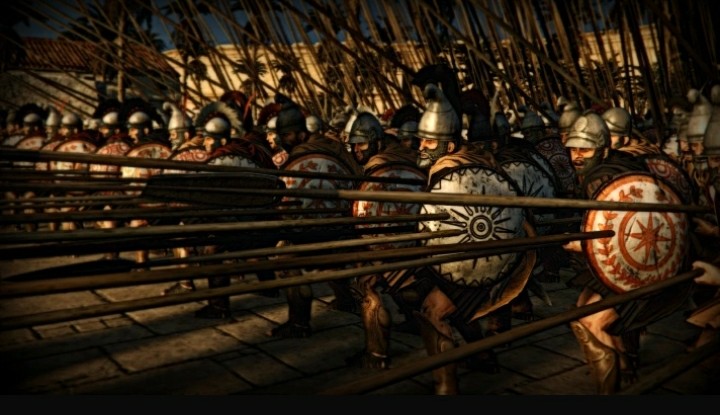 Makedonian
phalanx Makedonian
phalanx
In
the battle of Sellasia 222 BC, Spartans were totally crushed
by Makedonian phalanx, Spartan king escaped
in exile in Egypt, and Sparta no longer represented a
military force.
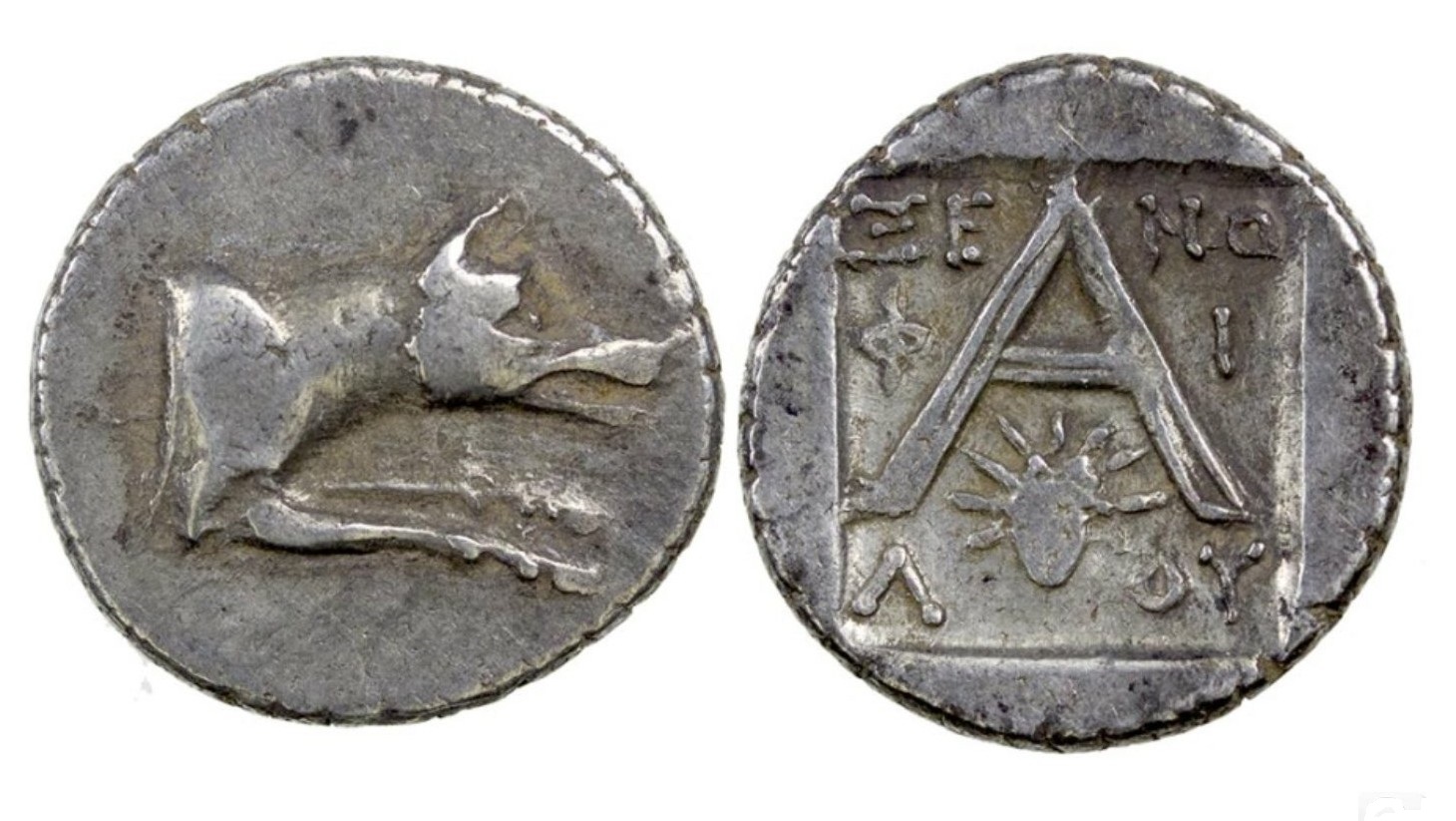 Coin
from Argos
- Argeada Coin
from Argos
- Argeada
The
not - assimilated Pelasgians states, Metsanion, Argos and Megalopoliton, 345th
BC have asked to be part of the Amphictonia,
to protect themselves from Sparta, but they have been
rejected.
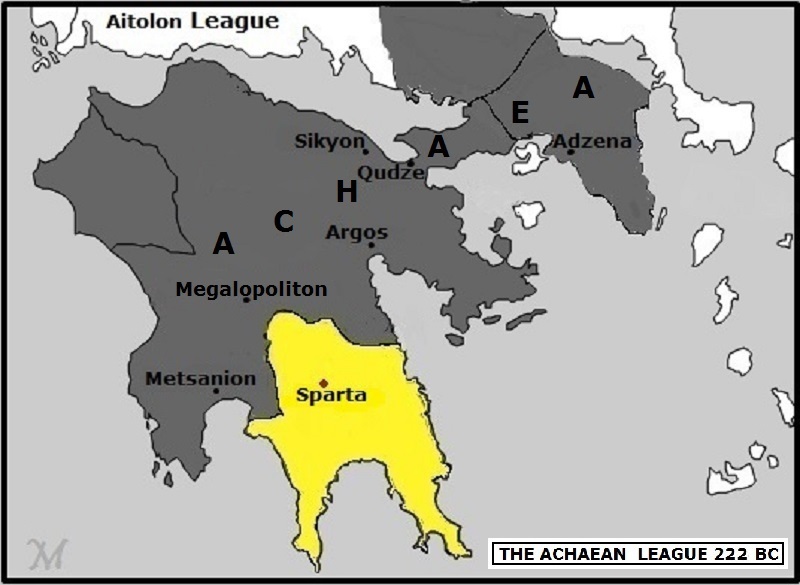
The Achaean League
When the Arcadia League fell the Achaean League was made, all the Peninsula of Dze (Peloponnese) united, to be defend of expansion of Sparta.
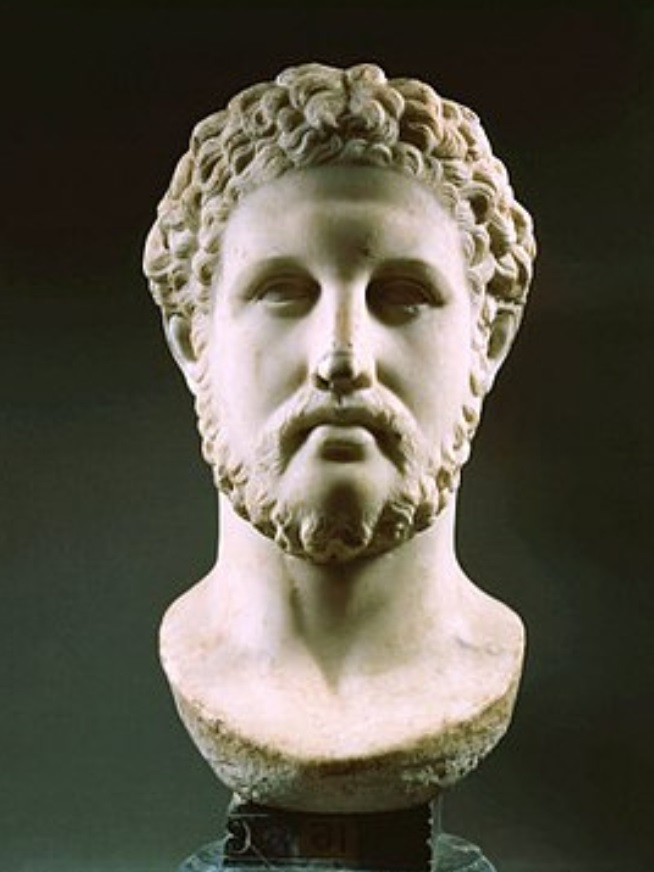 Makedonian
Vasileos Makedonon Philippoy Makedonian
Vasileos Makedonon Philippoy
For
this reason, they asked help from the Makedonian
Vasileos Makedonon Philippoy, who helped them in the spring of
344 BC.
And
Makedonian Vasileos Antigonoy THIRD, totally destroyed the
military force of Sparta, their avahto Kleomenes 3, escaped
in Egypt.
END
OF SPARTA, arrived when the Albanian - Avars expelled the the rest
of spartans 1000 habitants into Sicily in the 7th century.
So
as you see there are no "Spartans" anymore in
Sparty than today only Albanians.
.

Dzena from
Makedonia - Arakleon (Herakleon), founder of the city was Makedonian
Vasileos Makedonon Philippoy,
in Republic of Macedonia.
 Coin Adze Danai's god of light ADZE 405 BC, the difference betwen Danais and
Makedonian is seen from space. Coin Adze Danai's god of light ADZE 405 BC, the difference betwen Danais and
Makedonian is seen from space.
Ancient Mythology was stolen
by Danai's from the Makedonians.
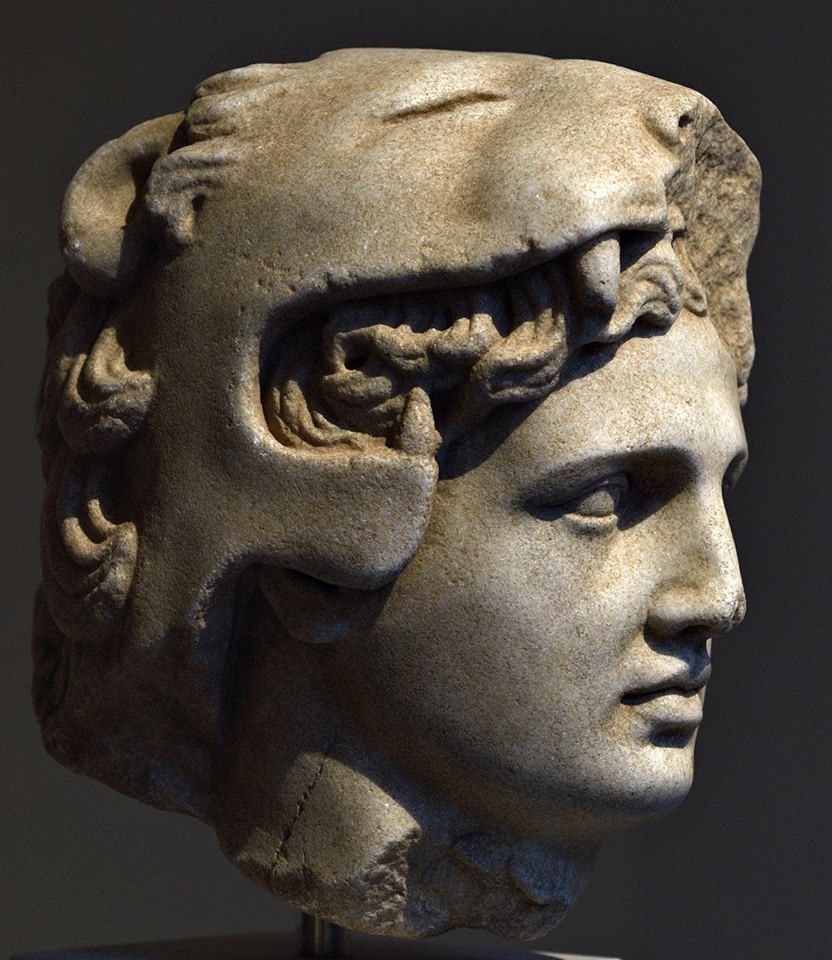 The Vasileos
Makedonon Alexandroy, Vasileon of Vasileondon
Makedonia - private collection The Vasileos
Makedonon Alexandroy, Vasileon of Vasileondon
Makedonia - private collection
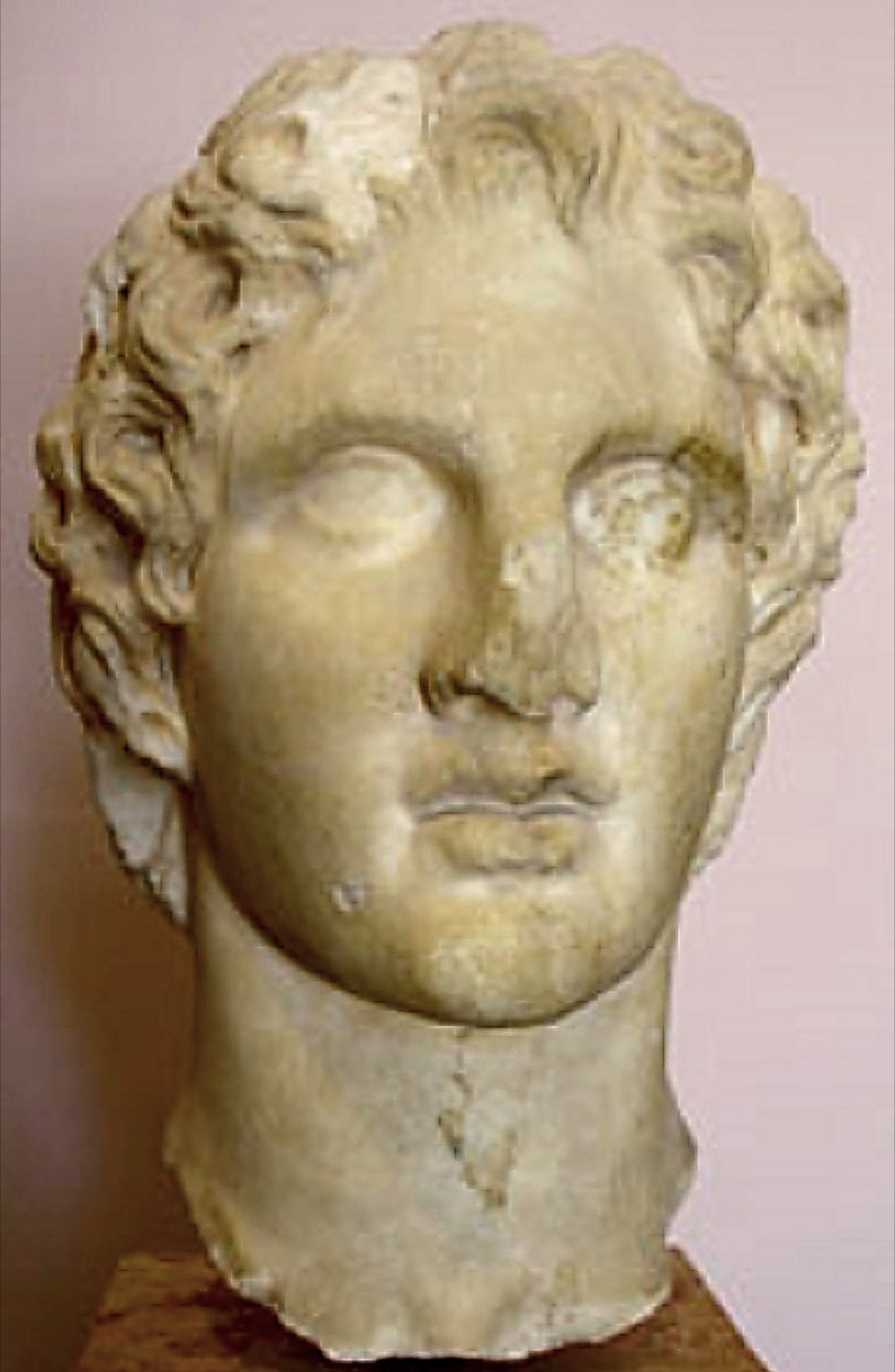 The
Vasileos Makedonon Alexandroy, Vasileon of
Vasileondon Makedonia. The cultural and historical wealth of
Makedonia sacked from all over the world in private collections and museums. The
Vasileos Makedonon Alexandroy, Vasileon of
Vasileondon Makedonia. The cultural and historical wealth of
Makedonia sacked from all over the world in private collections and museums.
A little about Payonia, according to the evidence, and the Payonian coins are the proof, it can be noted with certainty that that country was one of the largest countries in Dzeia - Asia (Euro - Asia) in antiquity, and it is hidden, Scythia has the same fate, but for Scythia on another occasion.
As proof that there was a Great Paionia, there are Payonian coins, although from different territories and times. Every nation in antiquity had its own "sacred" animal, with which they identified, some even called themselves after their sacred animals. The sacred animal of the Payonians was the yak (the bull), so by following the yak on the coins, we find out how far Paionia was.

A colony from Xenia, the city of Xenon, in that part of the Macedonian Peninsula of Sna (Europe), were not Illyrians.

^The oldest Payonic mint with the alphabet''KOINON MAKEDONON''^
 YEKON or REKON,the text is very difficult to read, a coin found in the ancient city today archaeological site Astipon (Shtip) - Makedonia, dated 460 BC. YEKON or REKON,the text is very difficult to read, a coin found in the ancient city today archaeological site Astipon (Shtip) - Makedonia, dated 460 BC.
 Coin from Bellas - Makedonia Coin from Bellas - Makedonia
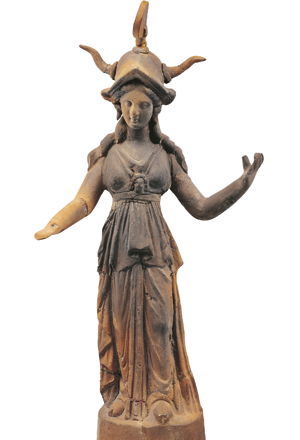 Priestess from Bellas, Makedonia Priestess from Bellas, Makedonia
Most likely because Payonia was very large they had local rulers, this is proof that it was the first confederation in Dzeia (Europe).
 Payonian coinage, from the local ruler along the river Strumuion, ''GITA''. Payonian coinage, from the local ruler along the river Strumuion, ''GITA''.
It is evident that many do not know that the name of the city with the two banks, that the original name is not "Istanbul" or "Vuzantion", but Py. As we can see, the bull was a protective symbol of the city. There were bulls everywhere on the Payon coins, examples:

Coinage from In 340 - 320 BC. from Py
The ancient name of the city was Py, not "Vuzantion", the name given to it by the Romans.

Vuzantion, Roman mint 60 BC..
 
A small part of coins from the city of Py
.
We finish again with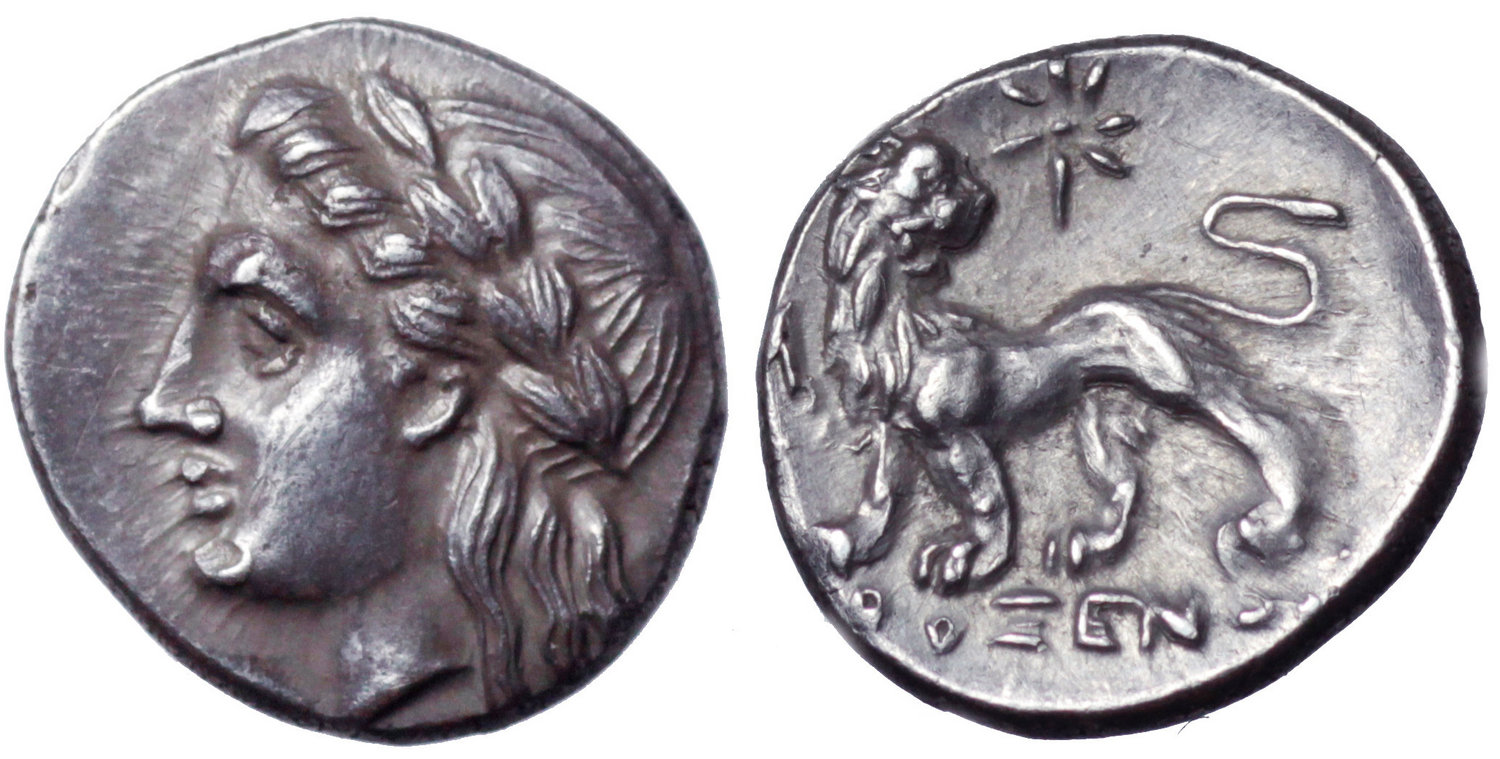 KSENON - a coin from XENIA (Ionianot Ionia, which is a later name, probably of Roman origin) - Dzenica (Asia Minor), confirms that there were no Danaans in Ionia, the coins are proof. There is a coin and a bust of a one Danai from Anatolia, Turkish archaeologists found a coin and a bust of a man with an African appearance, but only God knows how they got there. KSENON - a coin from XENIA (Ionianot Ionia, which is a later name, probably of Roman origin) - Dzenica (Asia Minor), confirms that there were no Danaans in Ionia, the coins are proof. There is a coin and a bust of a one Danai from Anatolia, Turkish archaeologists found a coin and a bust of a man with an African appearance, but only God knows how they got there.
It is possible that Payonia and Scythia were one and the same, but that needs a lot of additional evidence.
.
MAKEDONIA AND THE SURROUNDING COUNTRIES IN 808 BC
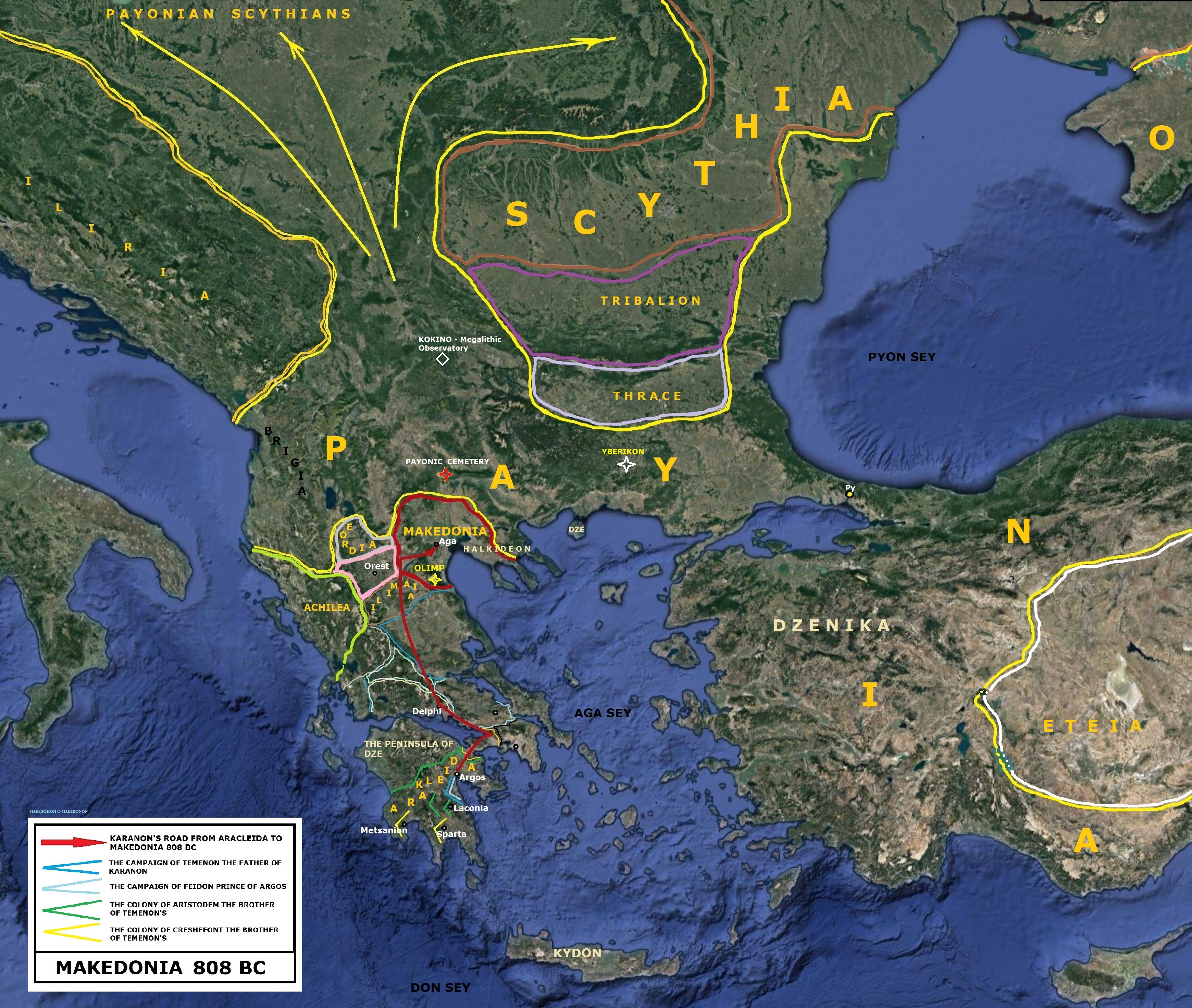
KARANON'S ROAD FROM ARAKLEIDA TO MAKEDONIA 808 BC

MAKEDONIA 678 BC
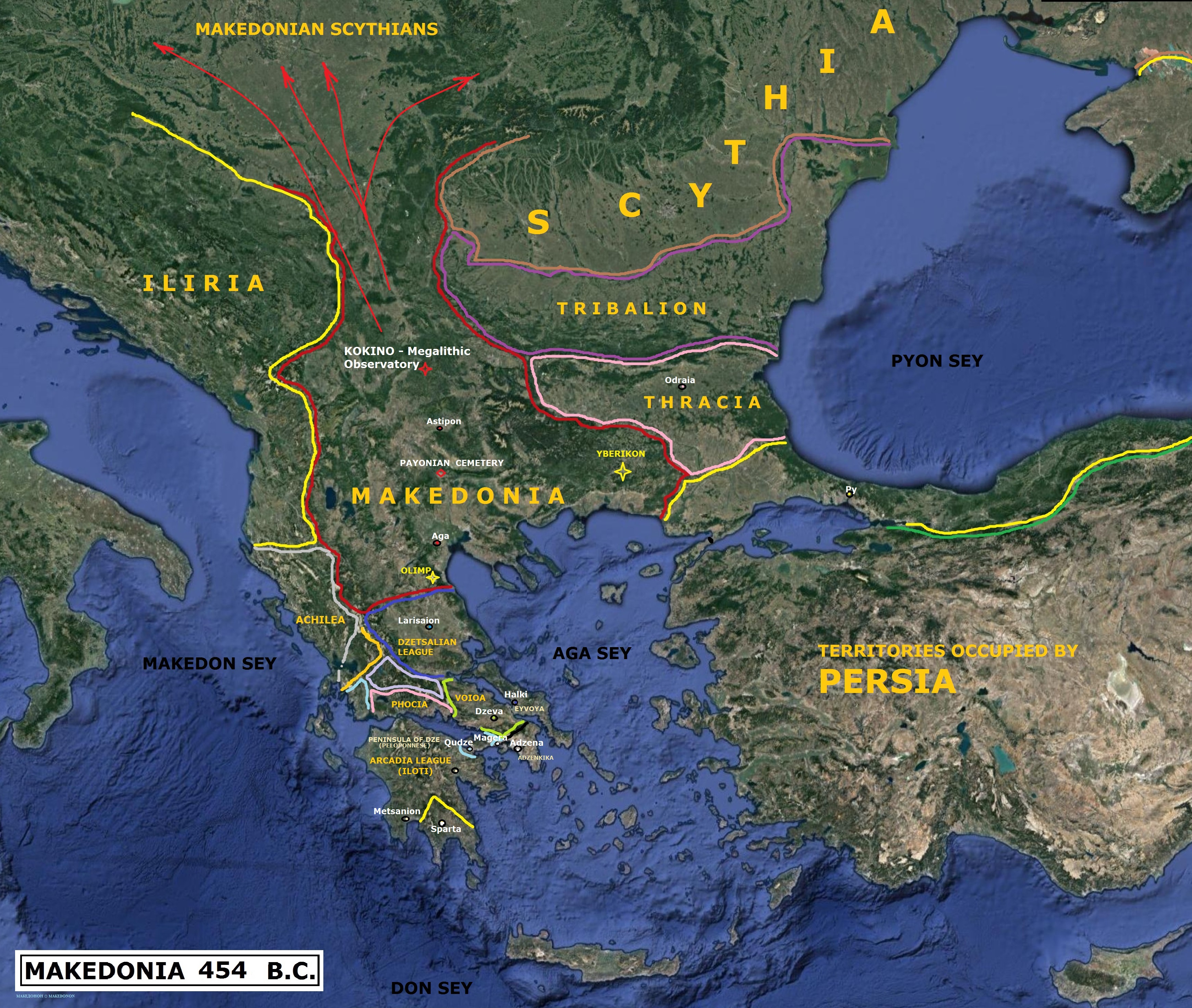
MAKEDONIA 454 BC
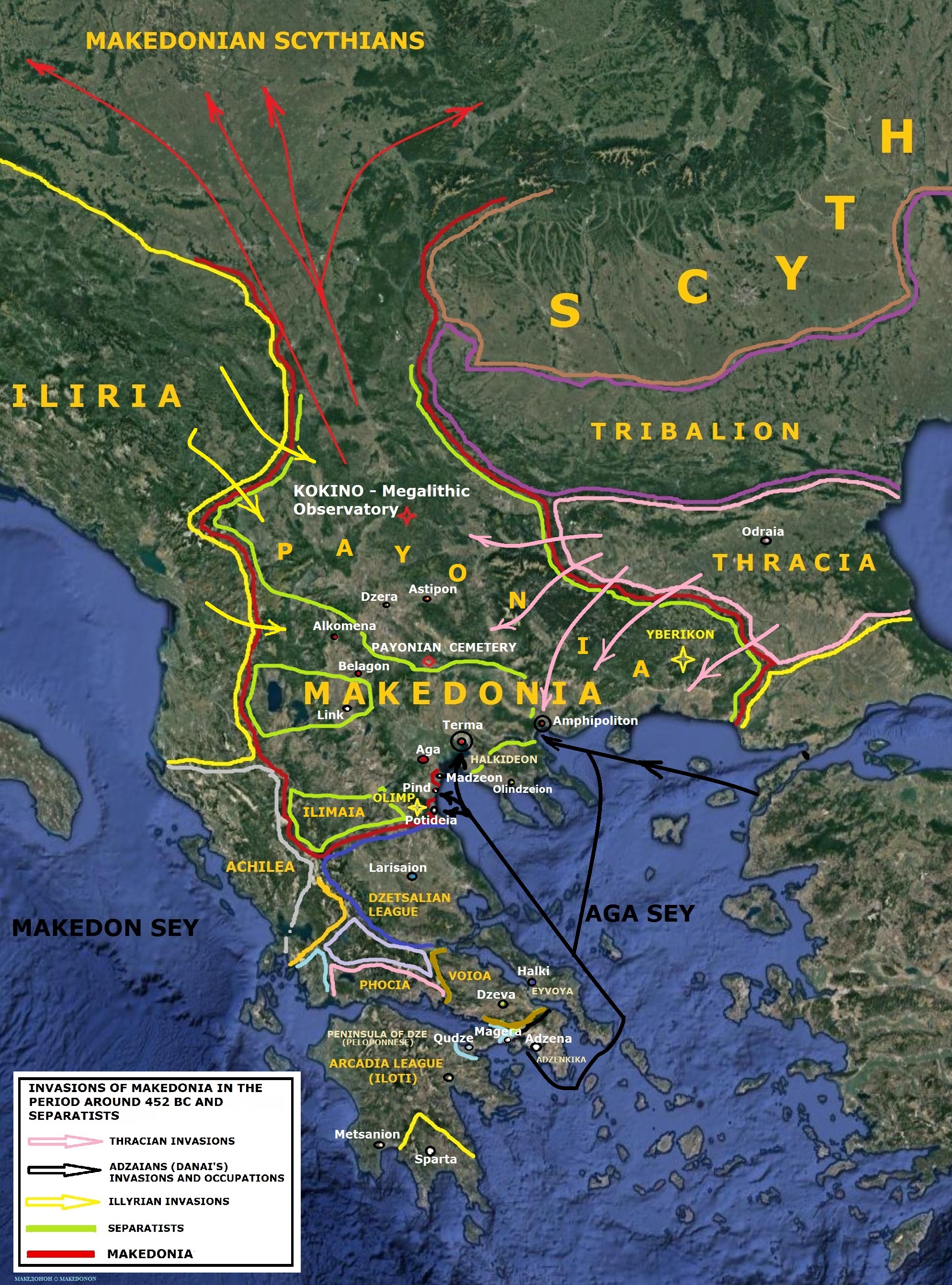
INVASIONS OF MAKEDONIA IN THE PERIOD AROUND 452 BC AND SEPARATISTS
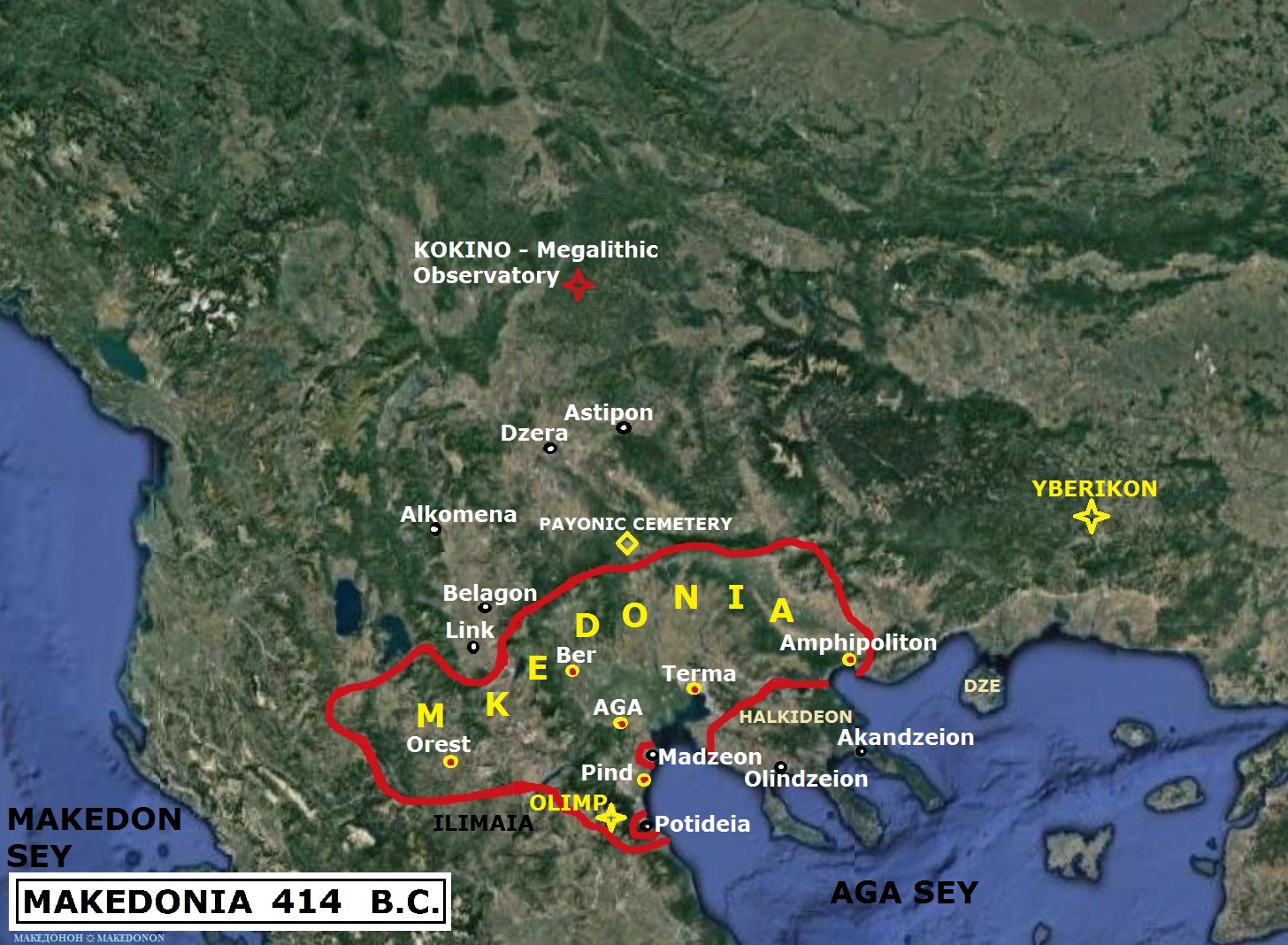
MAKEDONIA 414 BC
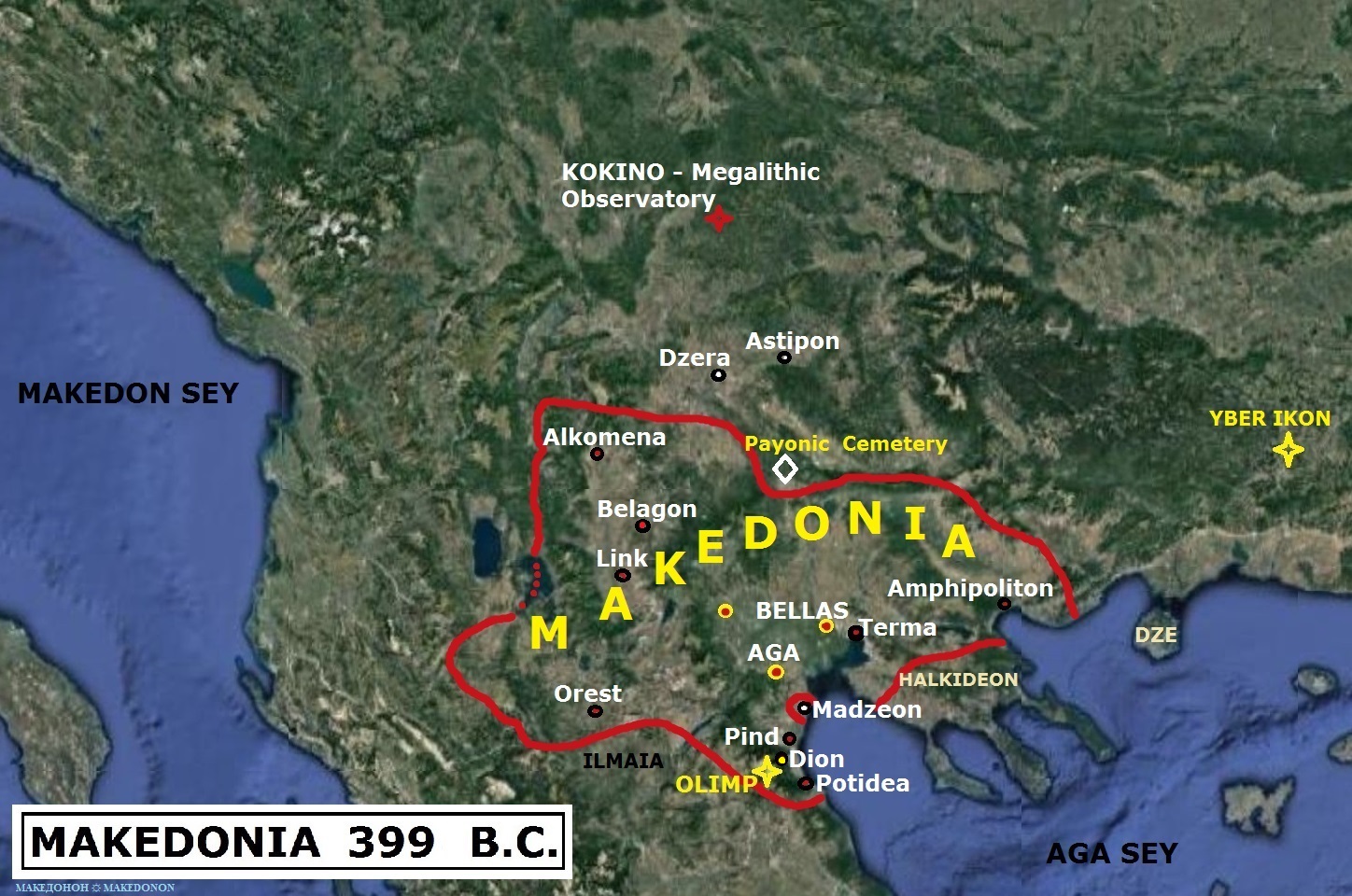
MAKEDONIA 399 BC
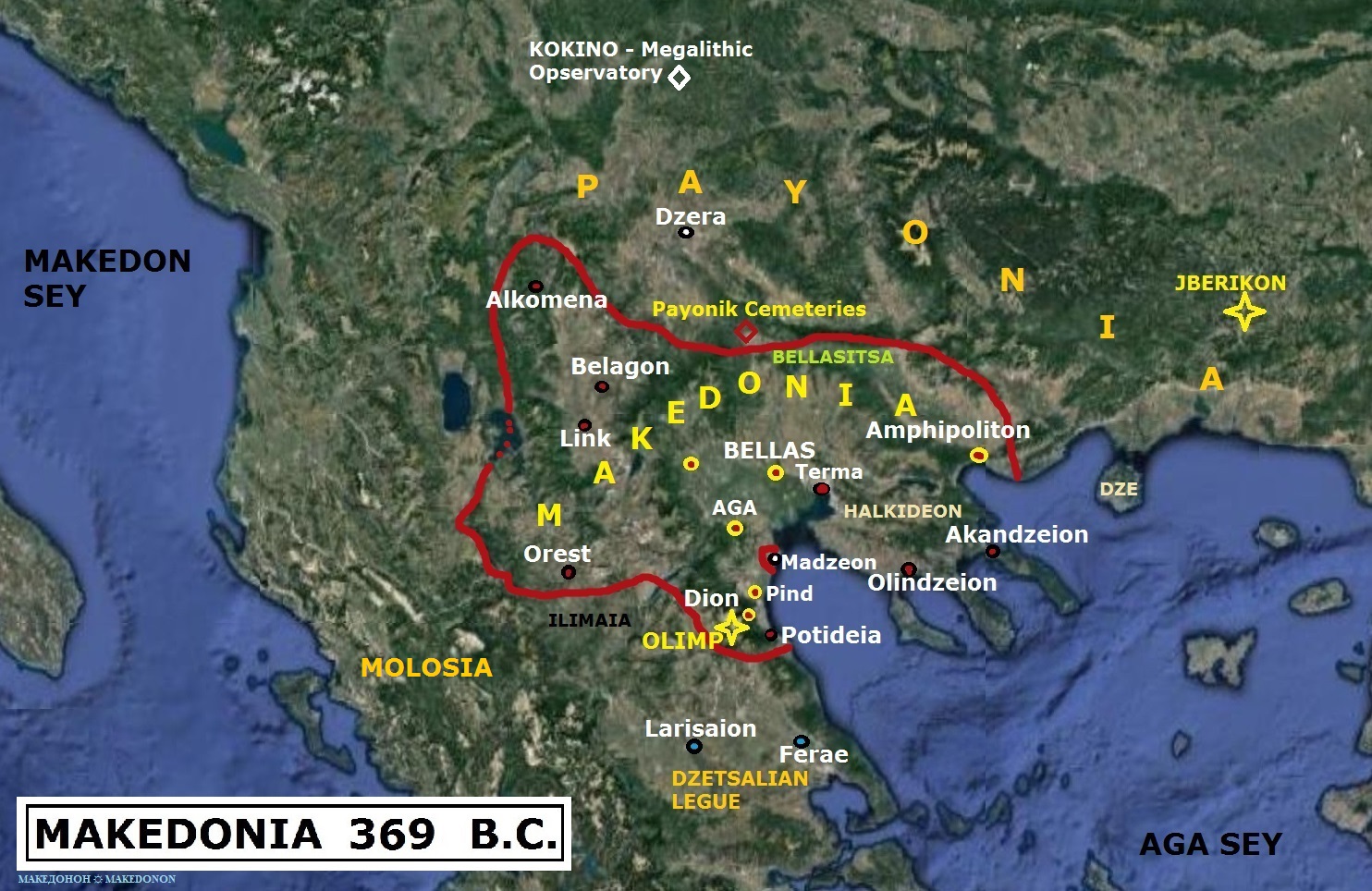
MAKEDONIA 369 BC
.
.
.

Copyright © Makedonia is ALL ☼ MAKEDONIAeSE.com ☼ All rights reserved
Copyright ©
Makedonia is ALL ☼ MAKEDONIAeSE.com ☼ All rights reserved
.
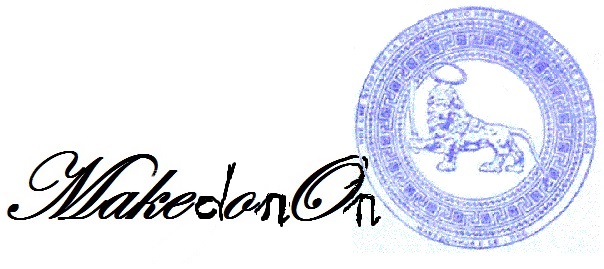


  
Vasileon
Makedonon Alexandroy gave it the world to the
Makedonians, and they how returned it to him,.. they
poisoned him, destroyed his family,... and
today instead Makedonon (he is the
Makedon) erase
his real name call
it ''veliki'' or ''the great'', while
the state of Latin they
call it ''Мacedonia- Matzedonia'' - name
that foreigners have given them, and
they do not understand it and do not
understand it ,.. and
yes I
would forget,... they permit someone else to choose her name of the state.
Will
anyone be found to "fix" things?
'' ,.. THE
LION'S SKIN OF BLOOD, IT WILL BE ROTTEN
BY BLOOD AND WILL BE DO IT IN PIECES.
HOW
MANY GIANTS, THEY WILL BE MADE BY SELFE DWARFS, SO
MANY THIEVES, WHAT
THEY WILL STOLE AND
THEY WILL SPOIL IT THE
LION'S SKIN.
EVERYONE
WILL WANTED HER, EVERYONE WILL SHE HER CRUSHED IT, A STUPID FROM BIRTH WILL
DEMAND IT FOR HER.
THE
PURPLE WILL RIP AND MAKE A DIRTY OF BLOOD AND
MUD.
A SHAMELESS ARMY WILL CRUSHED IT THE CULTURED
MAN AND
WOMAN FOR SHAME.
TO THE THE POPE WILL BE GIVEN THE PURPLE FOR
LYING.
THE CHILDREN OF THE WOMAN WILL BE KILL AND
WILL BE GRILLED.
THE
SON OF THE MOON WILL LAUGH AND THEY WILL LAUGH
NEXT TO HIM.
THEY
WILL PRAY AND CRY, WITH
HIS FATHER'S KNIFE, WHAT
IS LEFT FOR HIM, WILL
WAVE IN THE DARKNESS.
THIRTY
AND SEVEN DAYS WILL PASS WHEN
THE MOON VISION WILL BE EXTINGUISHED AND THE PURPLE WHO PASSED THE
BLUE SEEN IN THE SKY, WILL RETURN AND HE WILL THRONE FOR THE
CENTURY.
ROTTEN BY FIRE, THE CHILDREN OF THE GREAT MOTHER (
THE CHILDREN OF THE WOMAN), THEY
WILL CLEAN THE SICK WIND.
WHY
1000 YEARS ARE LIKE YESTERDAY. HERE
ARE THE SAME REPETITIONS OF THE TIME PASSING,
AND REMAIN YOU, LIKE PHOENIX REPEATED FROM ASH, AS SPIRIT AND AS REASON TRUE IN THE DISTANCE....''
|

.
На ден 03 / Ma / 2009, е конструирана страната на Македонија е СЕ: http://www.makedonijaese.com/. Тој ден и се смета за роденден на организацијата Македонија е СЕ.
На ден 16 / Жустар / 2016, е конструирана peзepвнaтa страната на Македонија е СЕ: http://www.makedoniaese.com/

Уште на самиот почеток интернет страницата на Македонија е СЕ, бидејќи зборува за Вистинската Историја на Македонија со историски факти, но и актуеллни политички настани, СТАНУВА ТРН во очите на сите непријатели на Македонската Држава, ма и трн во очите на некои политички организации во Р. Македонија.
Страницата на Македонија е СЕ, е конструирана како резултат за потребите на Македонскиот Народ и друѓите да се запознаат со Вистинската Македонска Историја, политика и болното Македонско прашање.
Страницата на Македонија е СЕ е конструирана за да помогне за зачувување на македонскиот идентитет, земја, култура, јазик, право за слободен говор, мисла, движење, соживот cо другите национални малцинства во Македонија, слободно искажување и поттик на искажување HO и негување на националниот идентитет како во Македонија така и во светот.
.
|

ГАСНУВА
- АЛЕКСАНДАР
МАКЕДОНСКИ

Наскоро, ПОСЛЕ ПОВЕЌЕ ОД 2200 ГОДИНИ ЌЕ ИМАТЕ МОЖНОСТ ДА ГО ИМАТЕ МАКЕДОНСКОТО СОНЦЕ НА ФИЛИП МАКЕДОНСКИ, СО ПРАВИЛЕН ОБЛИК И ЛИК, ЦЕЛОСНО ИЗРАБОТЕНО ОД УМЕТНИЦИТЕ НА МАКЕДОНИЈА Е СЕ
|
THE MAKEDONIAN
SUN OF THE MAKEDONIAN VASILEOS PHILIPPOY MAKEDONON
Македонија
е СЕ, се
залага за
нова химна: ''
Земјa Mакедонскa''
|

 
НИЕ СЕ
ДЕФИНИРАМЕ
КАКО
ЉУБИТЕЛИ НА
СЛОБОДАТА
ЗА НАС
МАКЕДОНИЈА Е
СЛОБОДАТА
АКО ИМА
МАКЕДОНИЈА
ЗА НАС
ИМА И СЛОБОДА
Копираит © Македонија е СЕ ☼ MAKEDONIAeSE.com ☼ Сите Права Задржани
Македонија е СЕ ☼ Партија на Народот на Слободата ☼ МС ПНС
Историја на Македонија
МАКЕДОН ИЈА
ΜΑΚΕΔΟΝΙΑ
MAKEDONIA
BACИЛEOH
 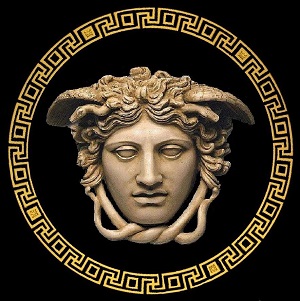  МАКЕДОНОН
МАКЕДОНОН

АЛEКCAHДРОЈ
Македонско Име вечно нема да загине.
Глава даваме, Македонија и Mакедонско име не даваме.
Од Македонија и Алекcандрoj Македонон, славeн Василeoн Македон нема да се откажеме.
Cлава македонска ќе повратиме,
Алекcандрoj Македонон славен Василeoн Македон обожaваме,
Македонија, земја нај мила уважуваме.
Малку сме на број, ЕЈ, ХЕЈ,
силни сме во бој, ЕЈ, ХЕЈ.
ЕЈ, Алекcандрoj, OJ, OJ,
ЕЈ, Македонон, OH, OH.
Алекcандрoj Македонон славен Василeoн Македон, нас не предводи.
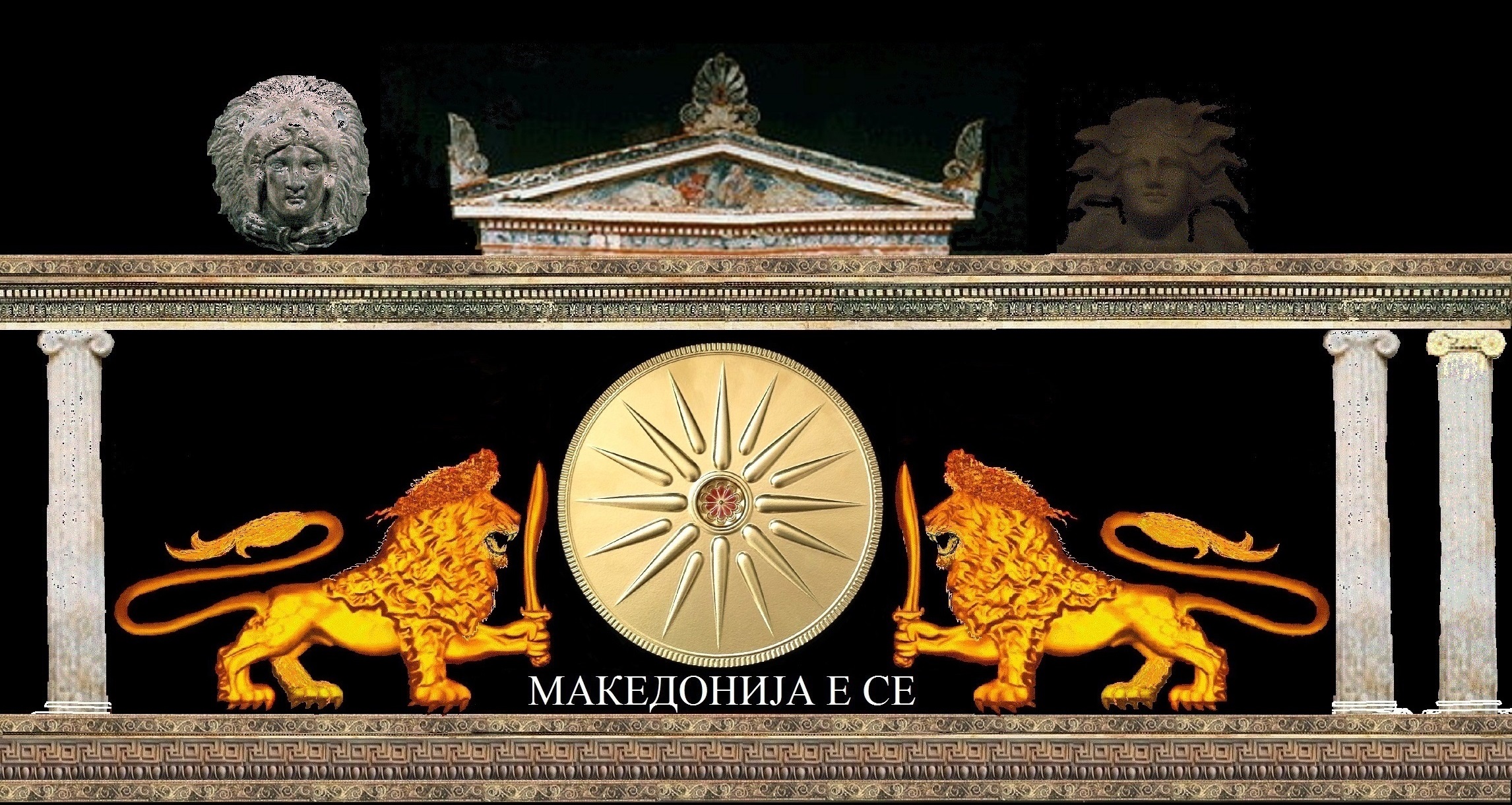
|
|
|



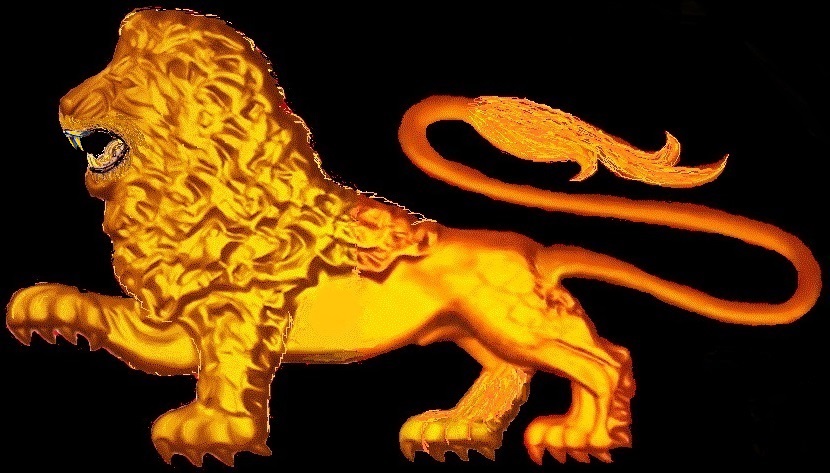


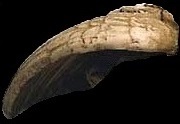























 ADZE
ADZE 














 ADZE
ADZE  Coin of
Coin of 
 Coin from
Coin from 



 The Vasileos
Makedonon Alexandroy, Vasileon of Vasileondon
Makedonia - private collection
The Vasileos
Makedonon Alexandroy, Vasileon of Vasileondon
Makedonia - private collection  The
Vasileos Makedonon Alexandroy, Vasileon of
Vasileondon Makedonia. The cultural and historical wealth of
Makedonia sacked from all over the world in private collections and museums.
The
Vasileos Makedonon Alexandroy, Vasileon of
Vasileondon Makedonia. The cultural and historical wealth of
Makedonia sacked from all over the world in private collections and museums. 

 KSENON
KSENON 




